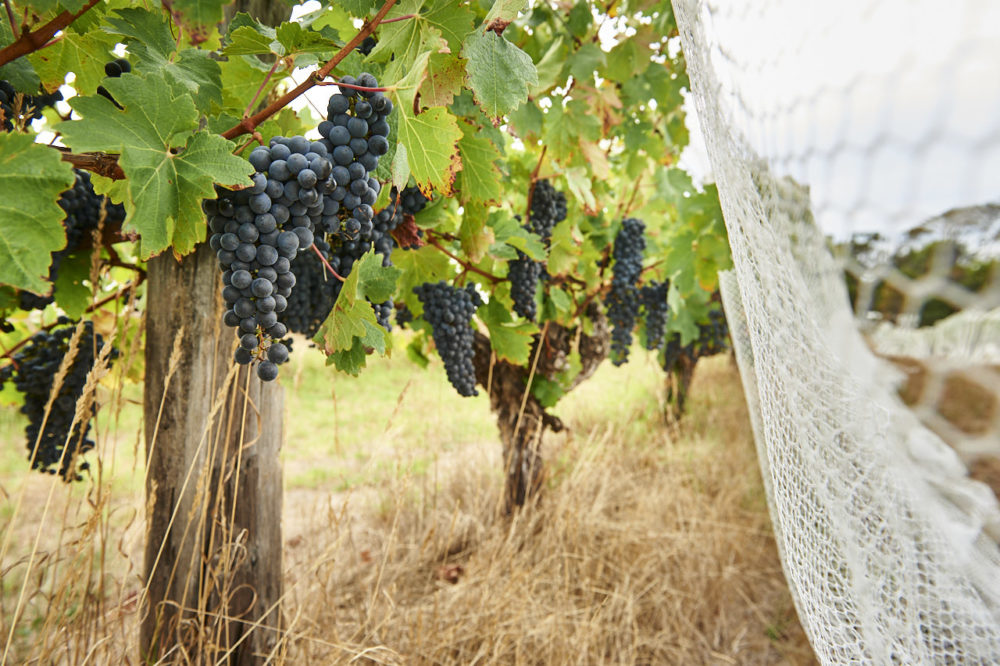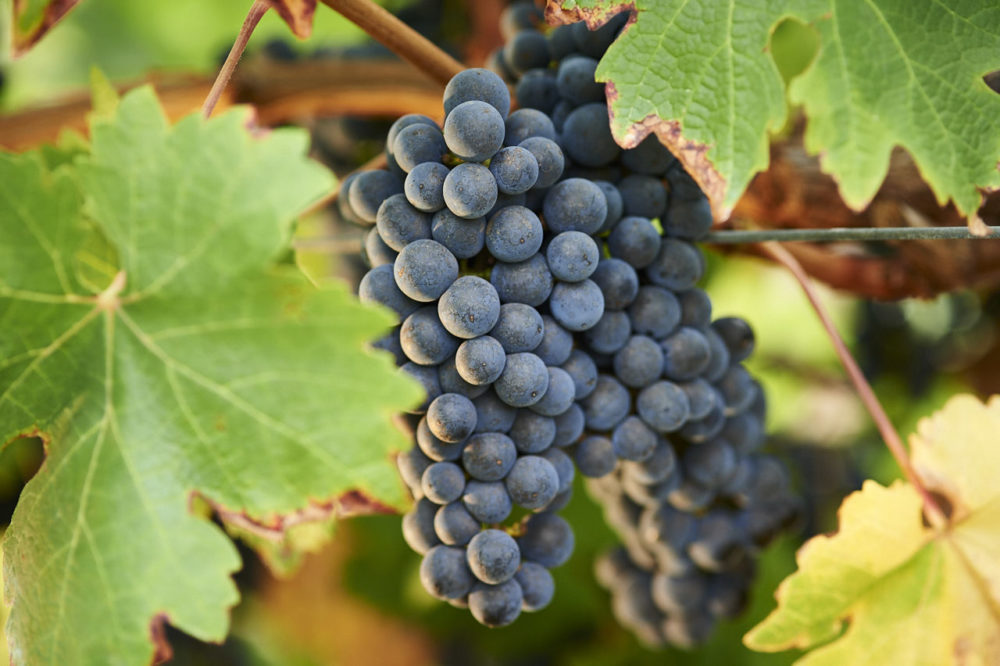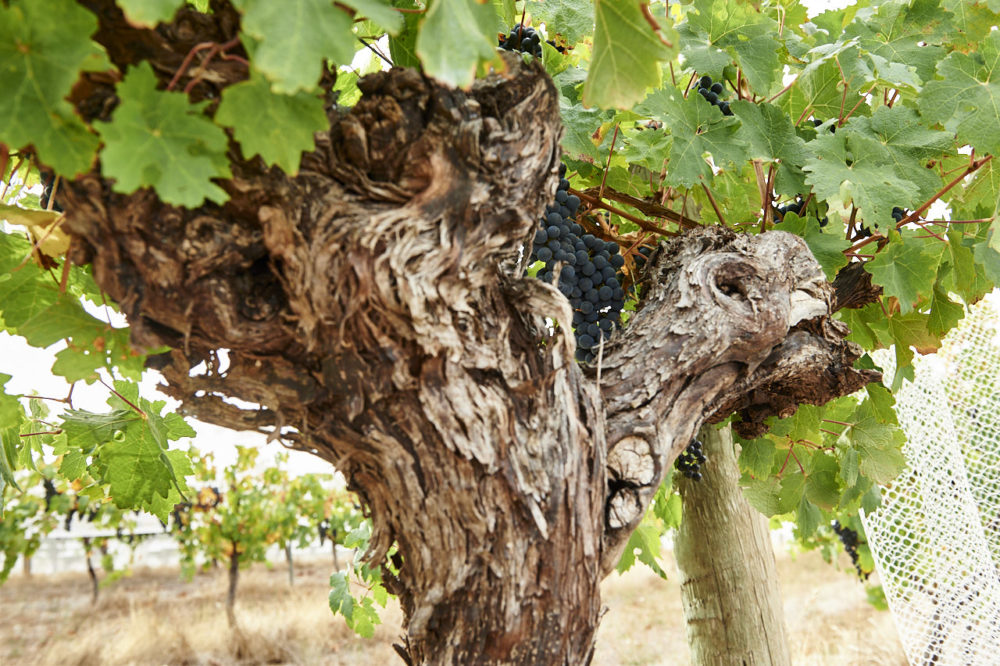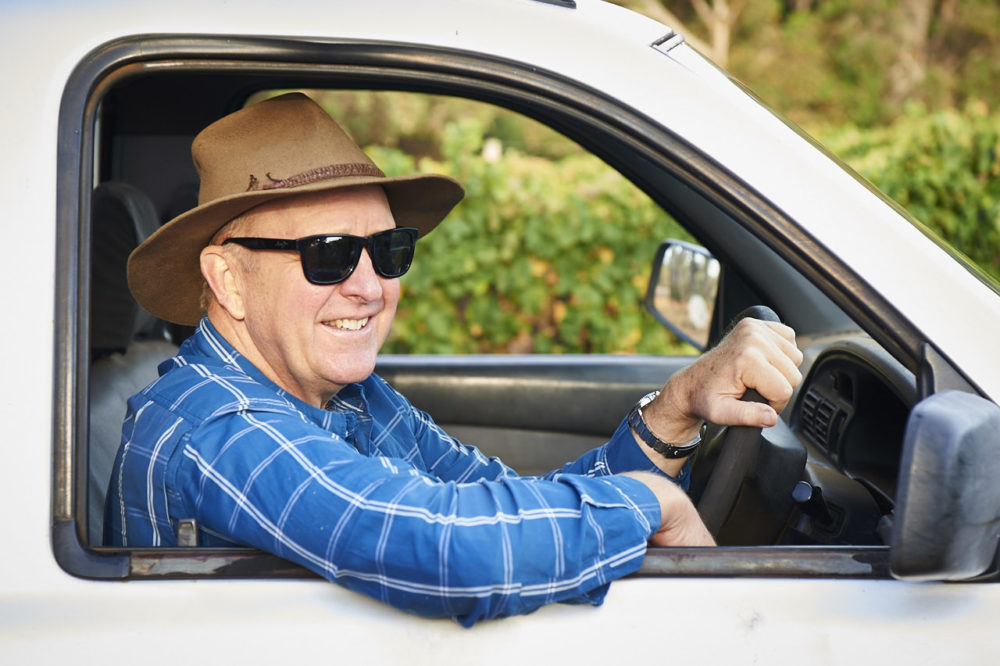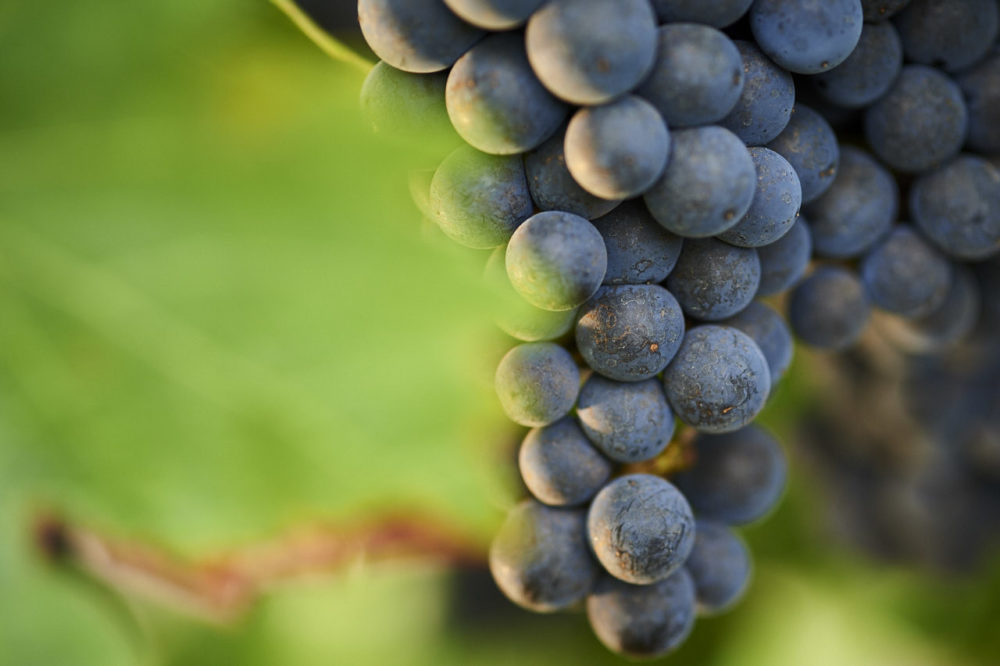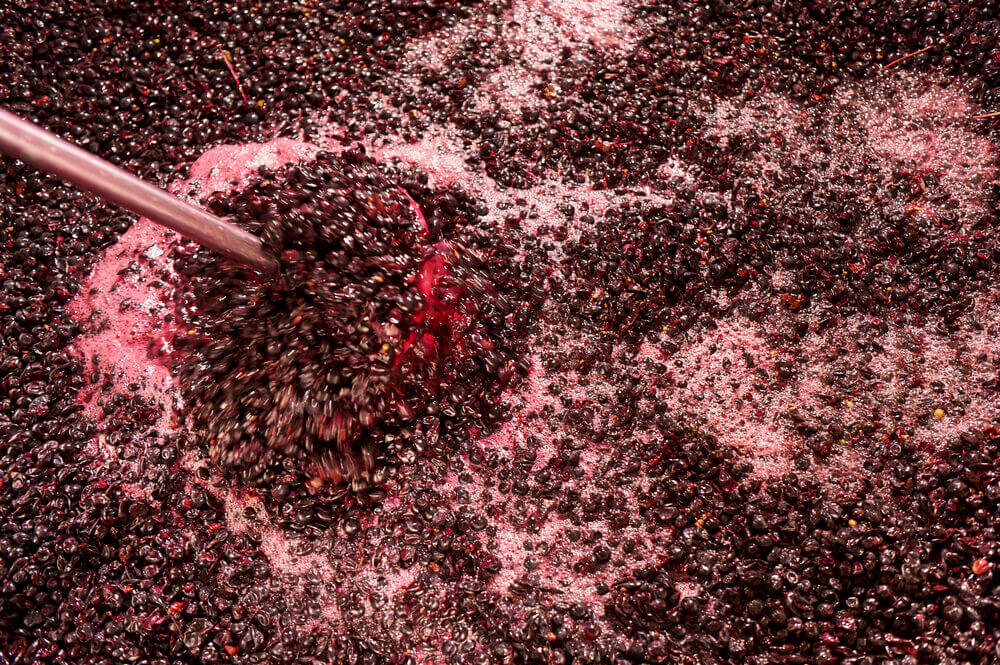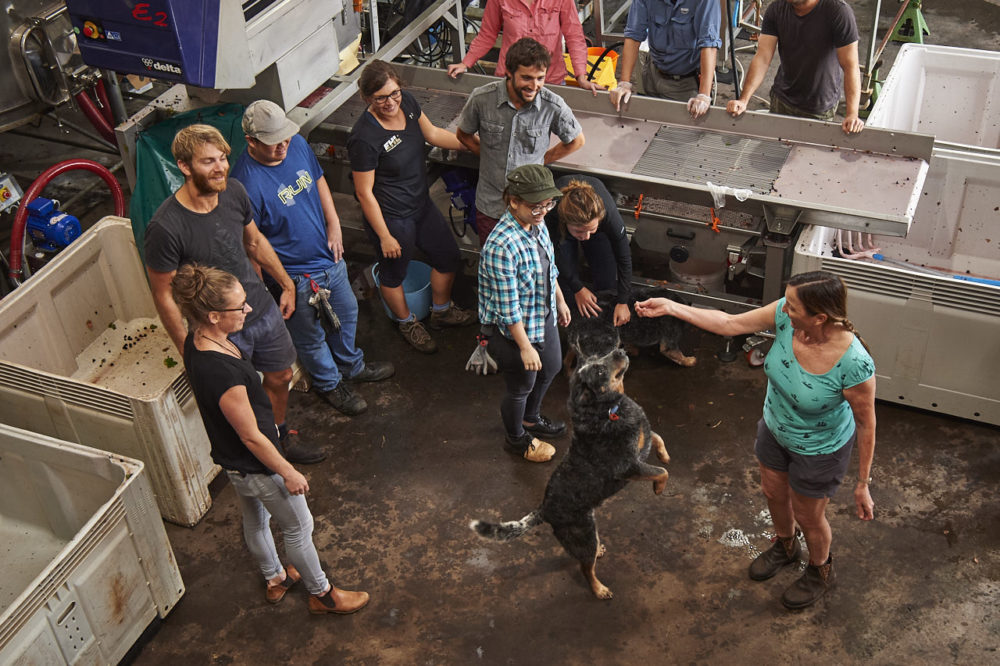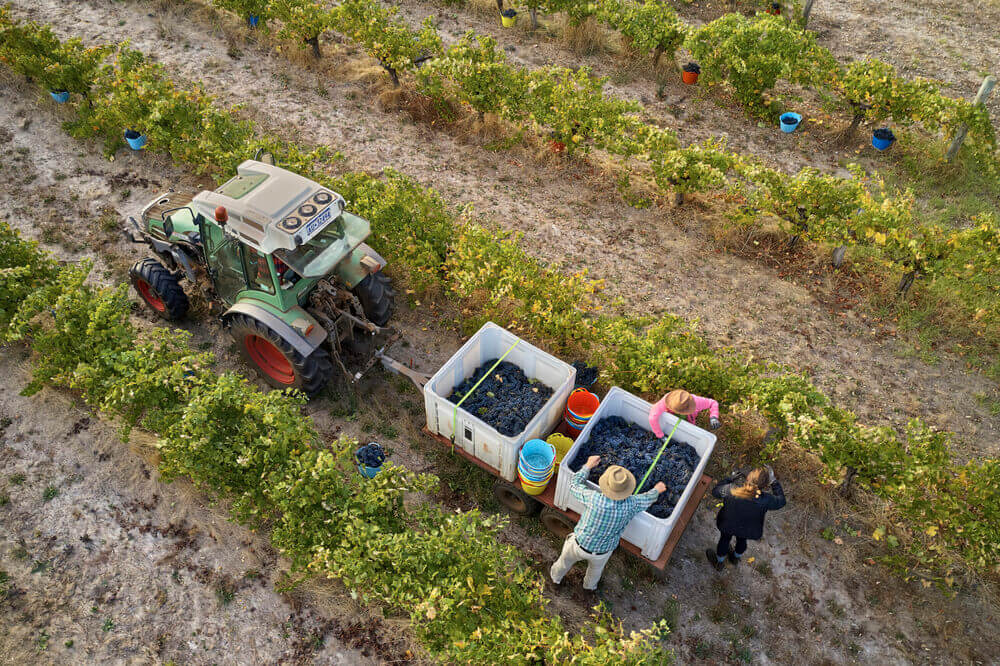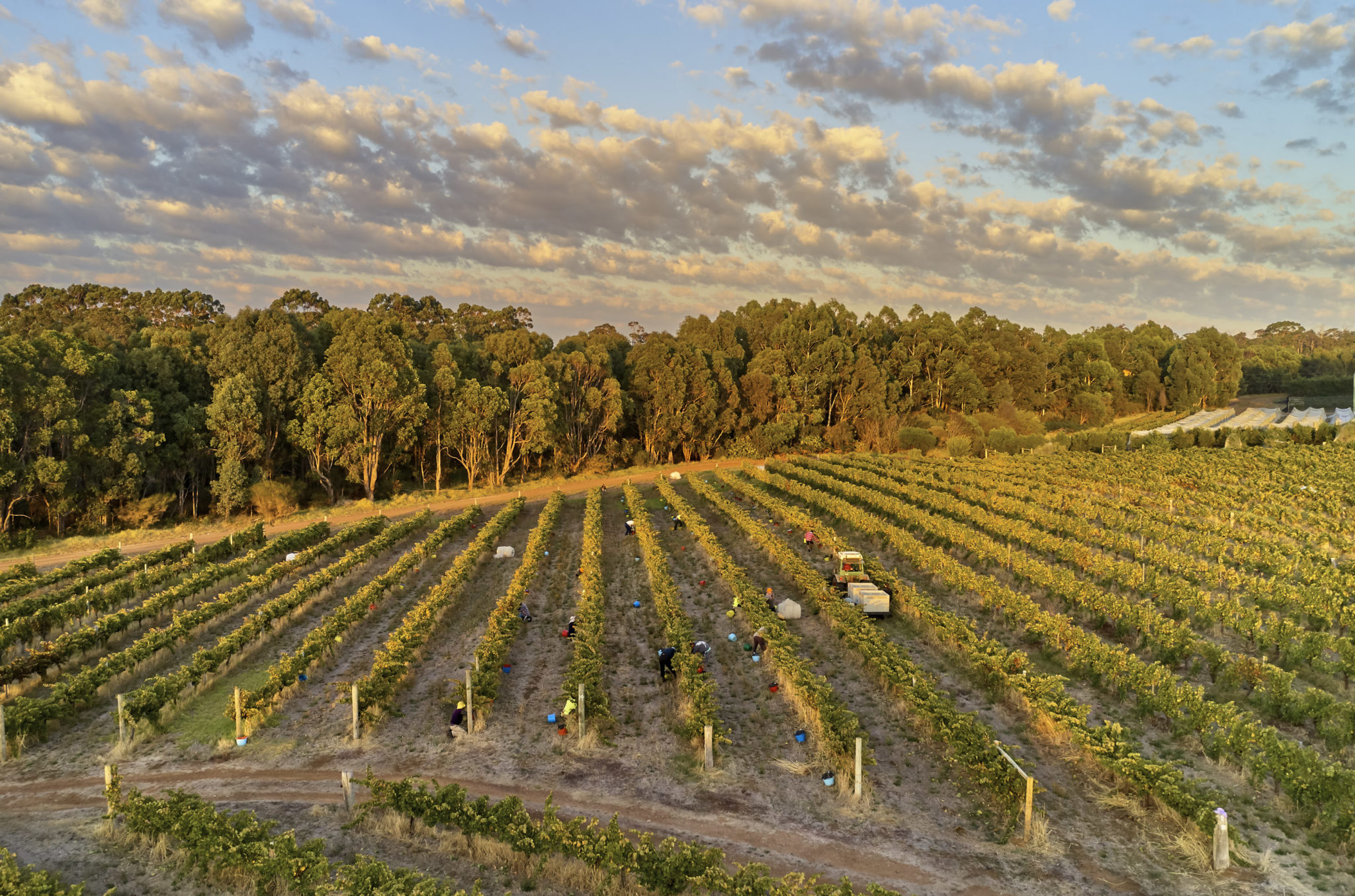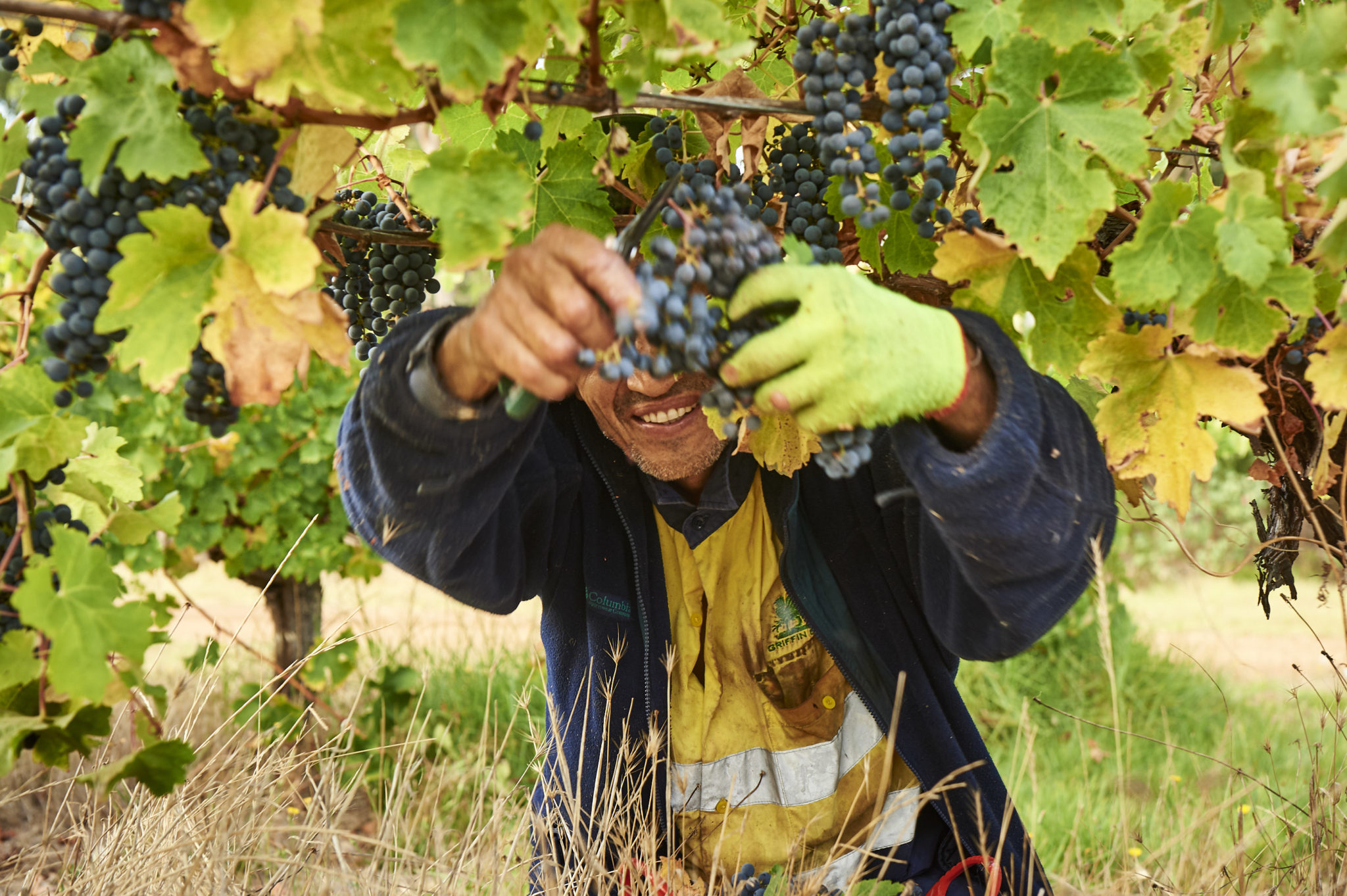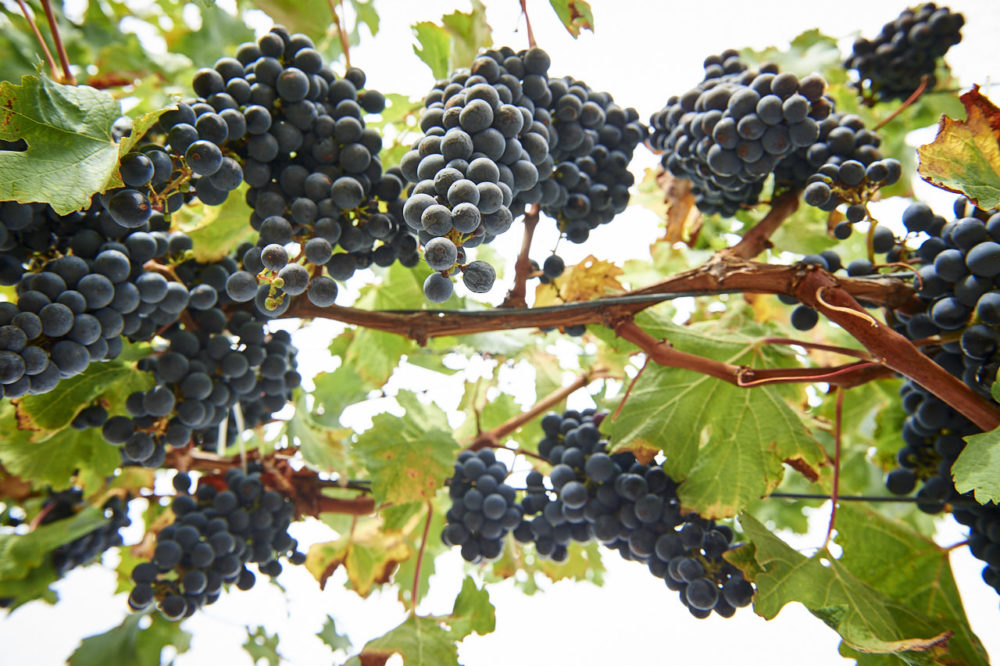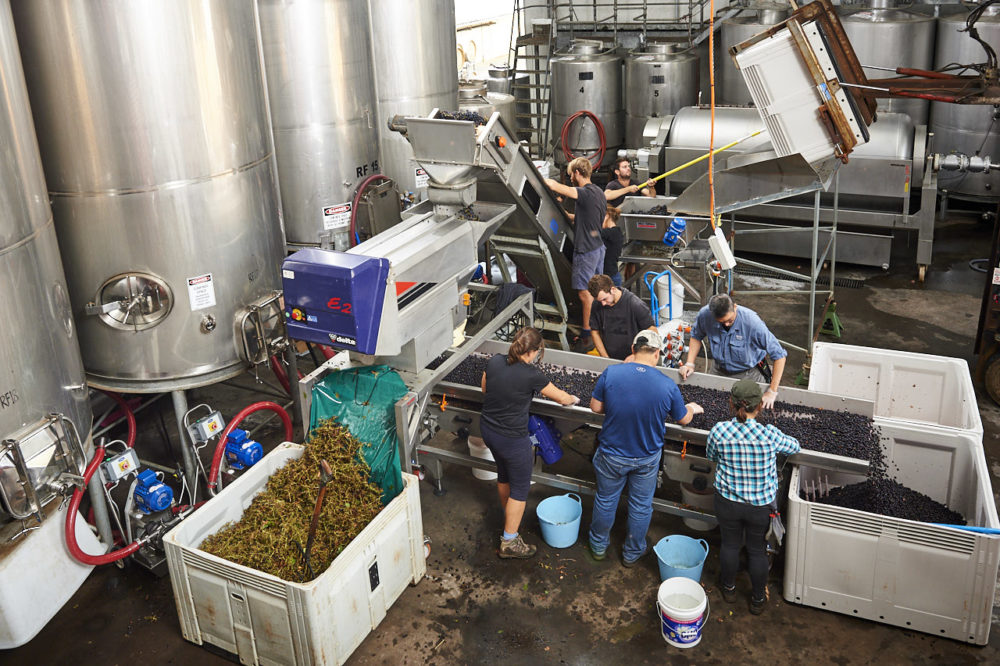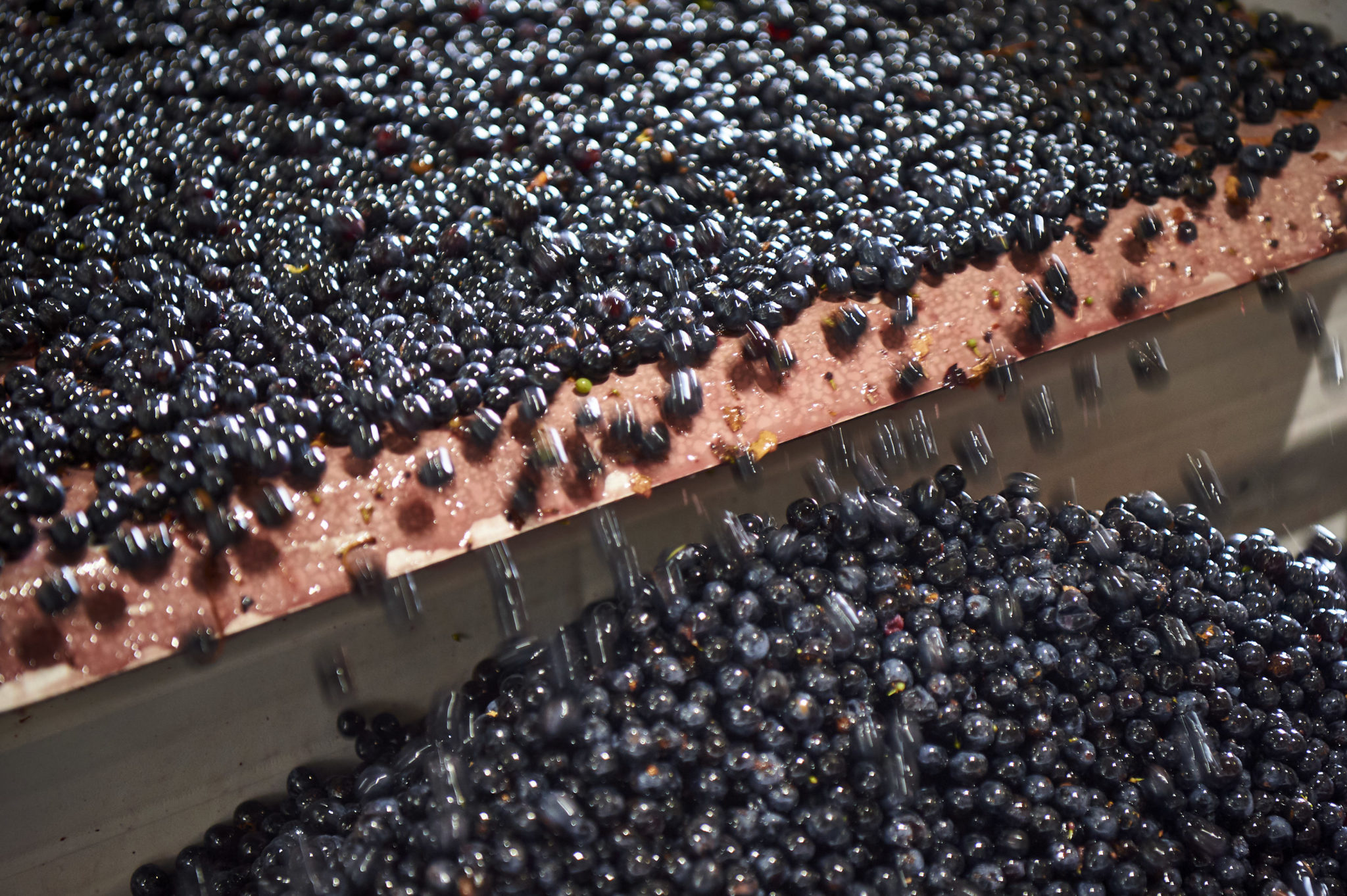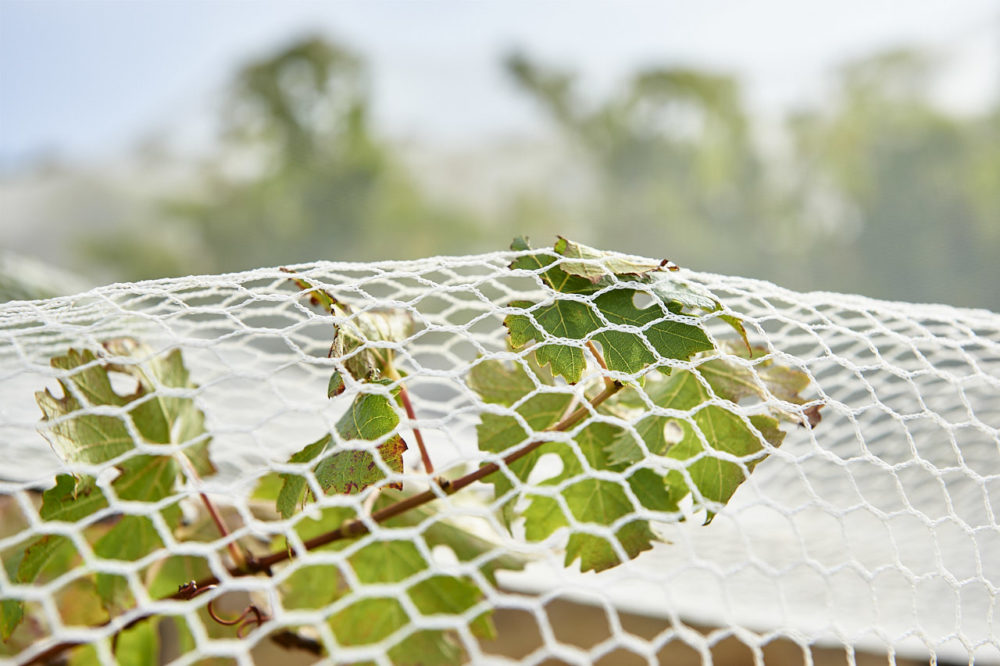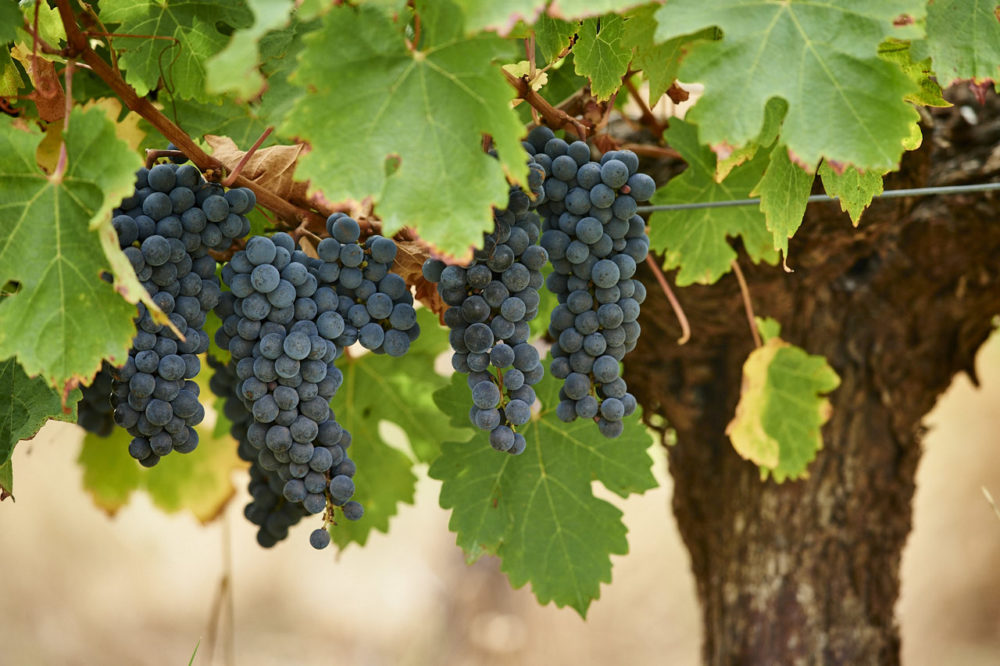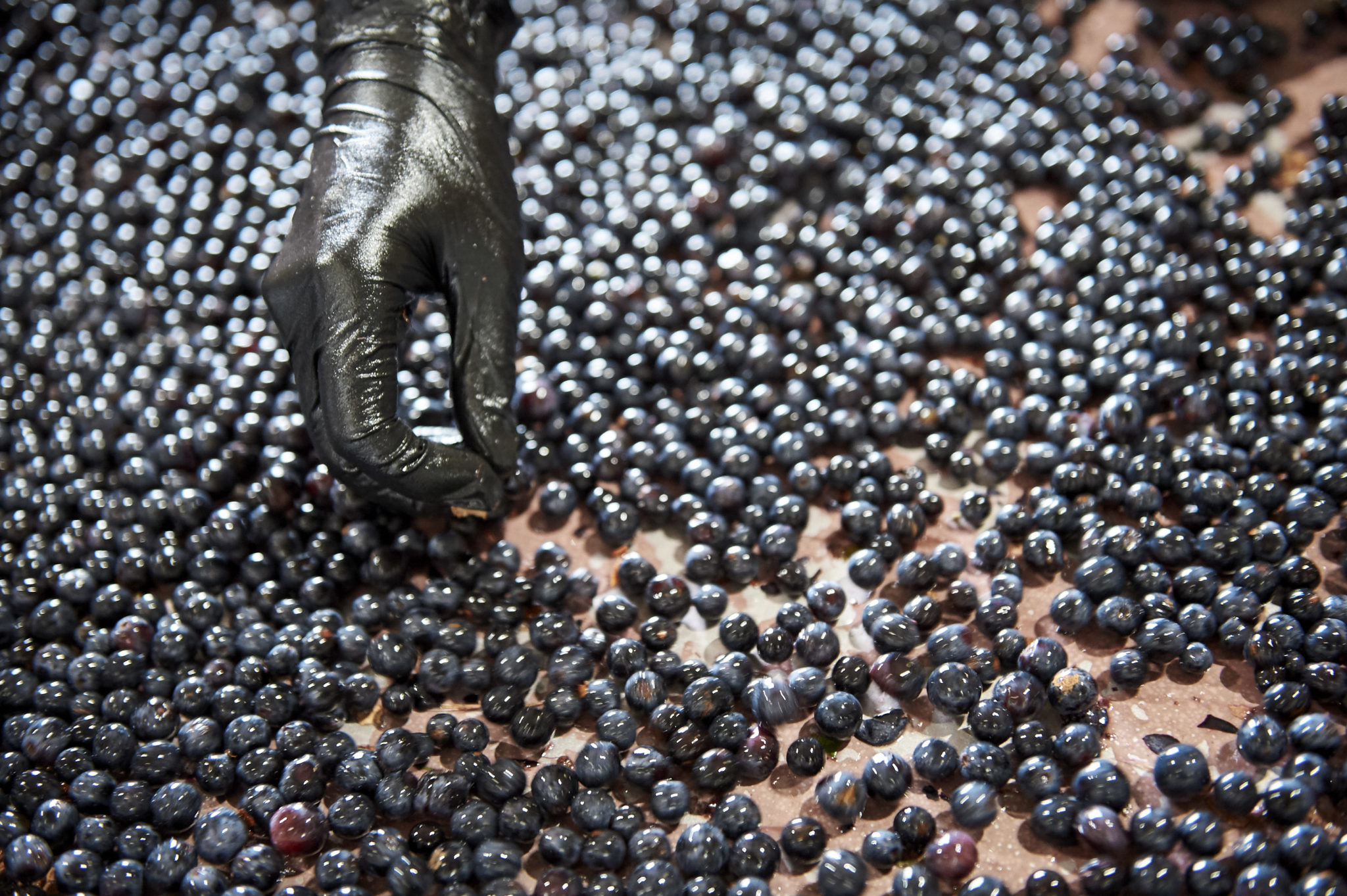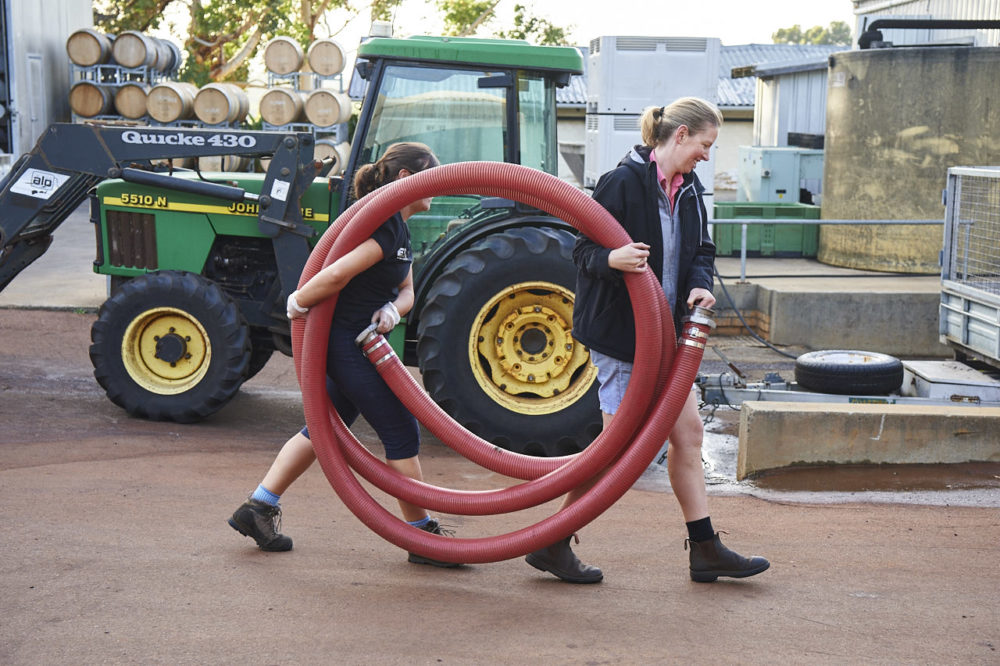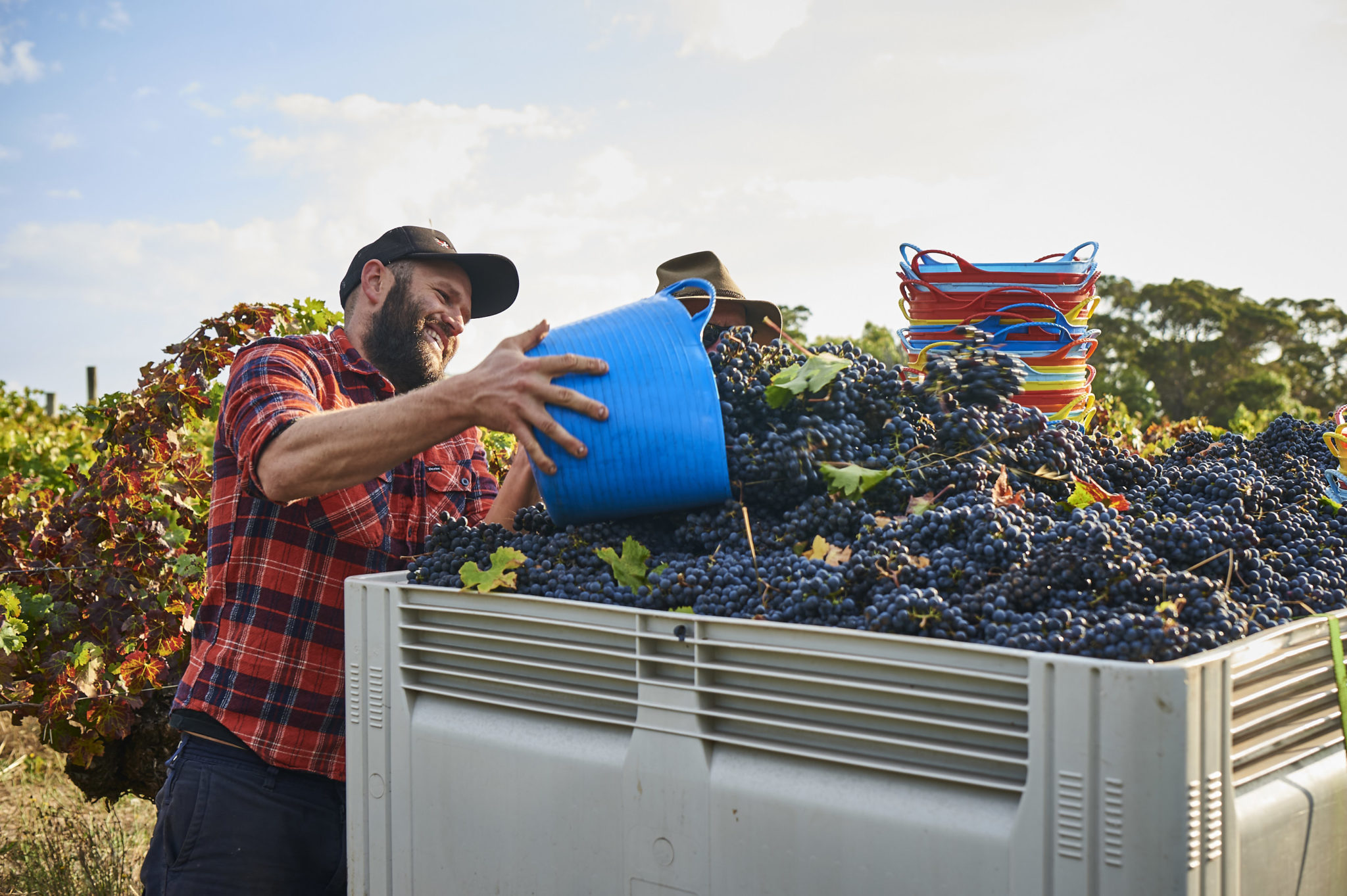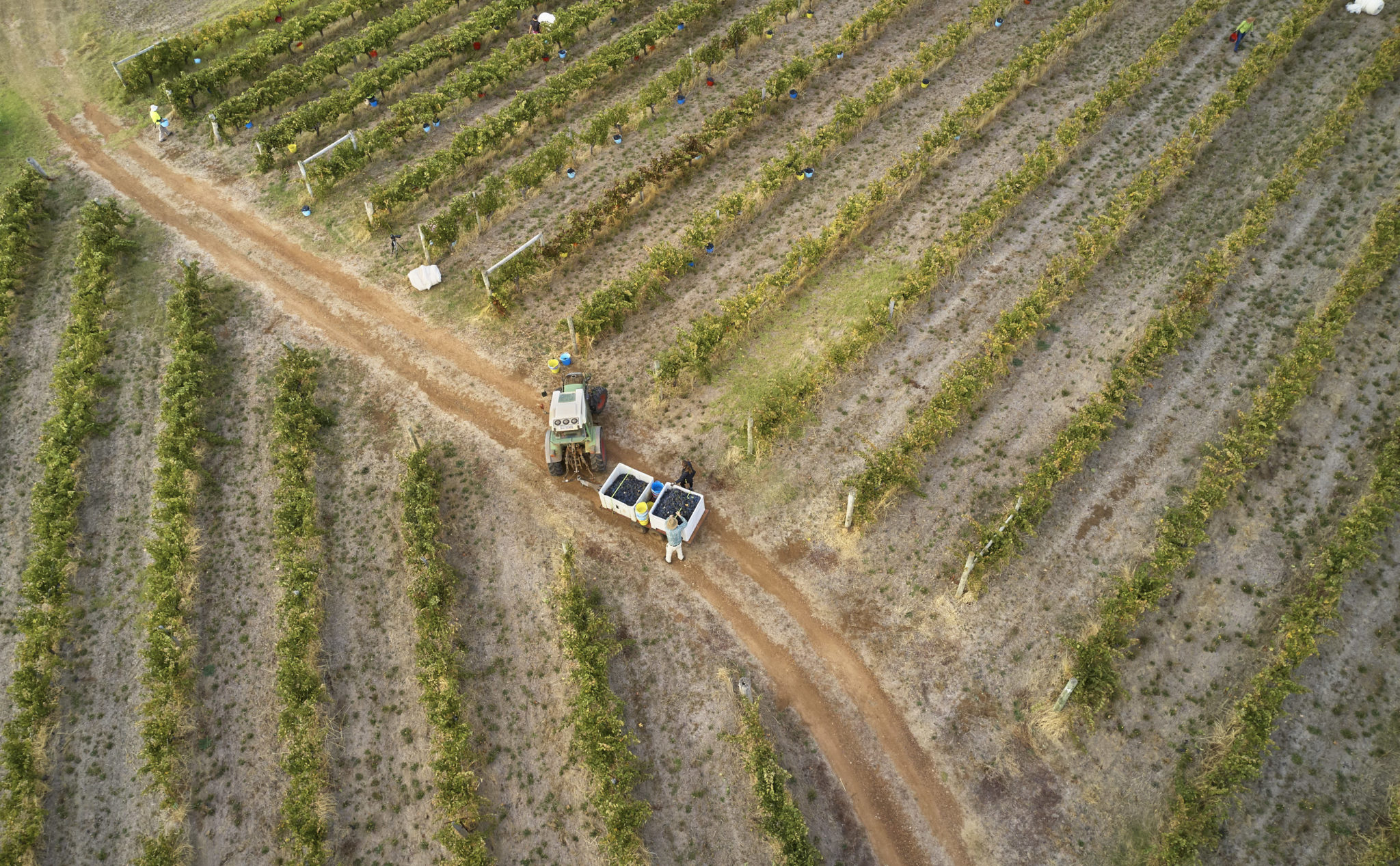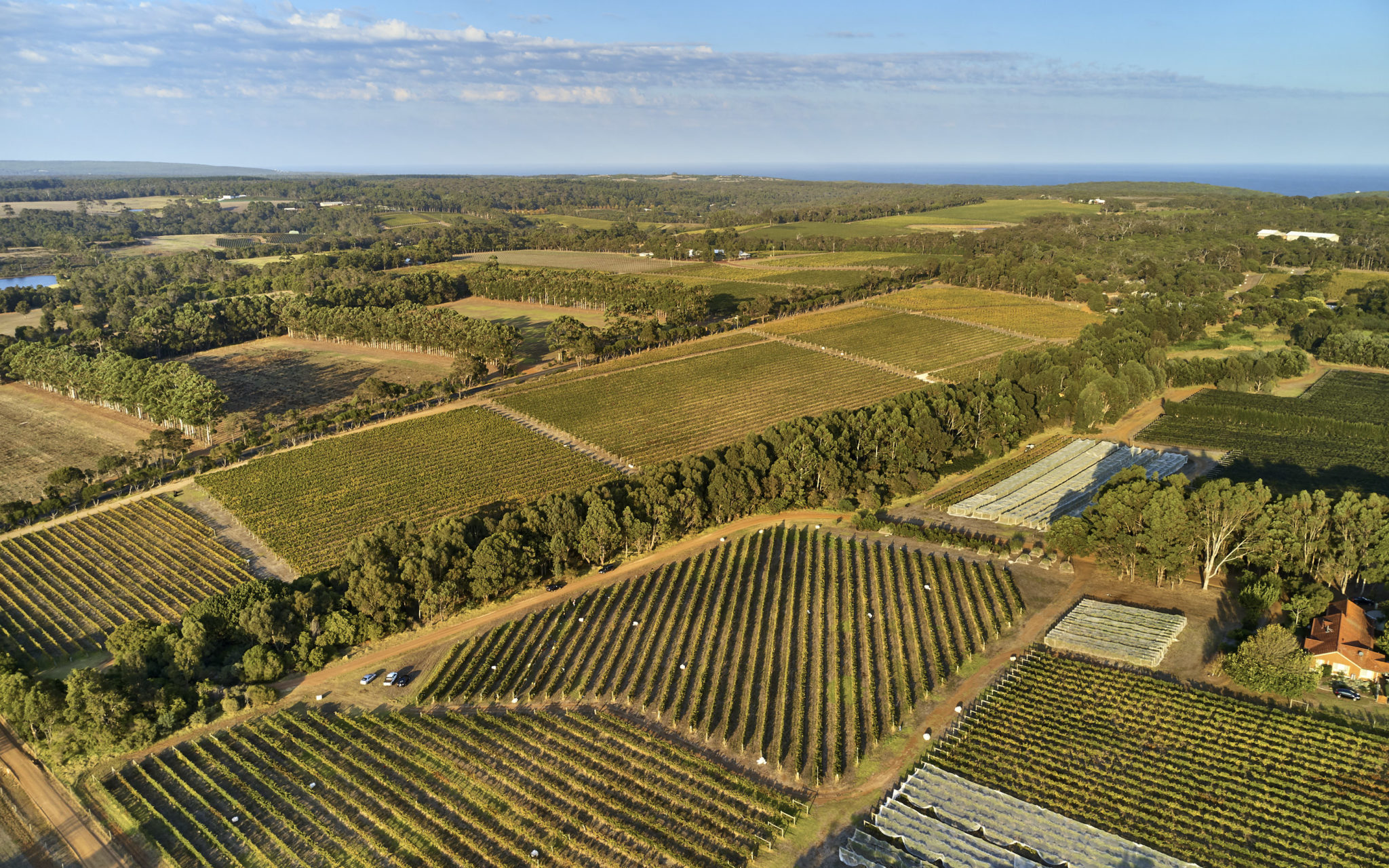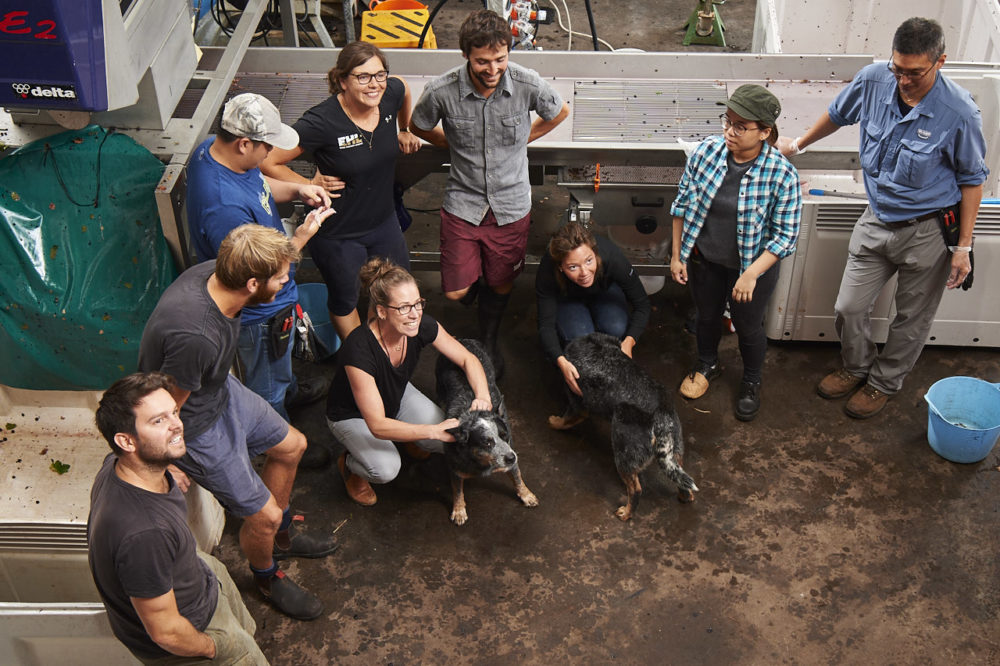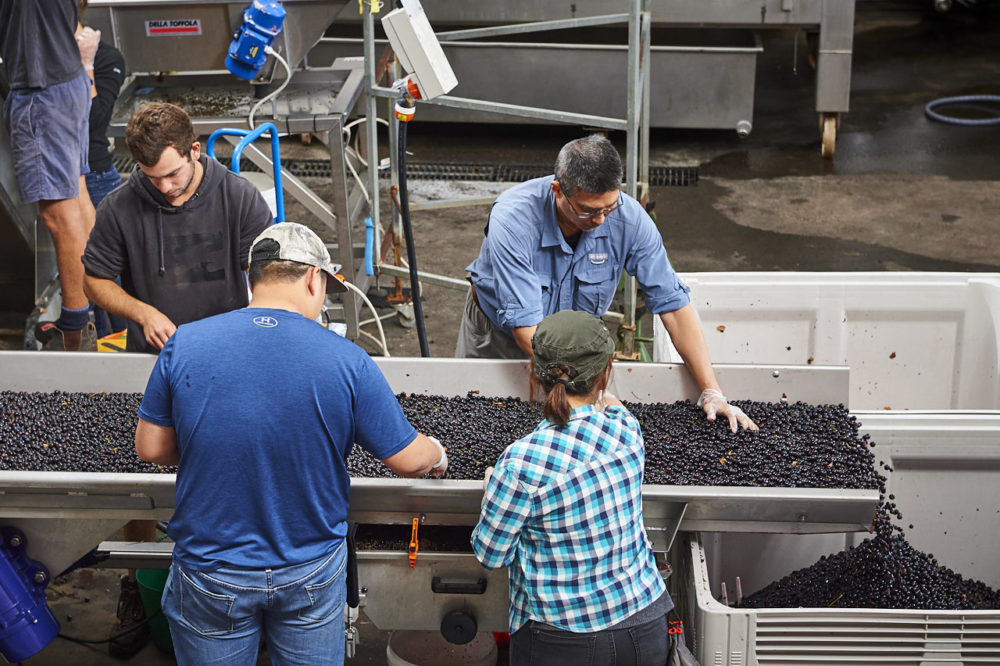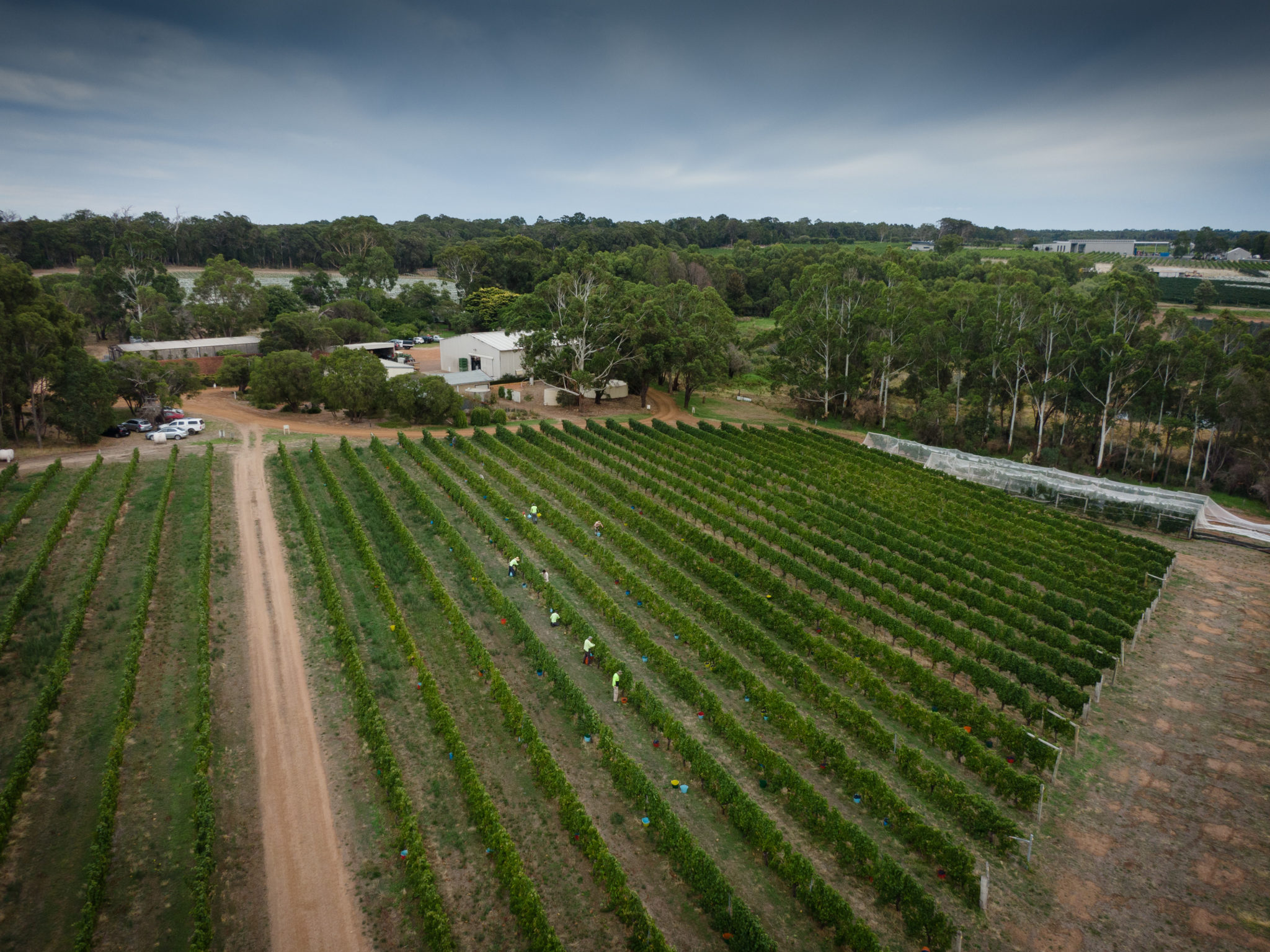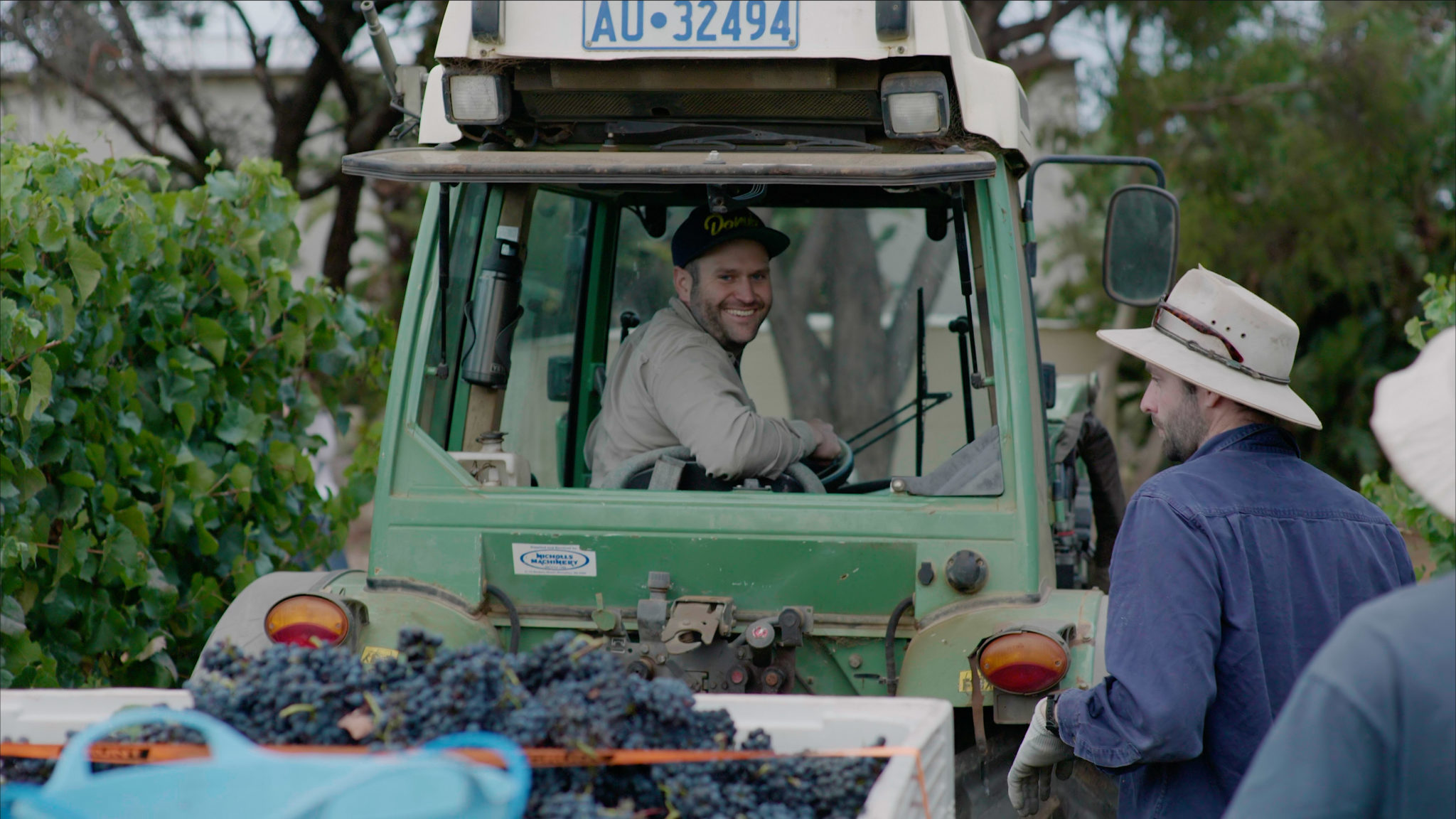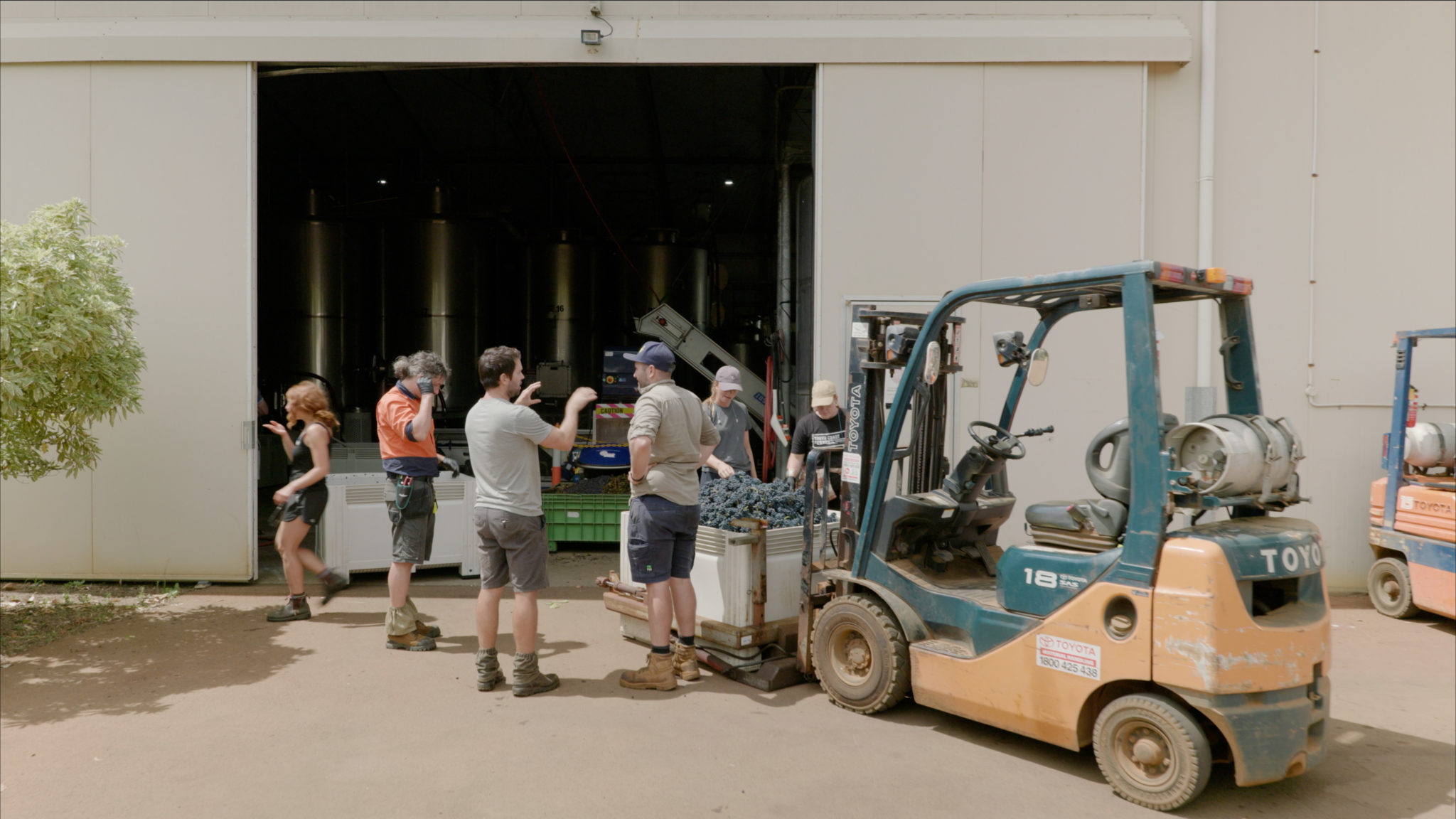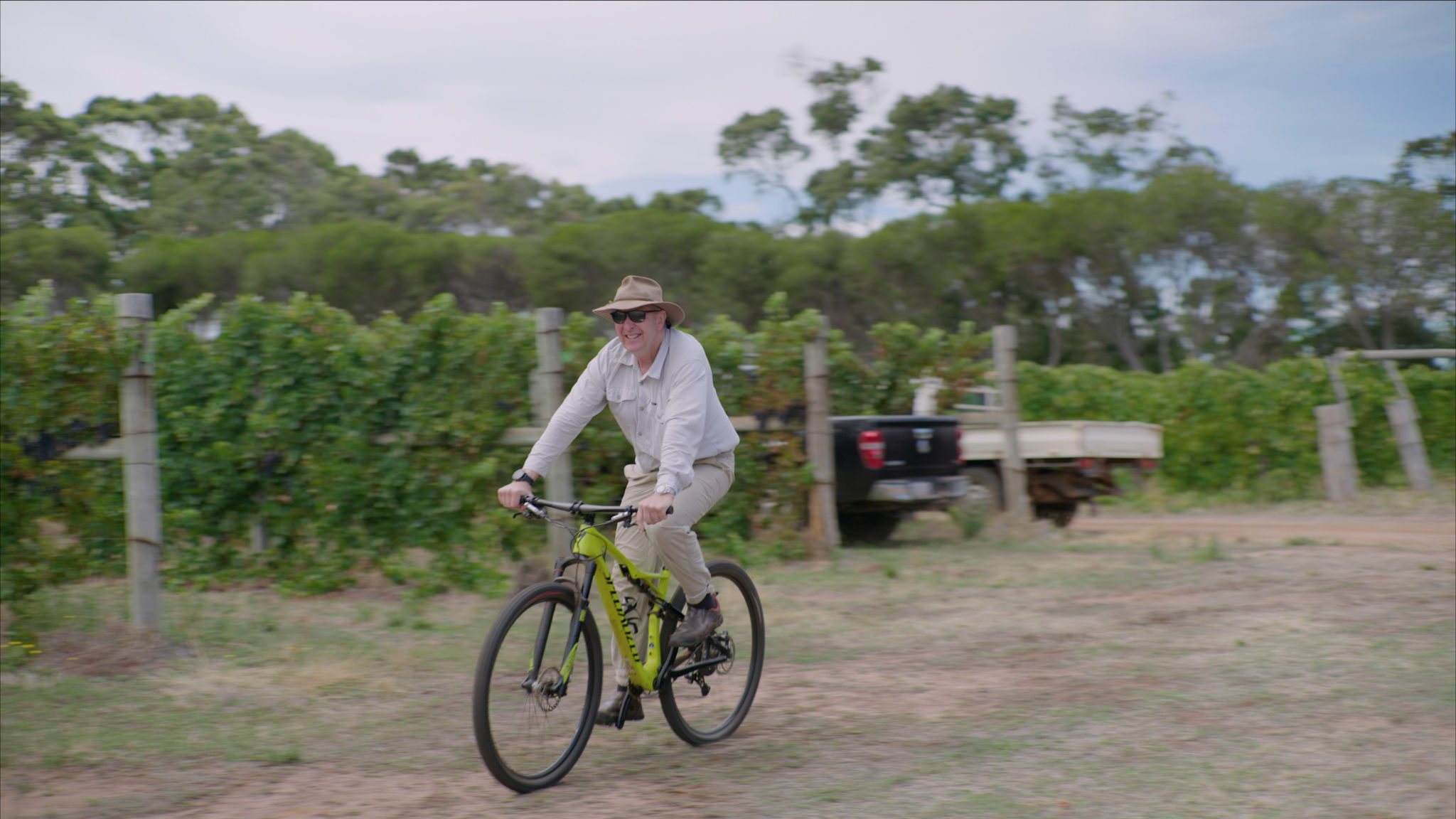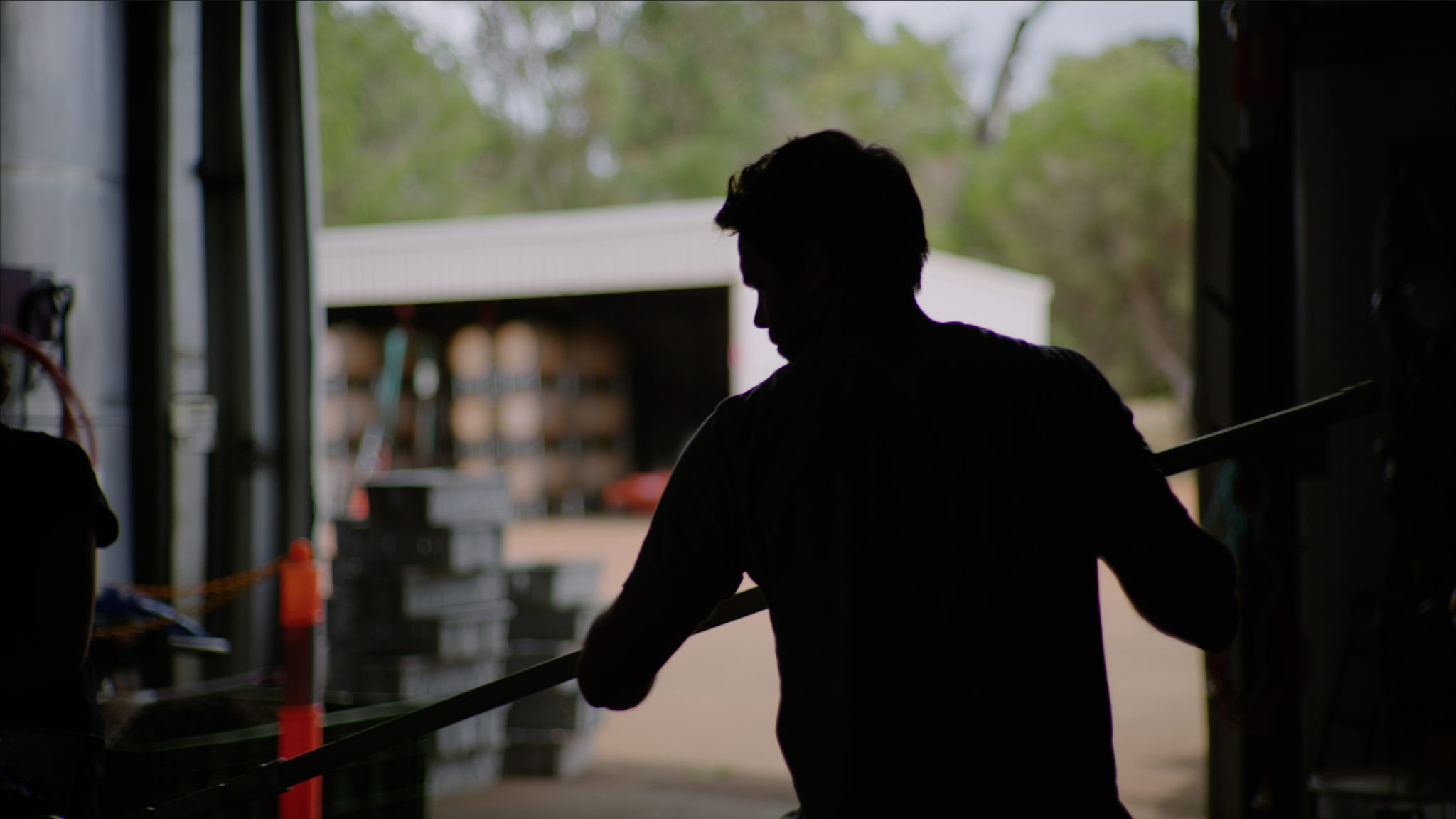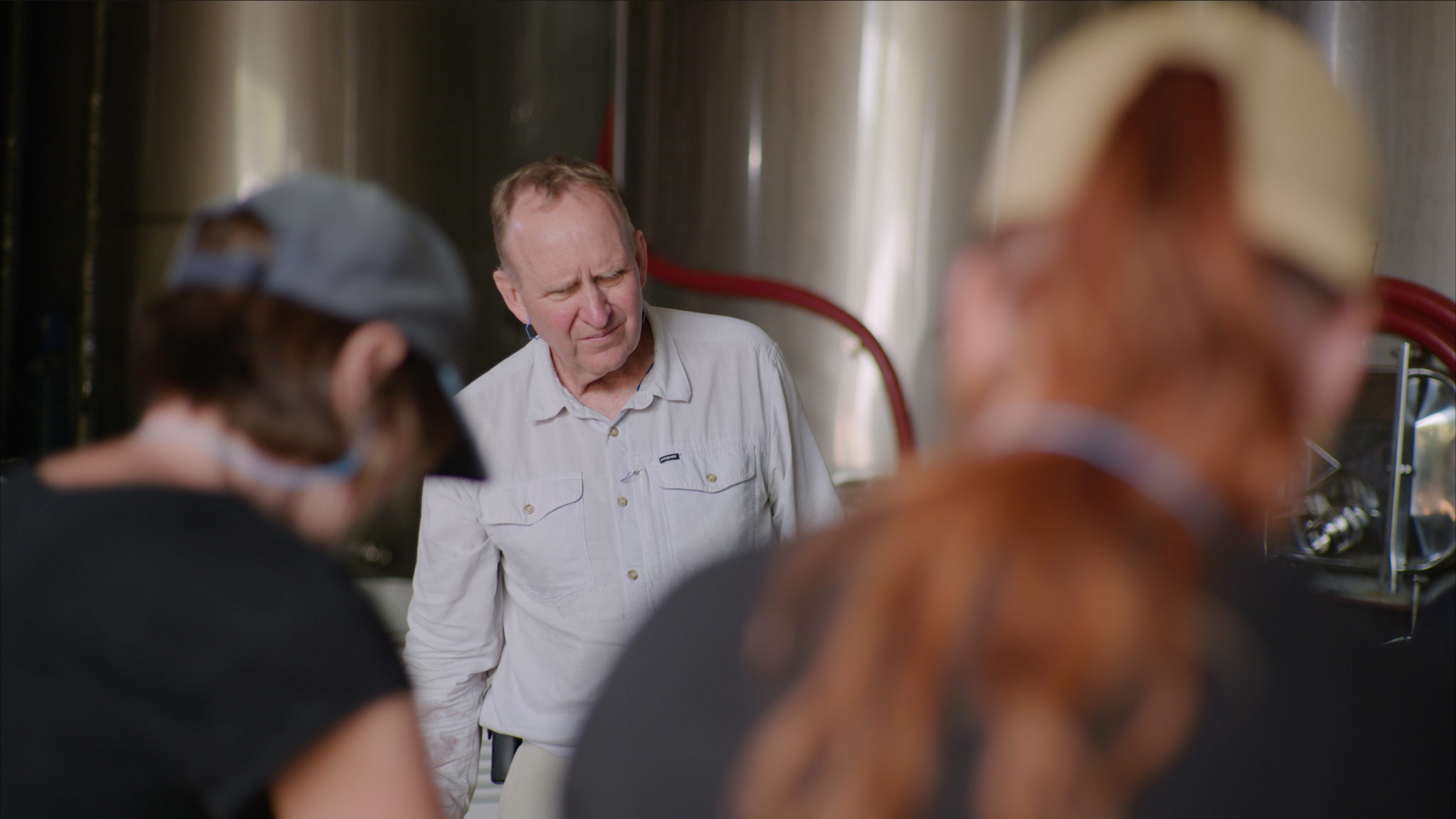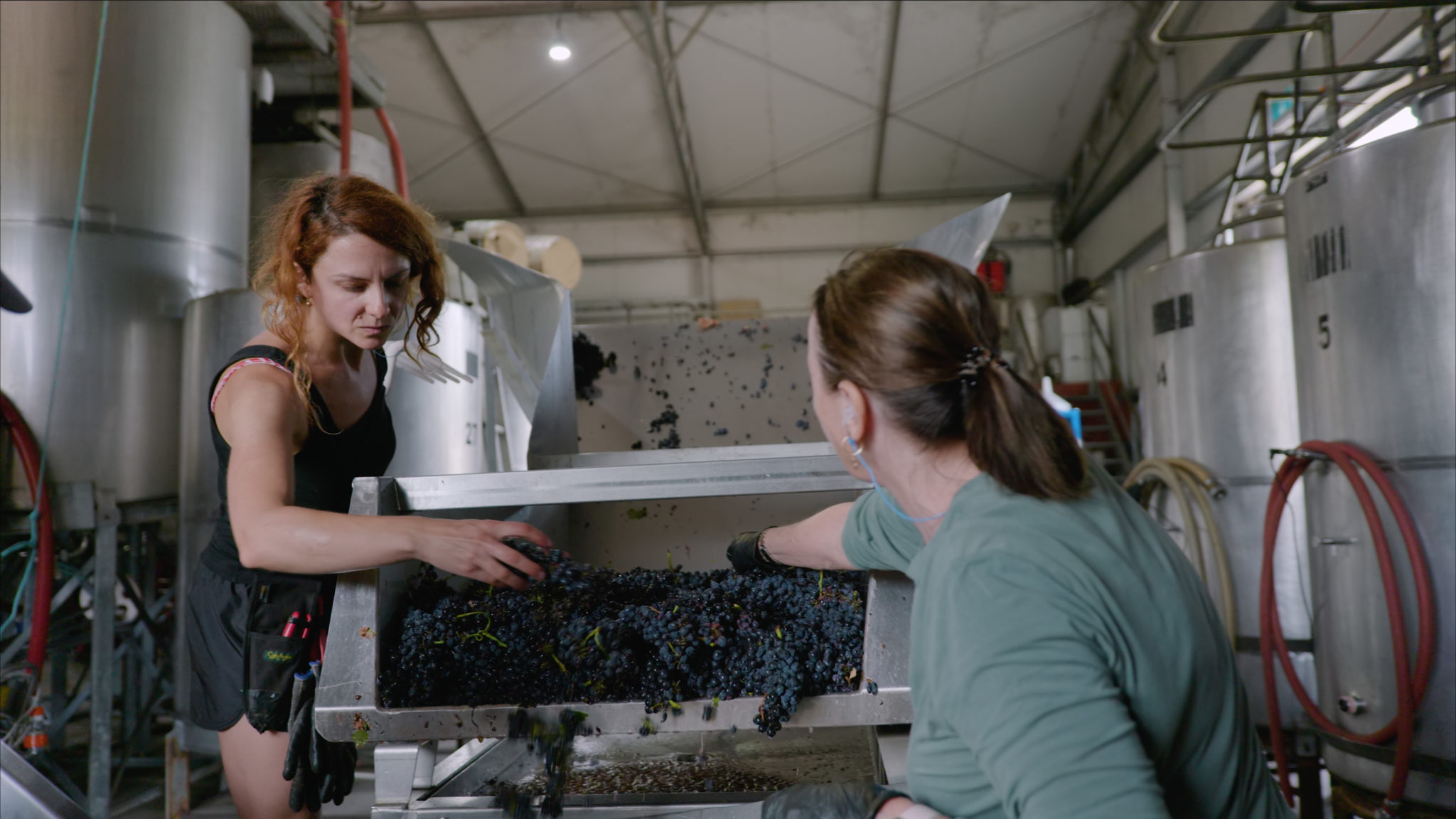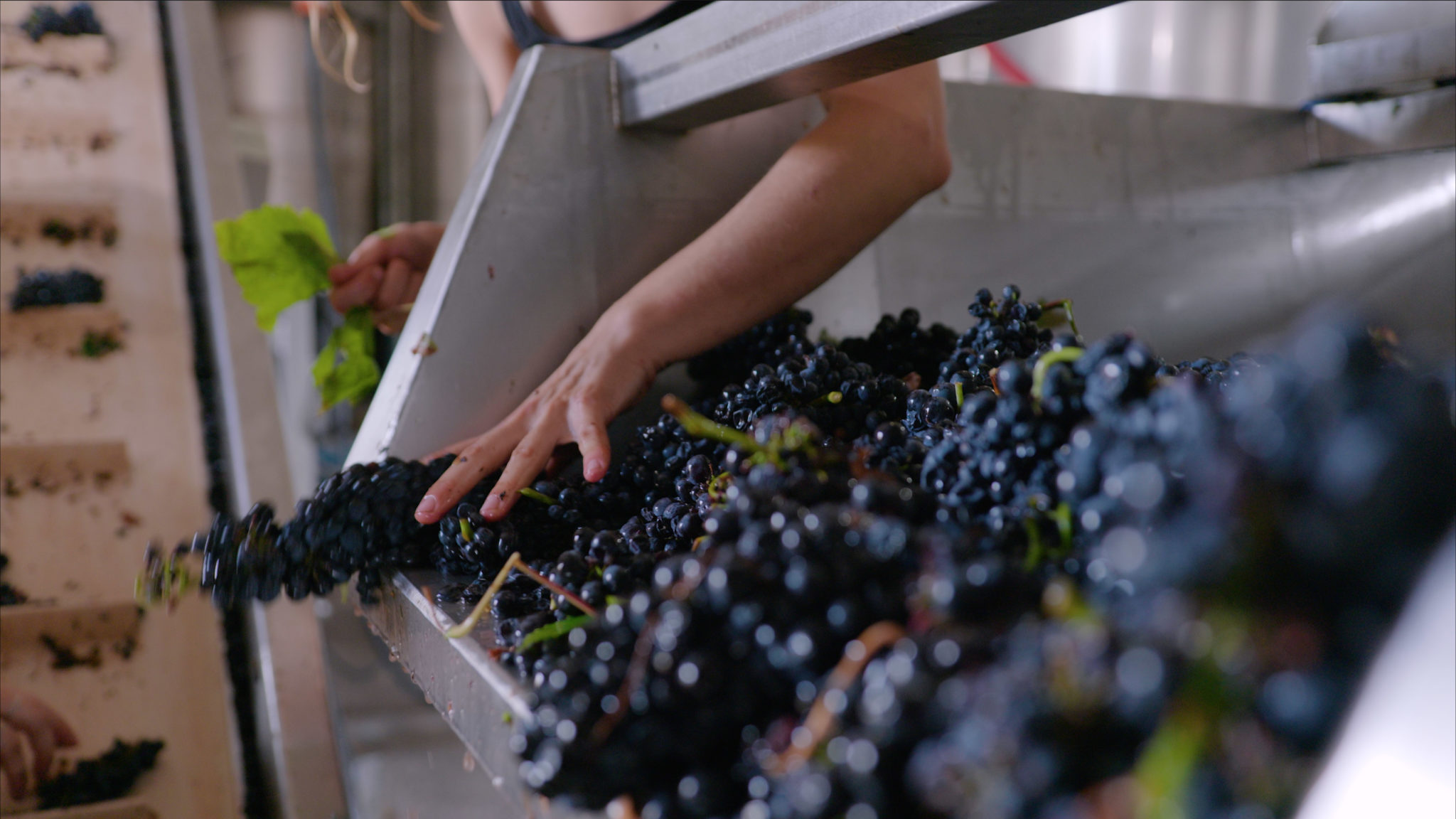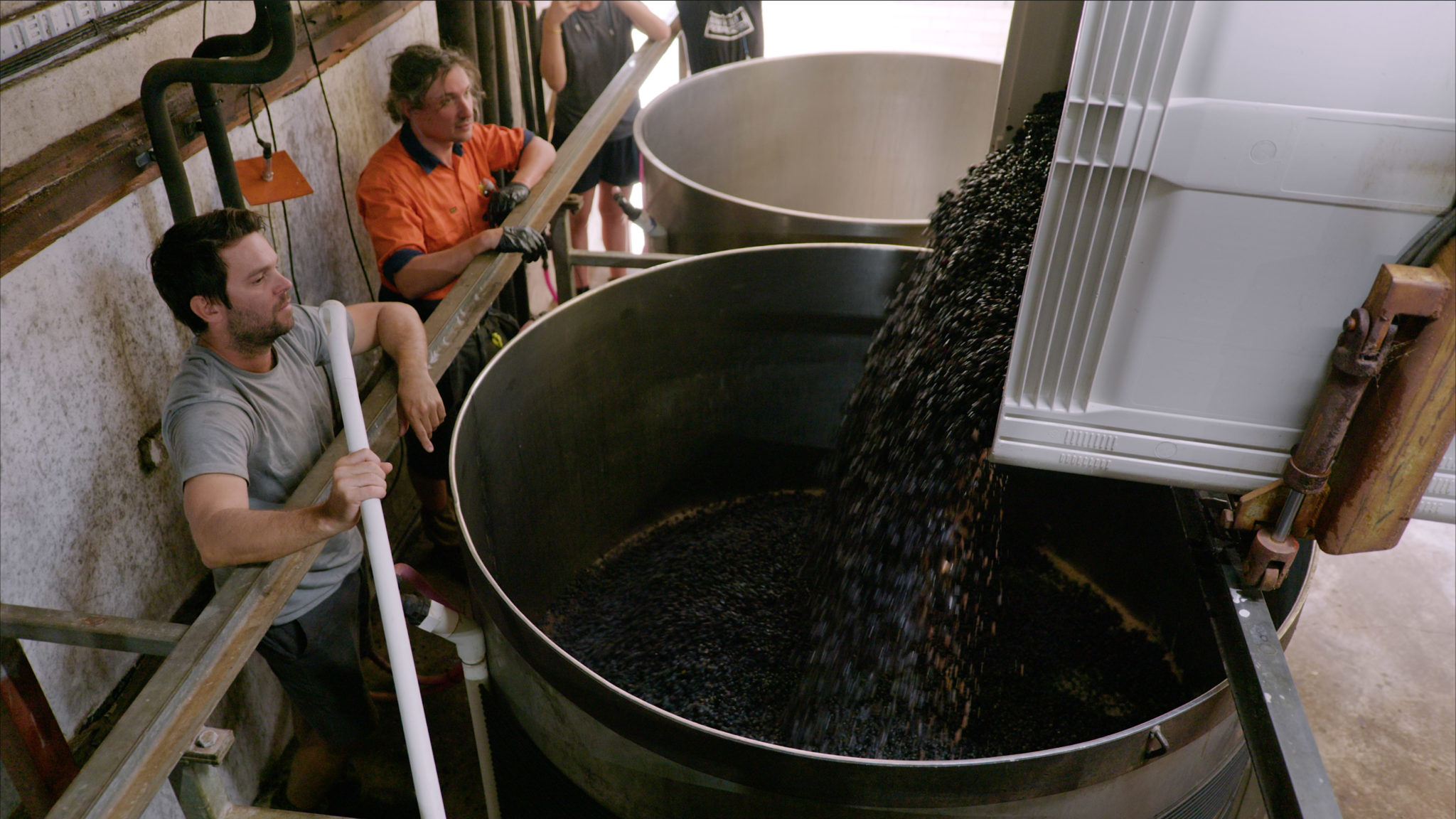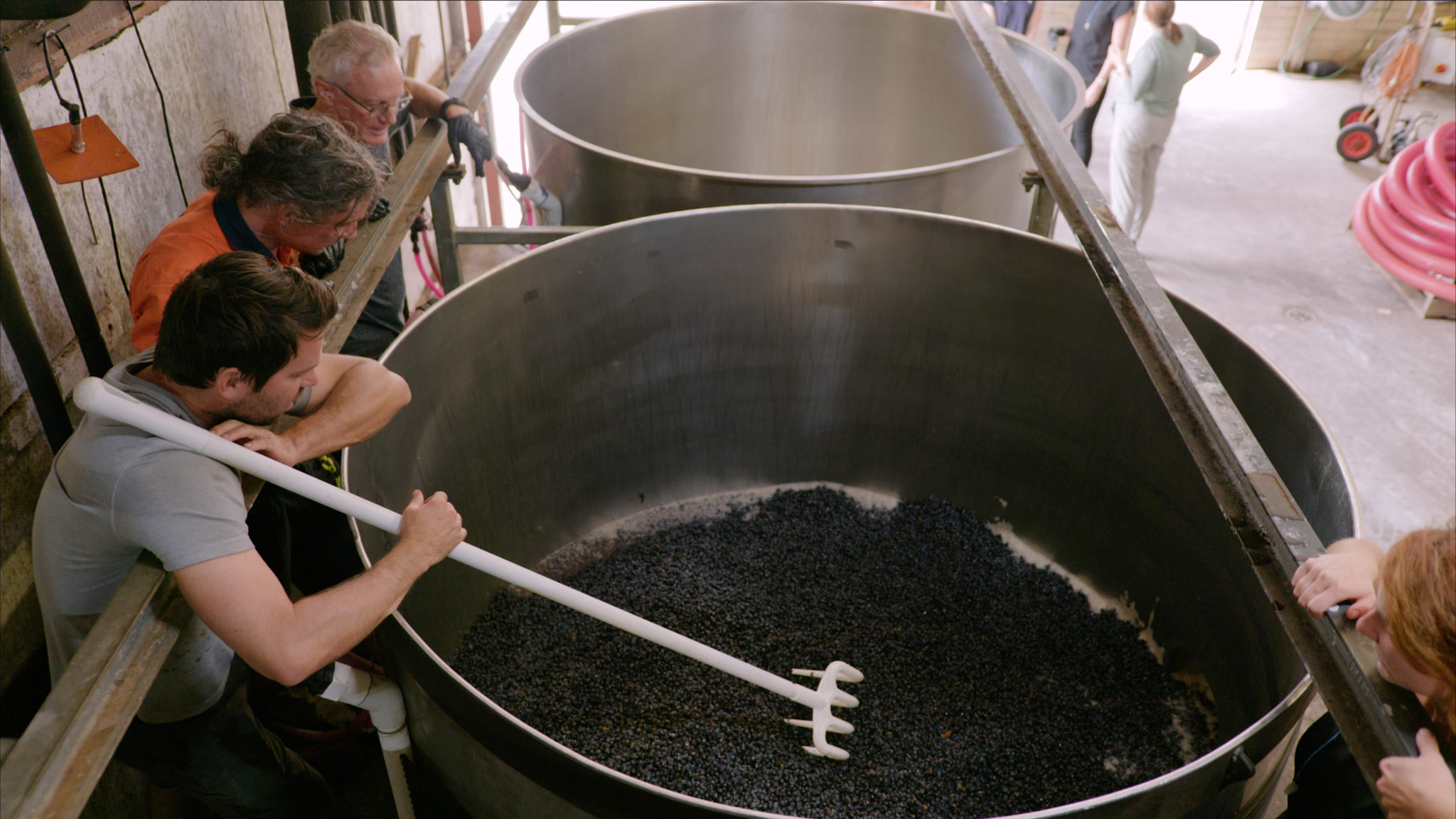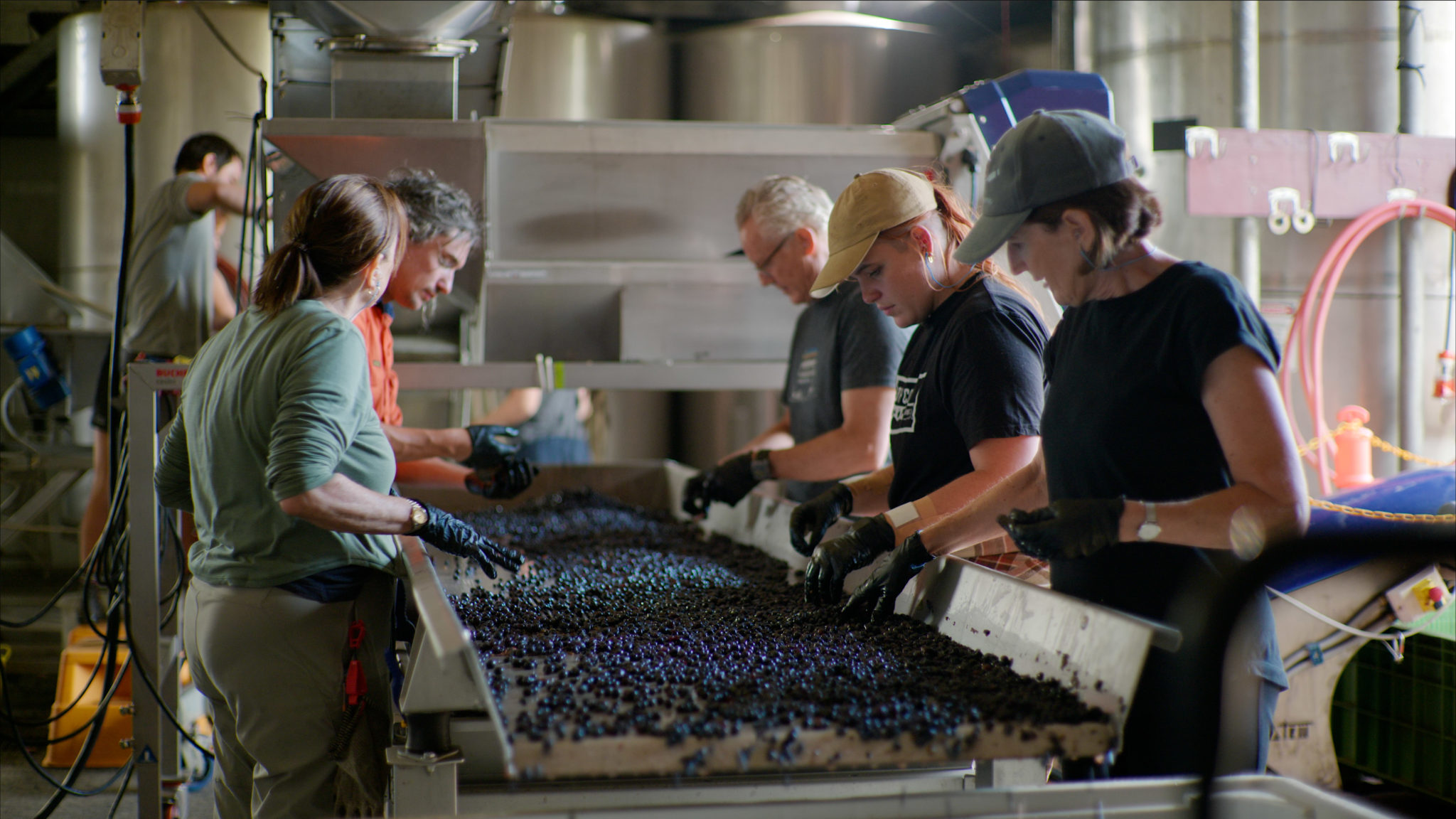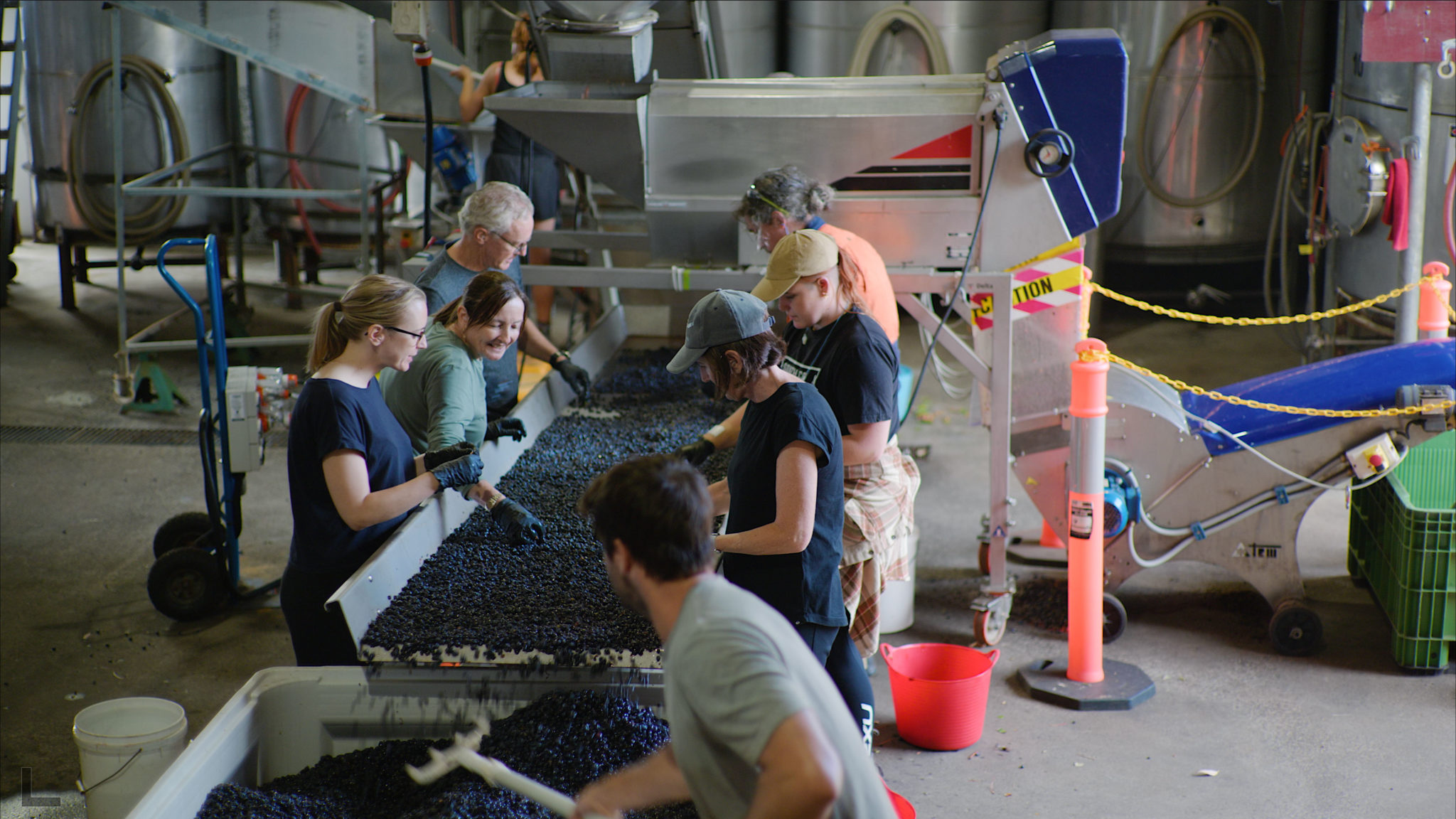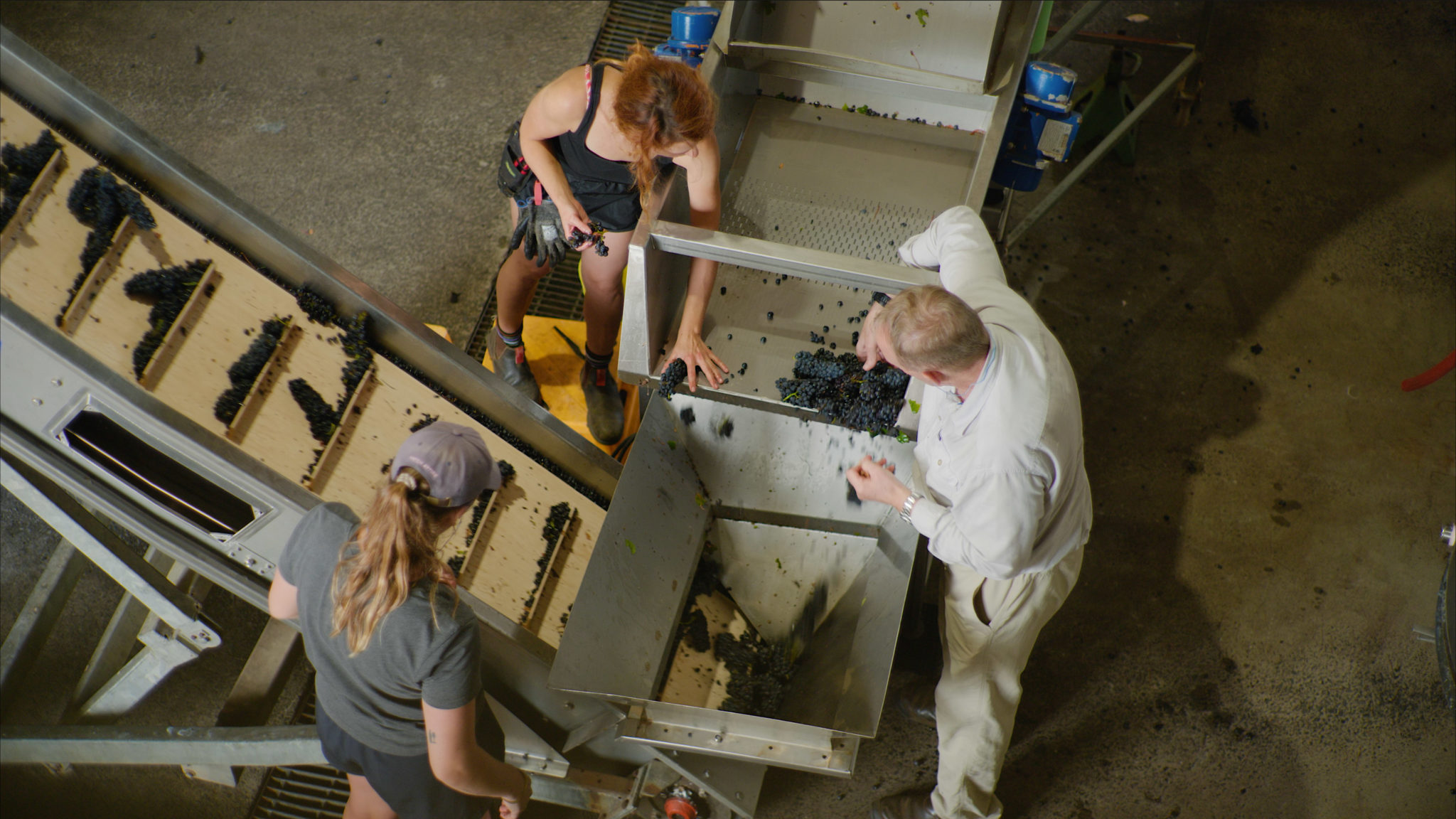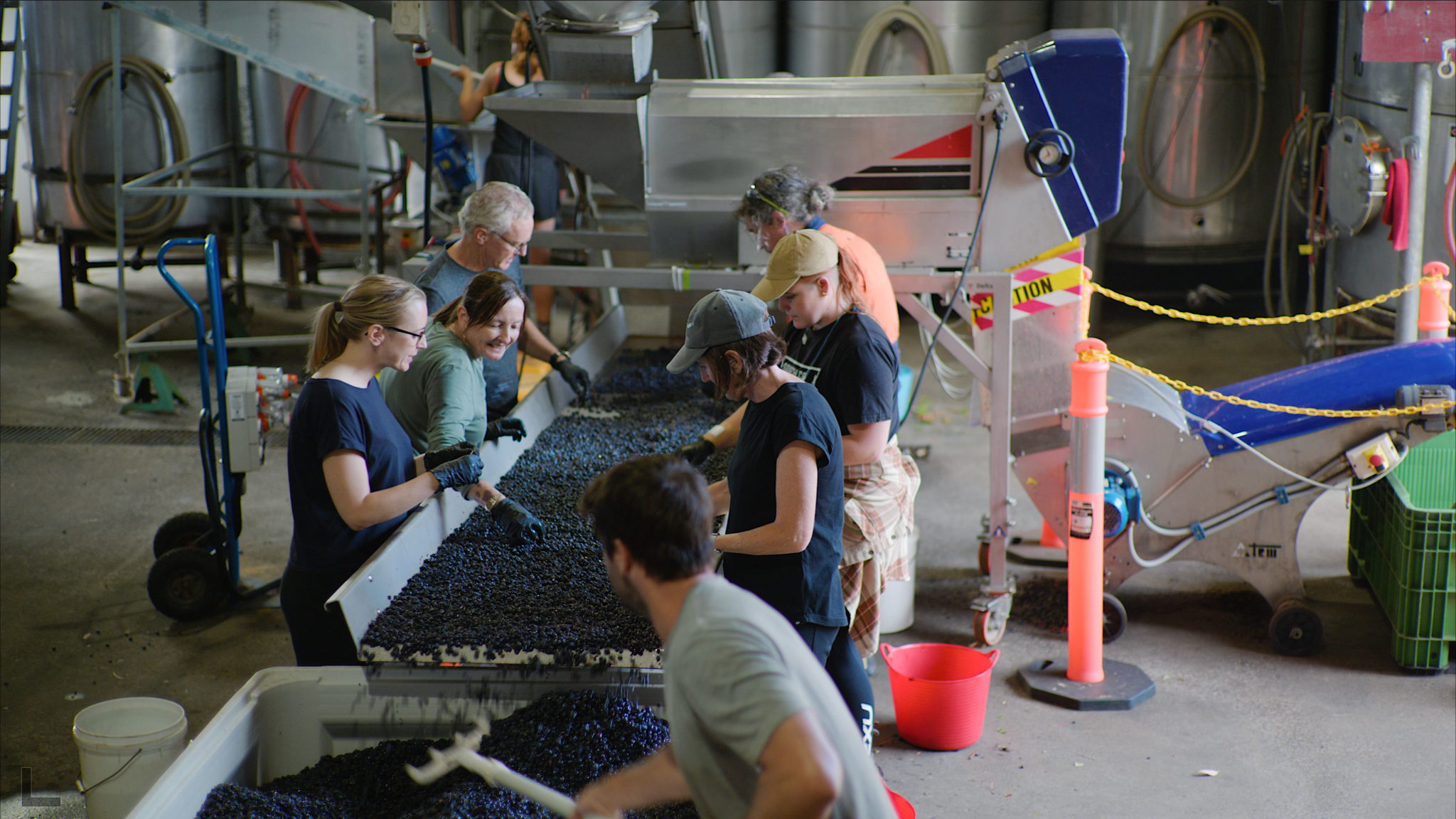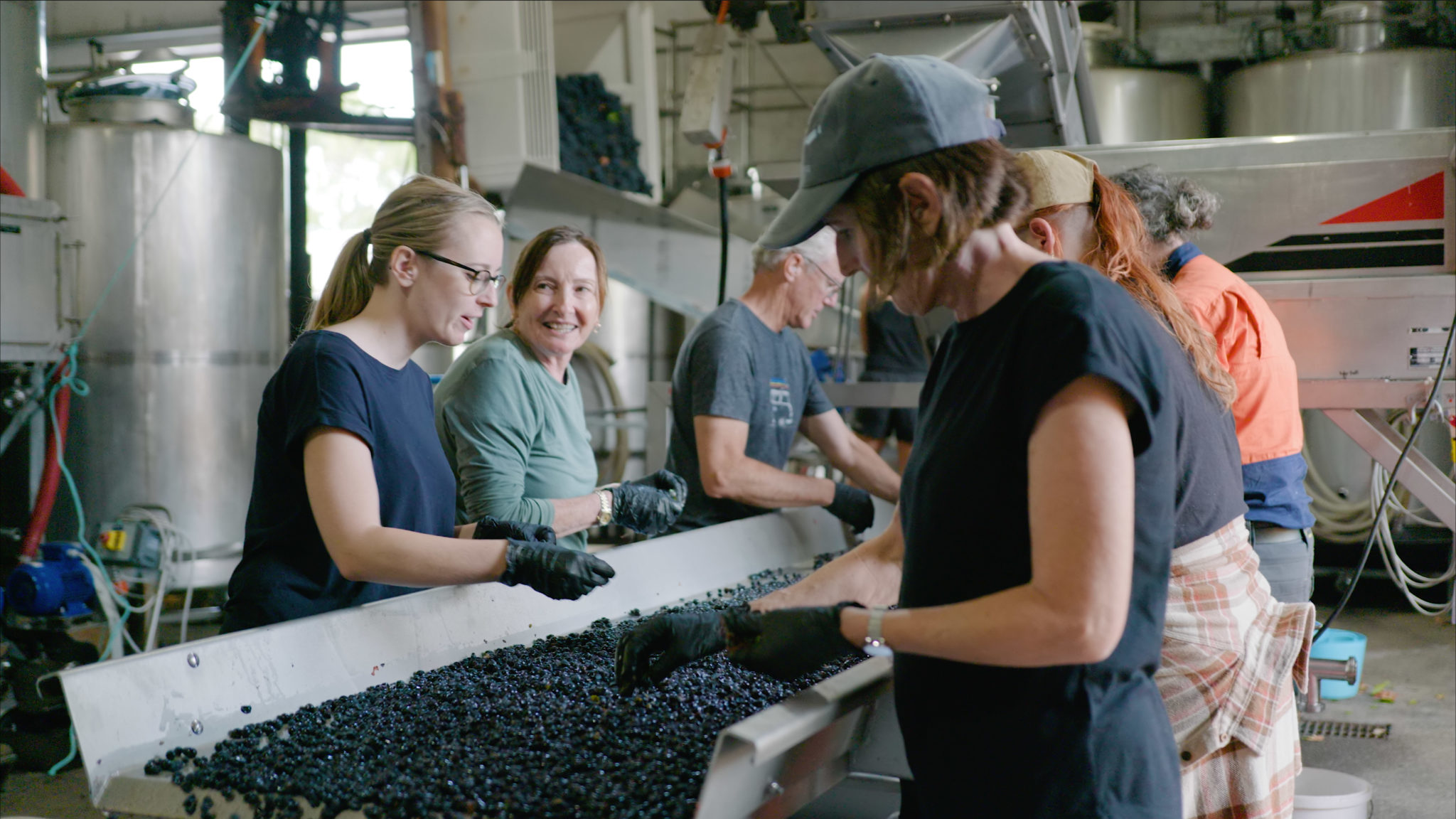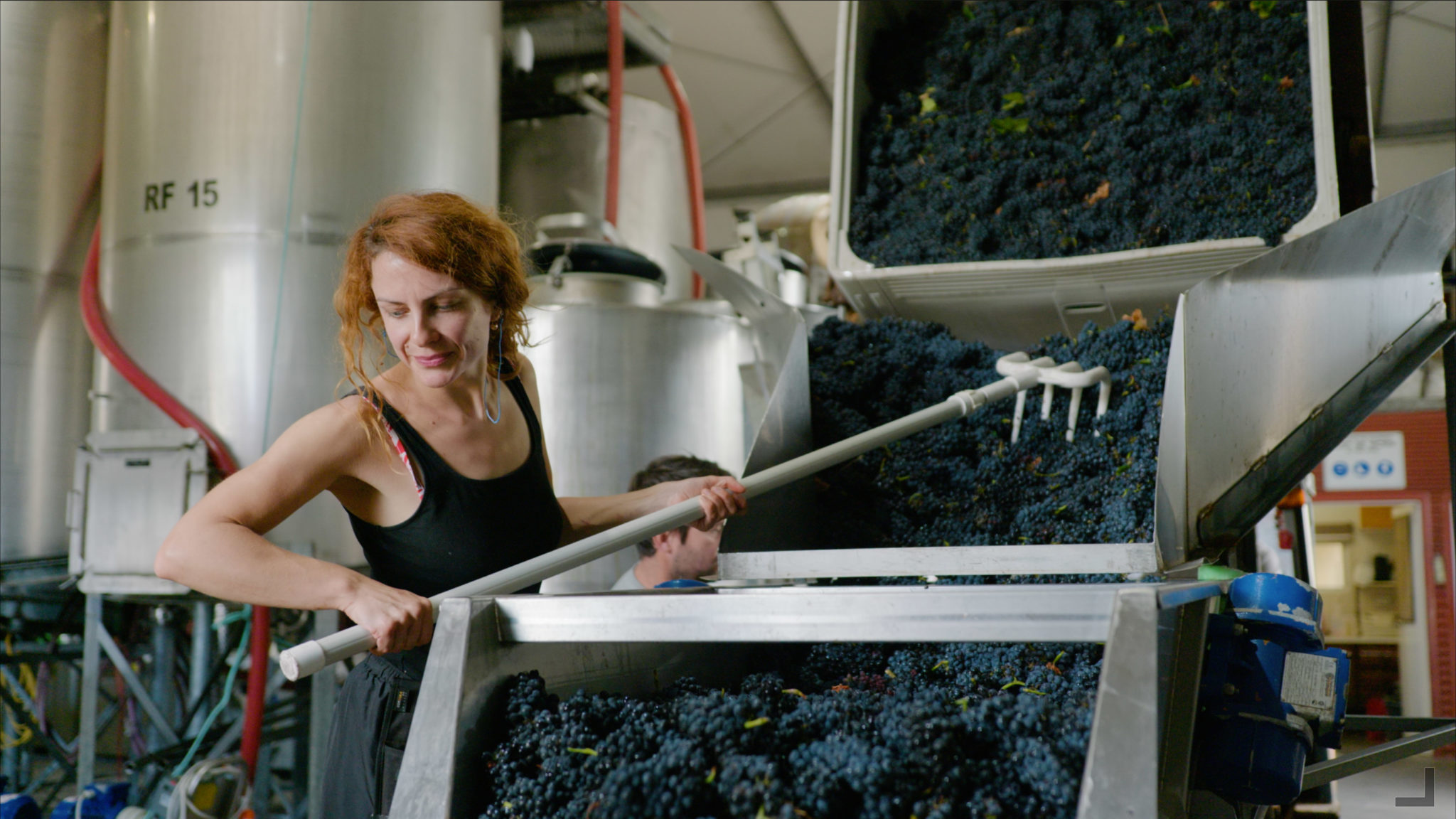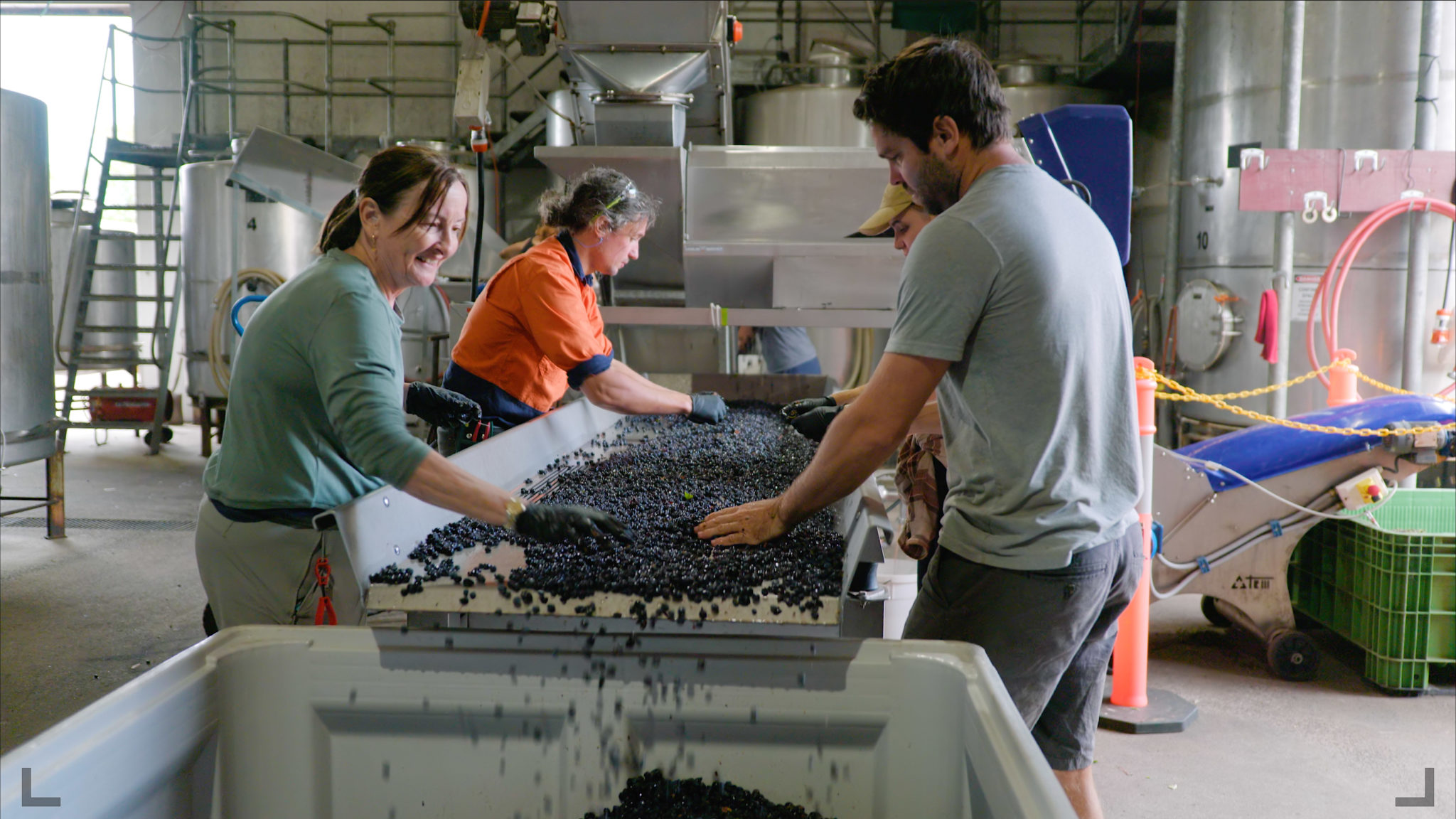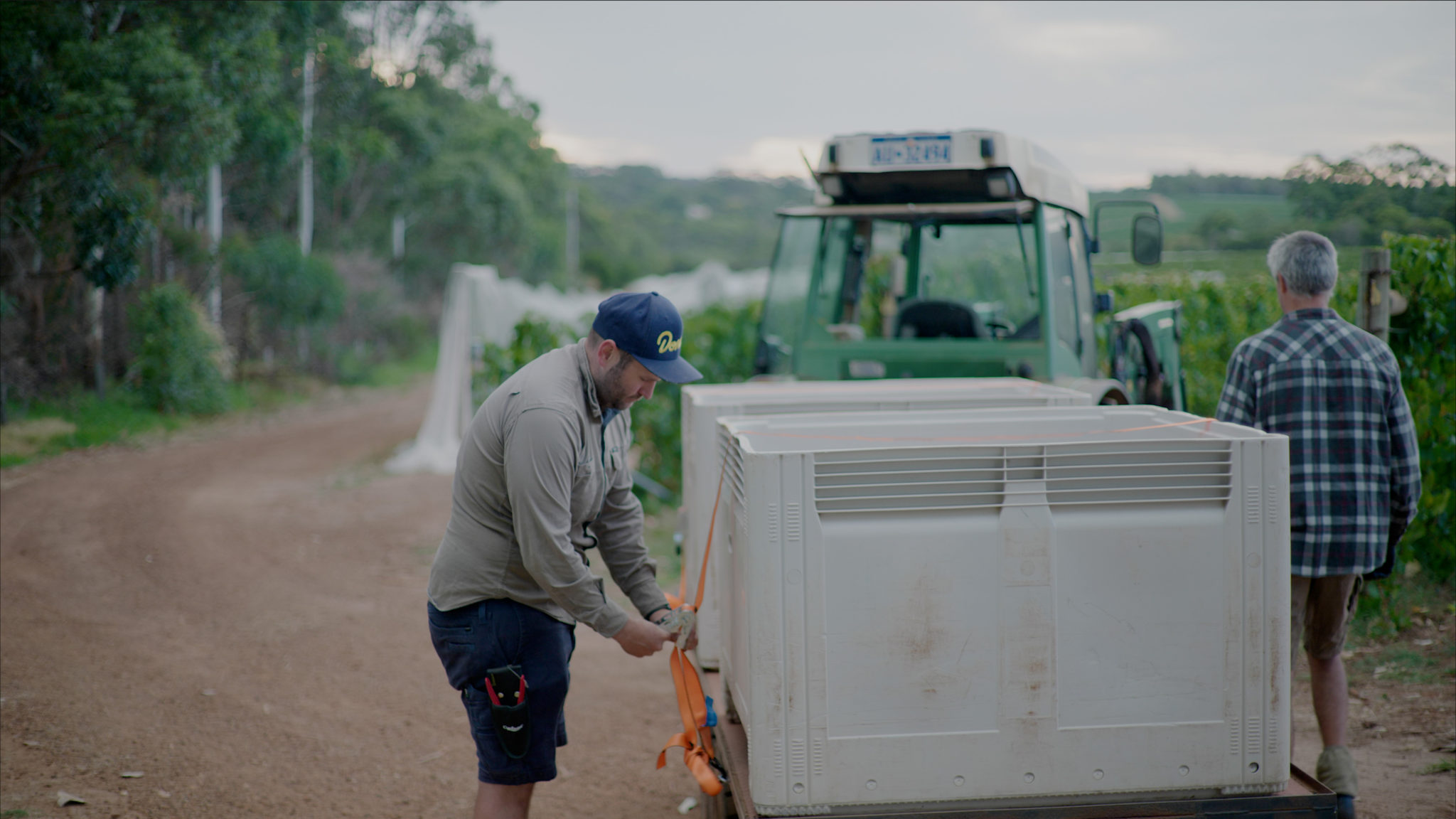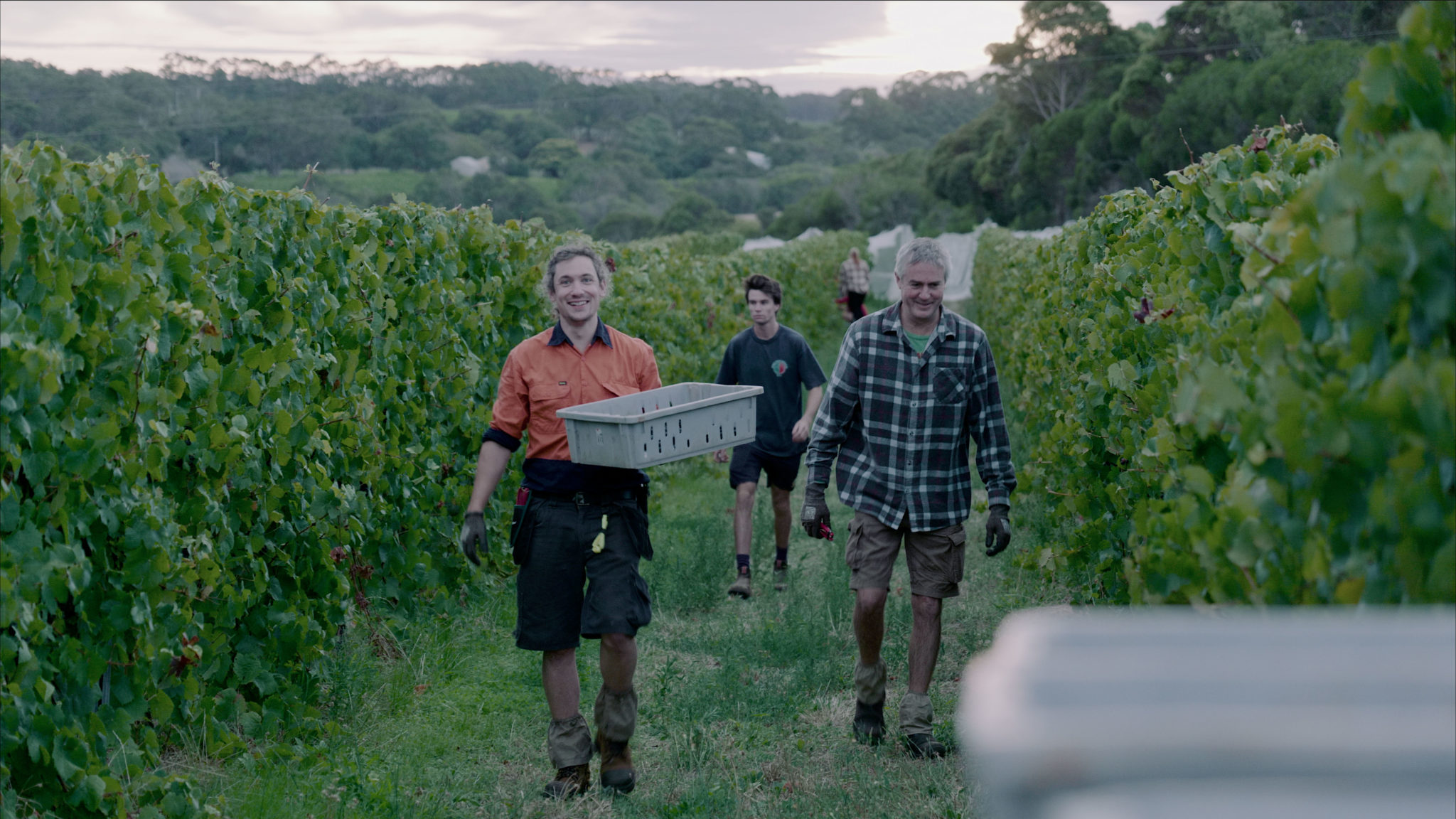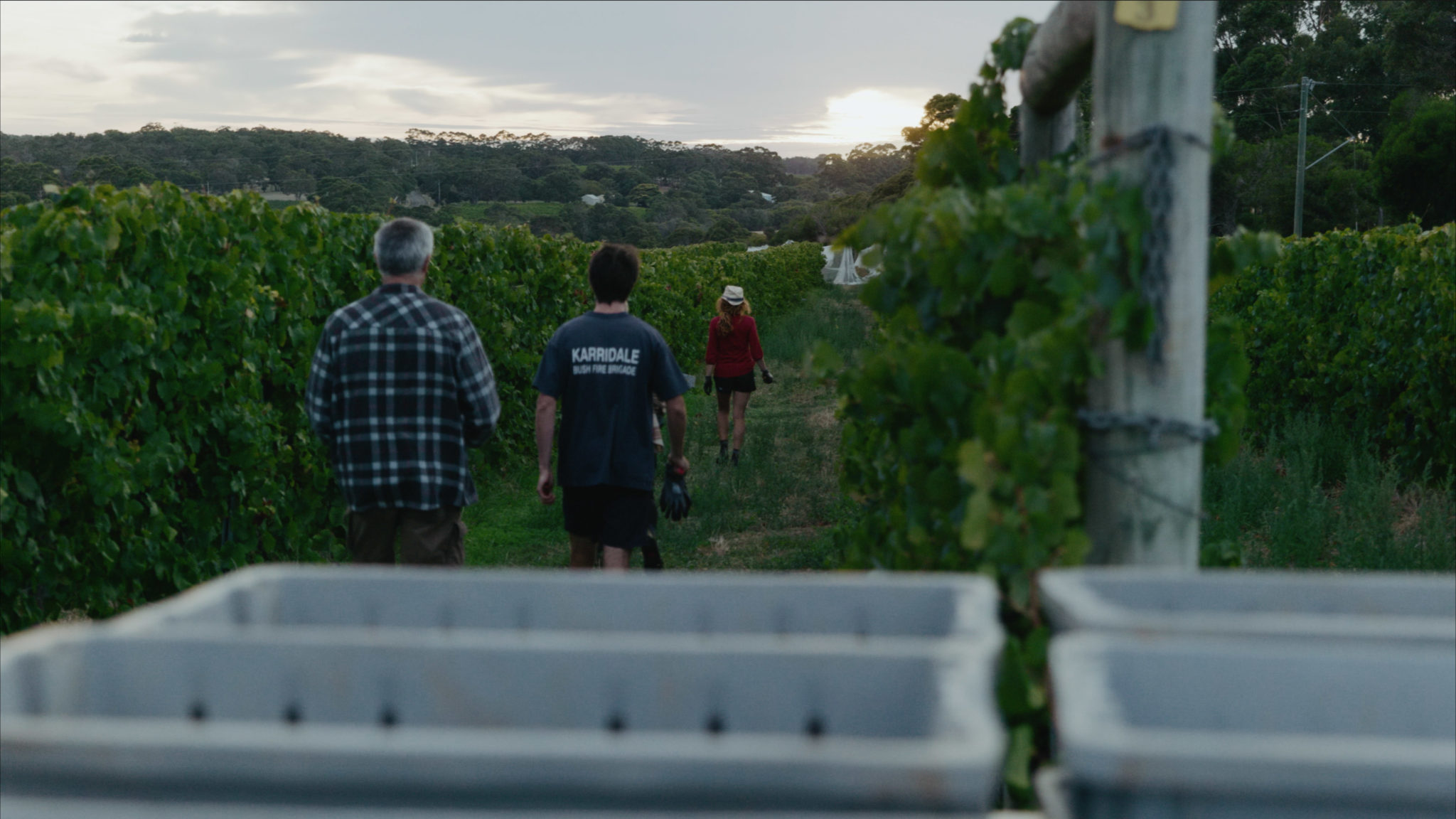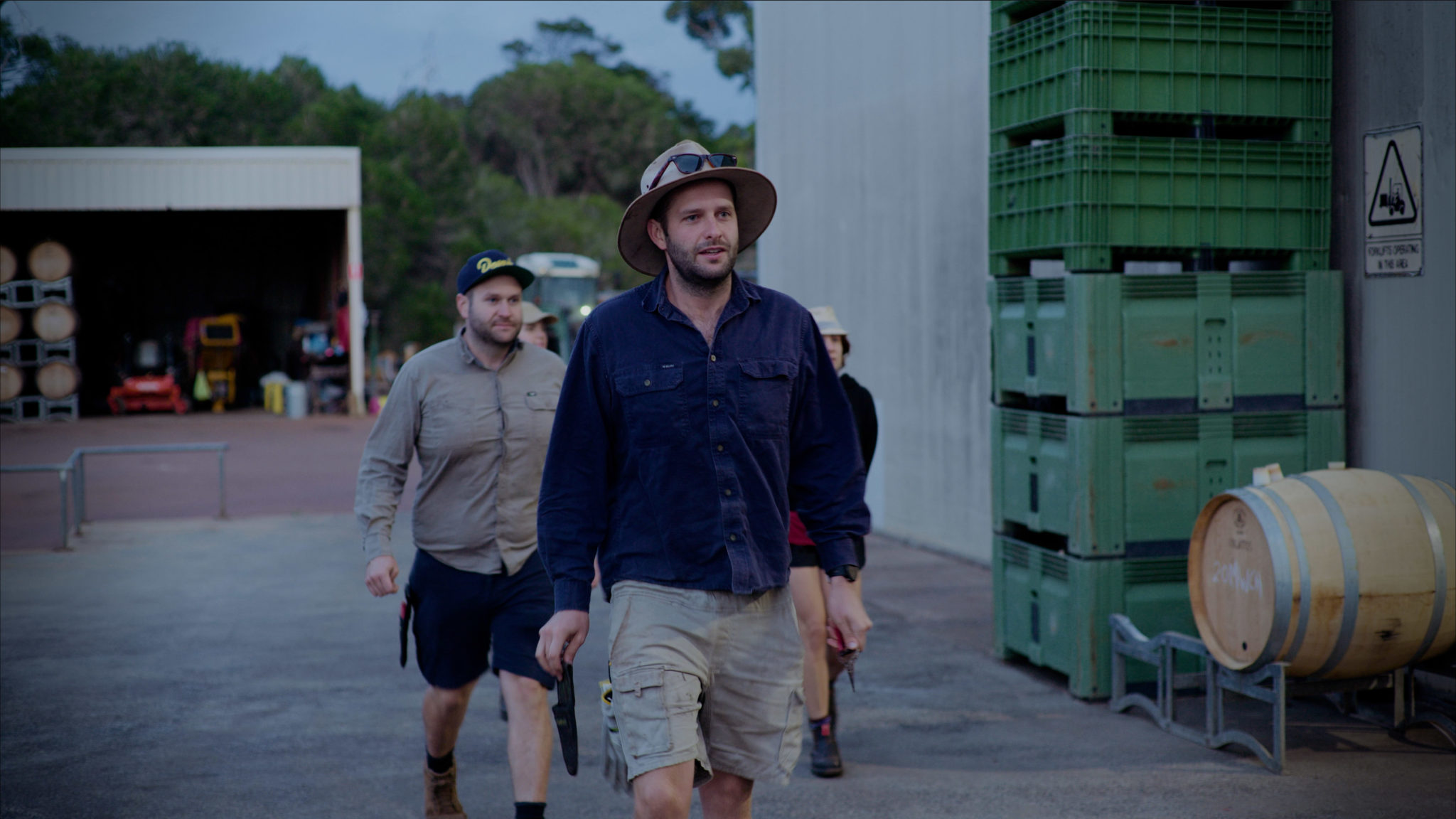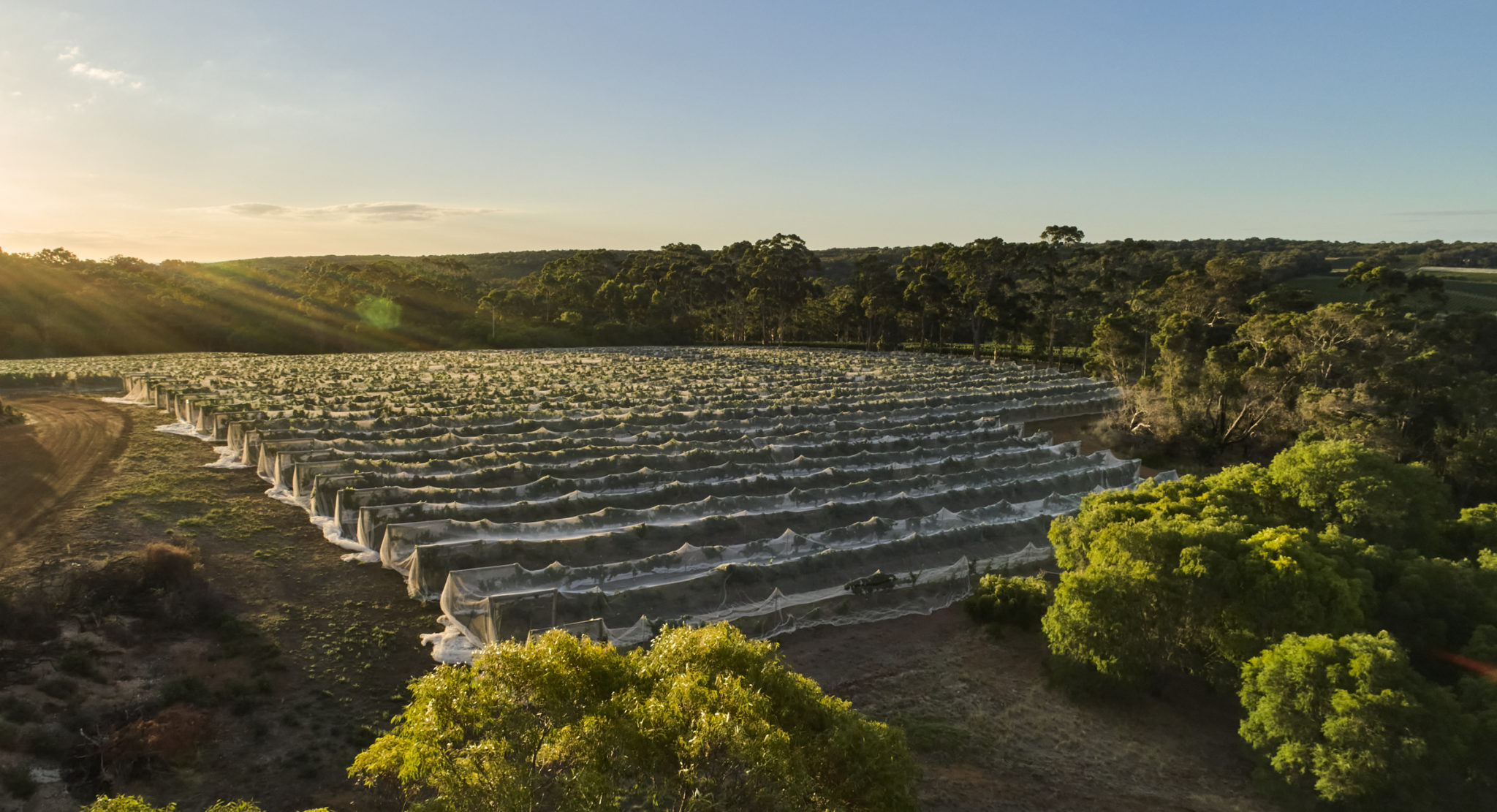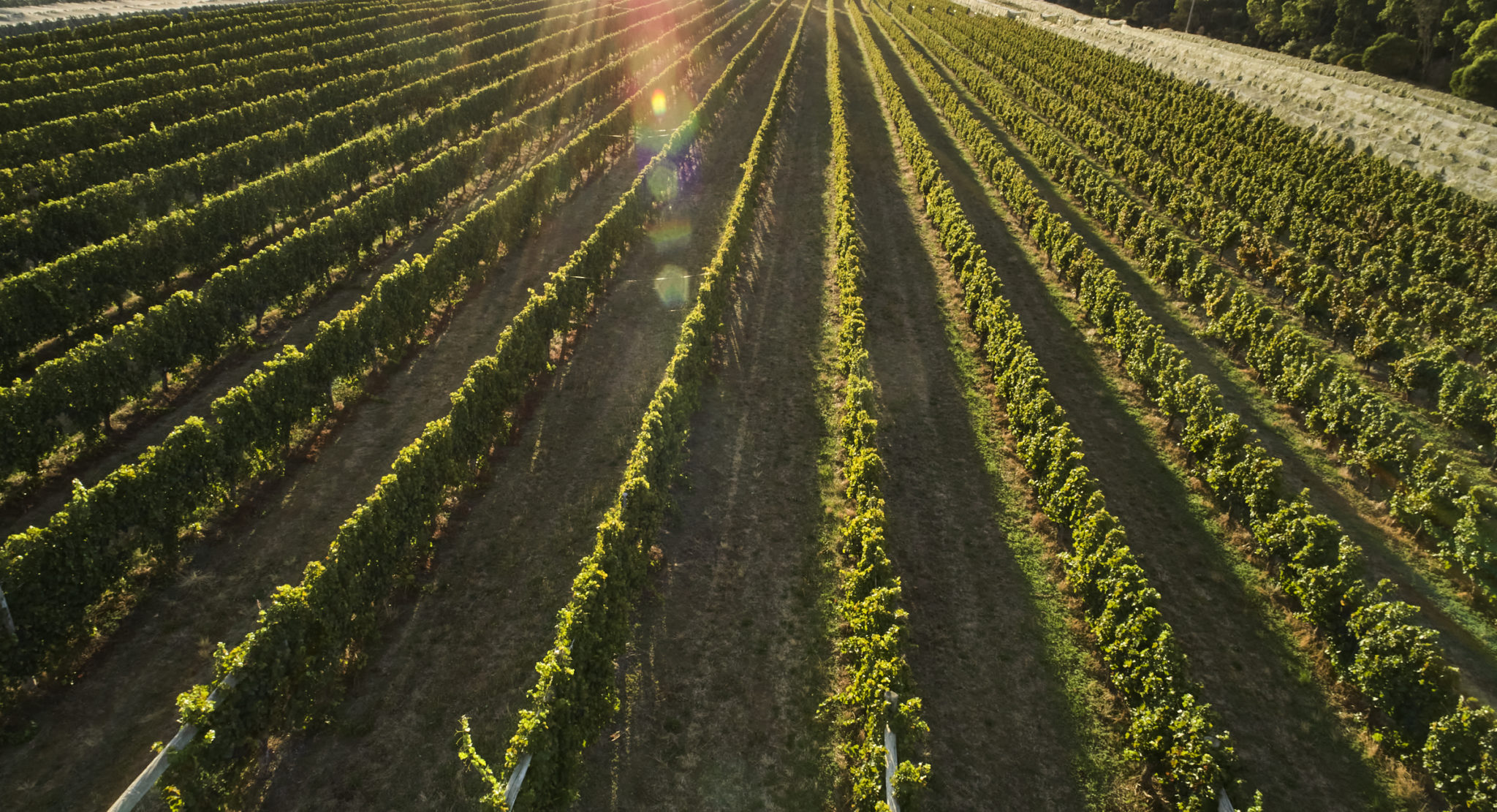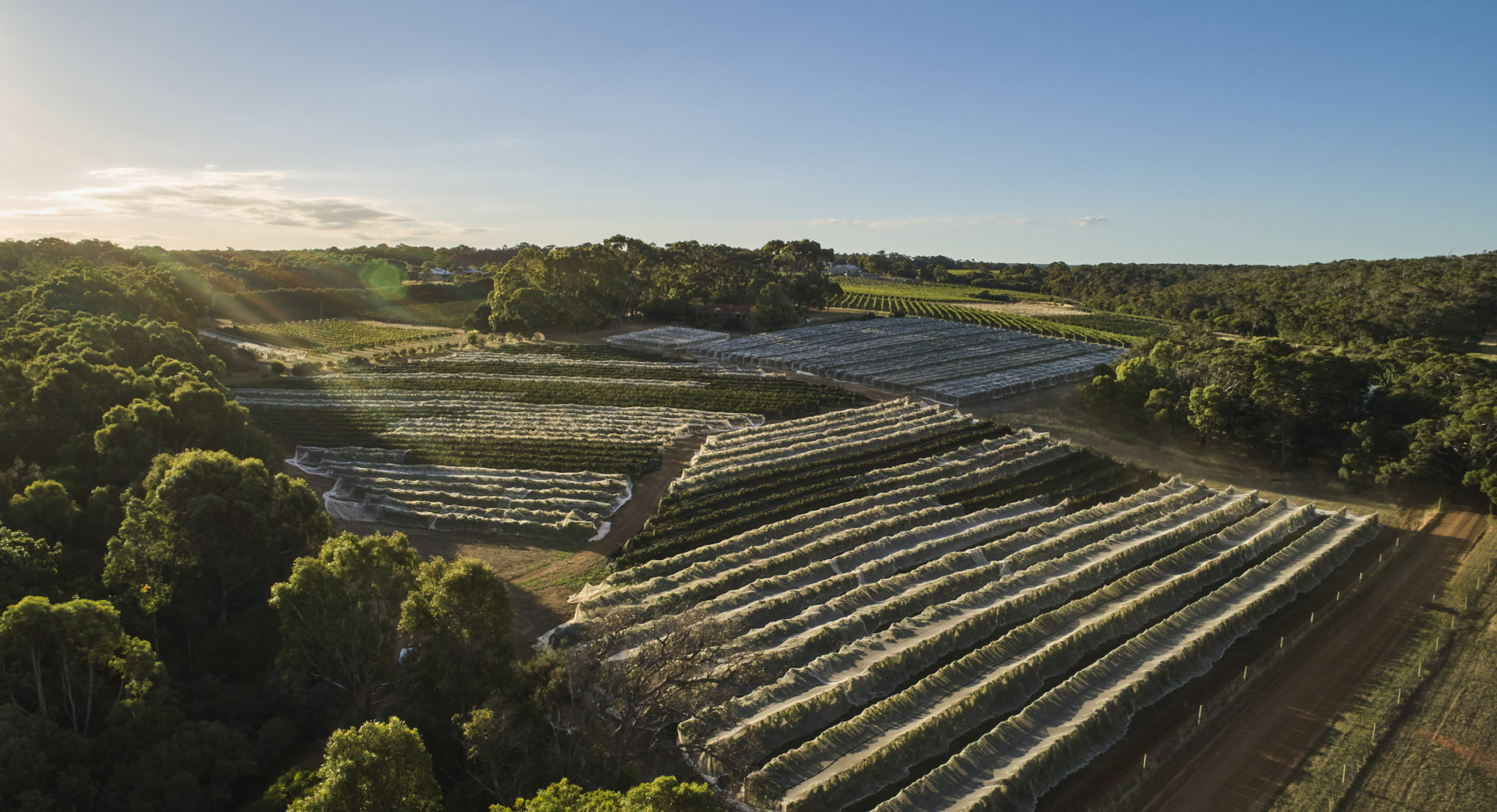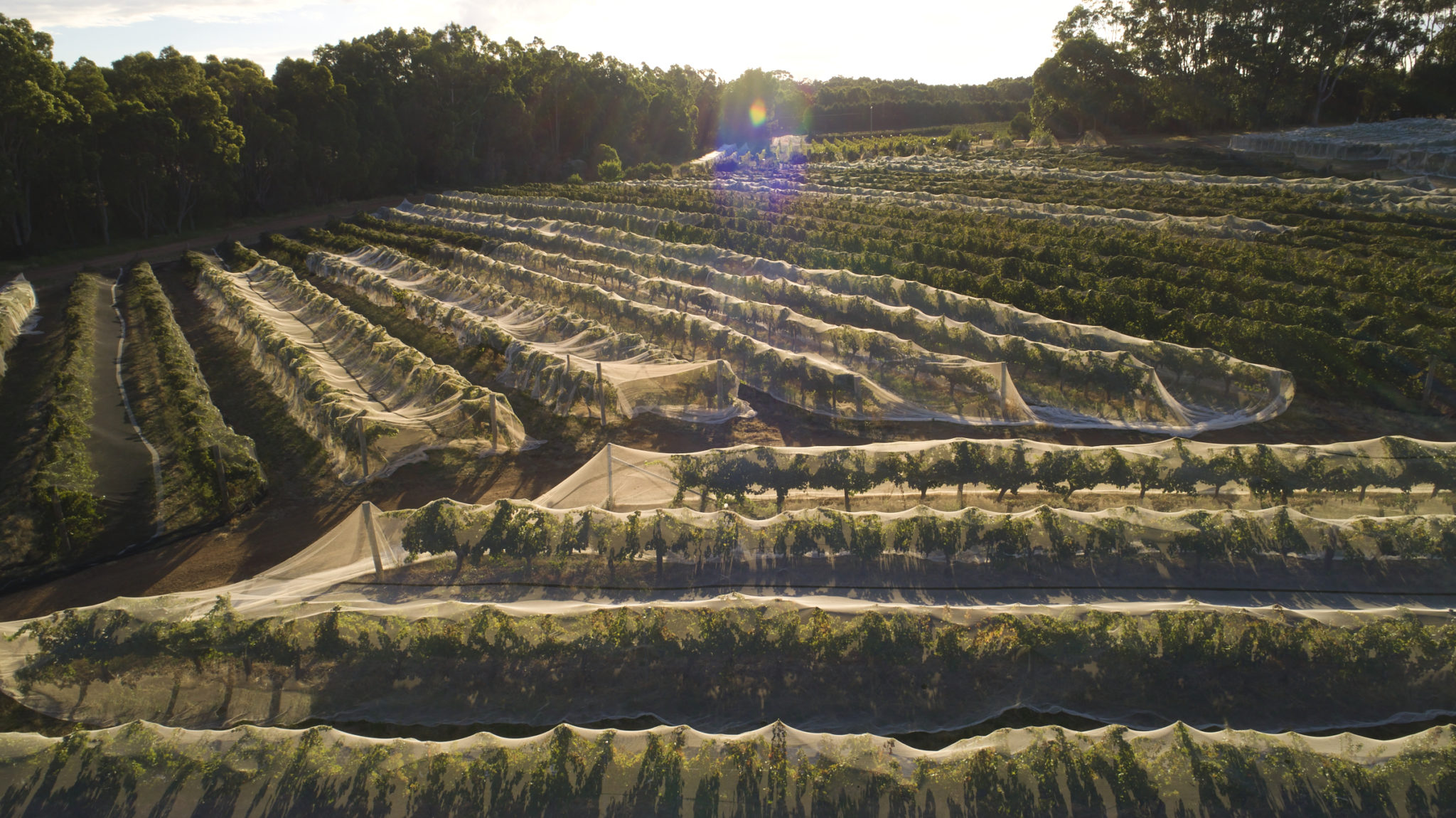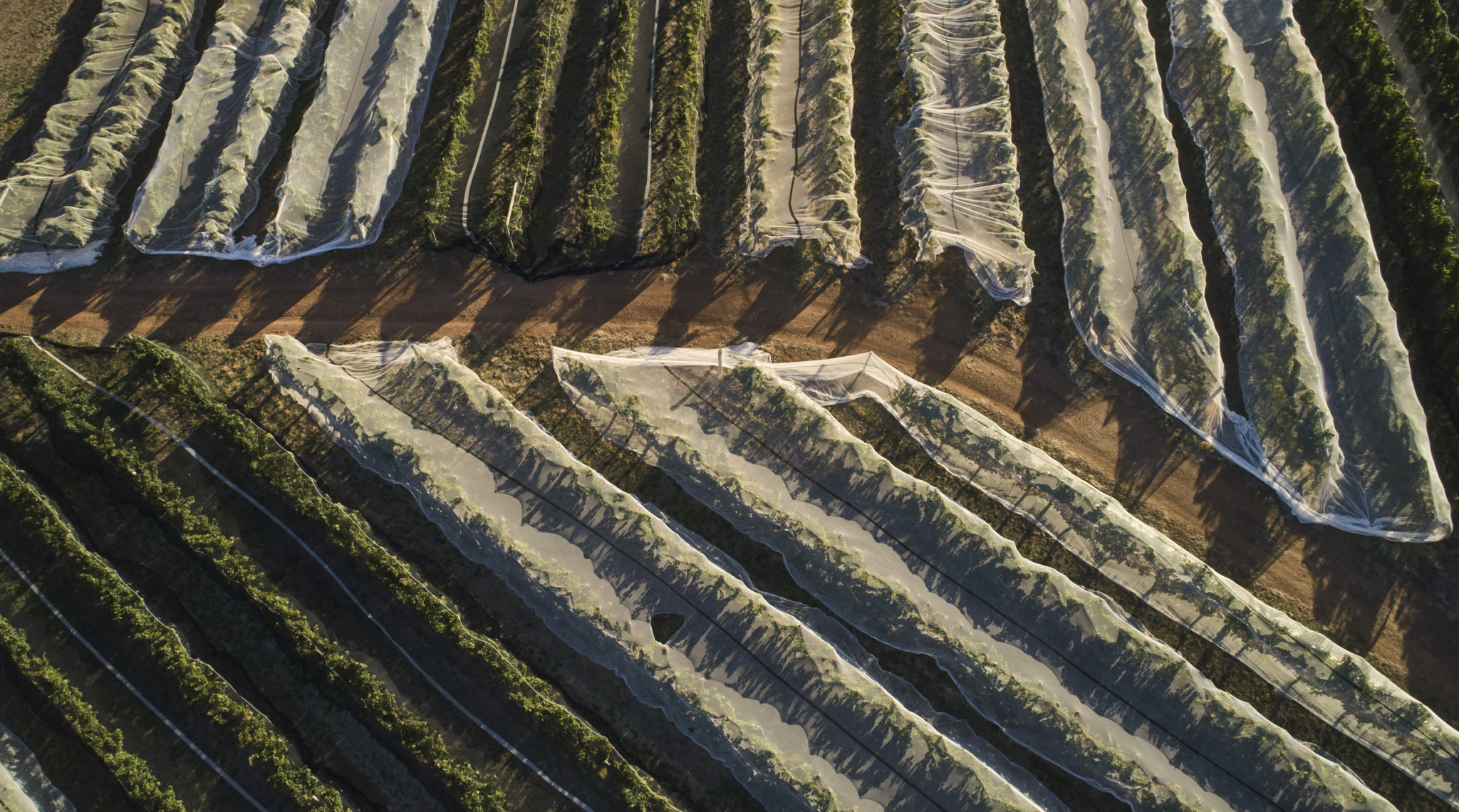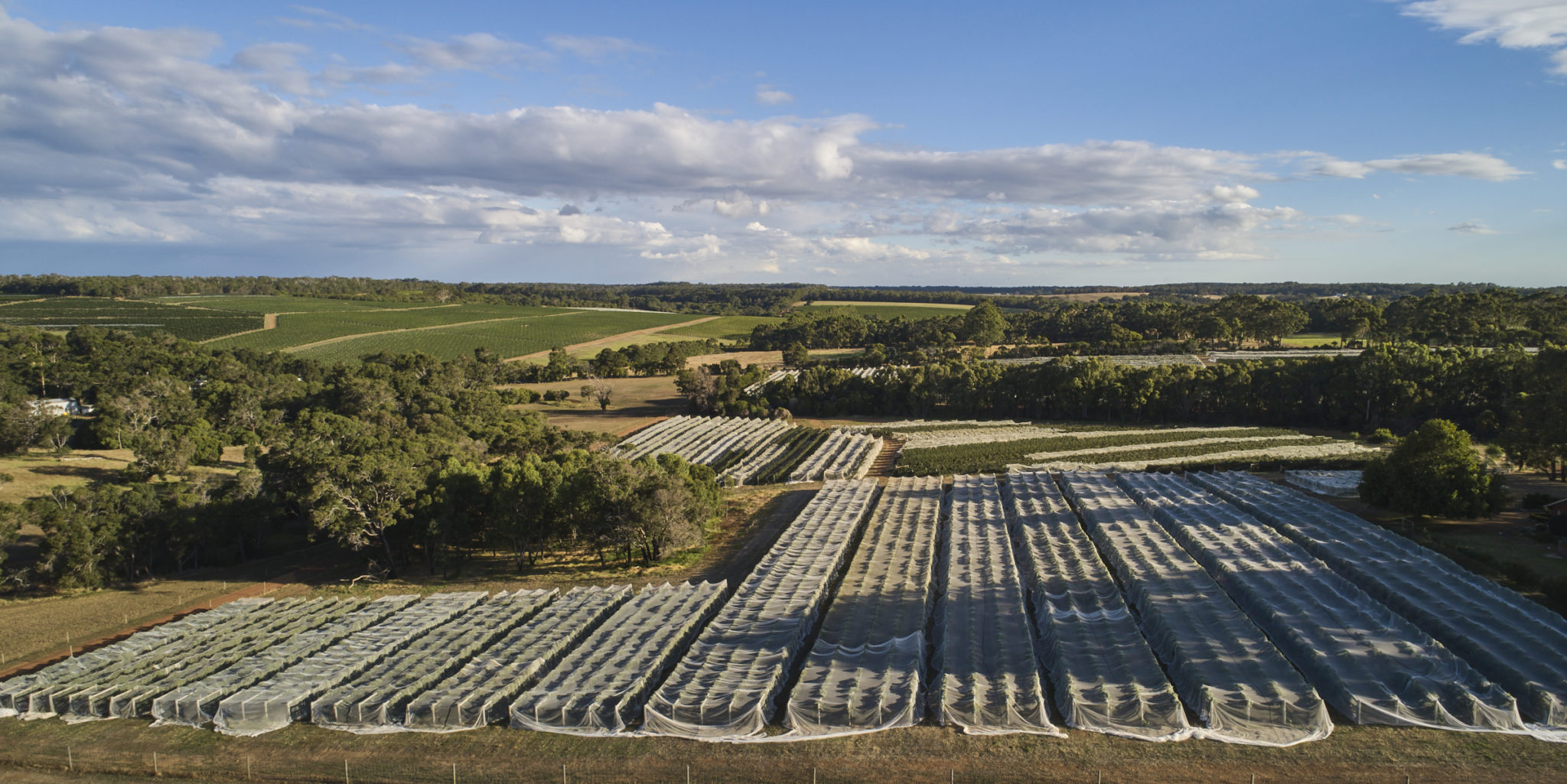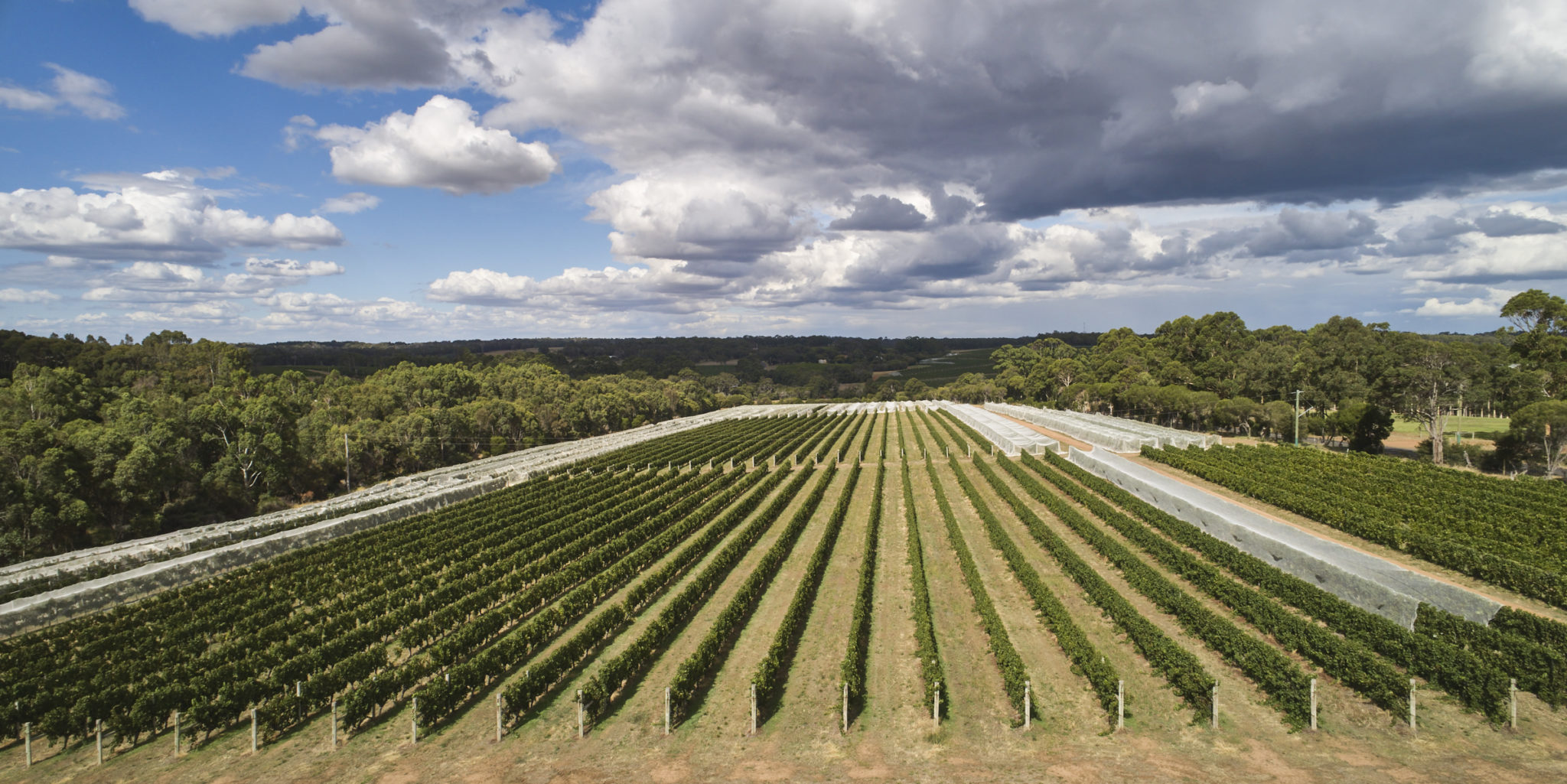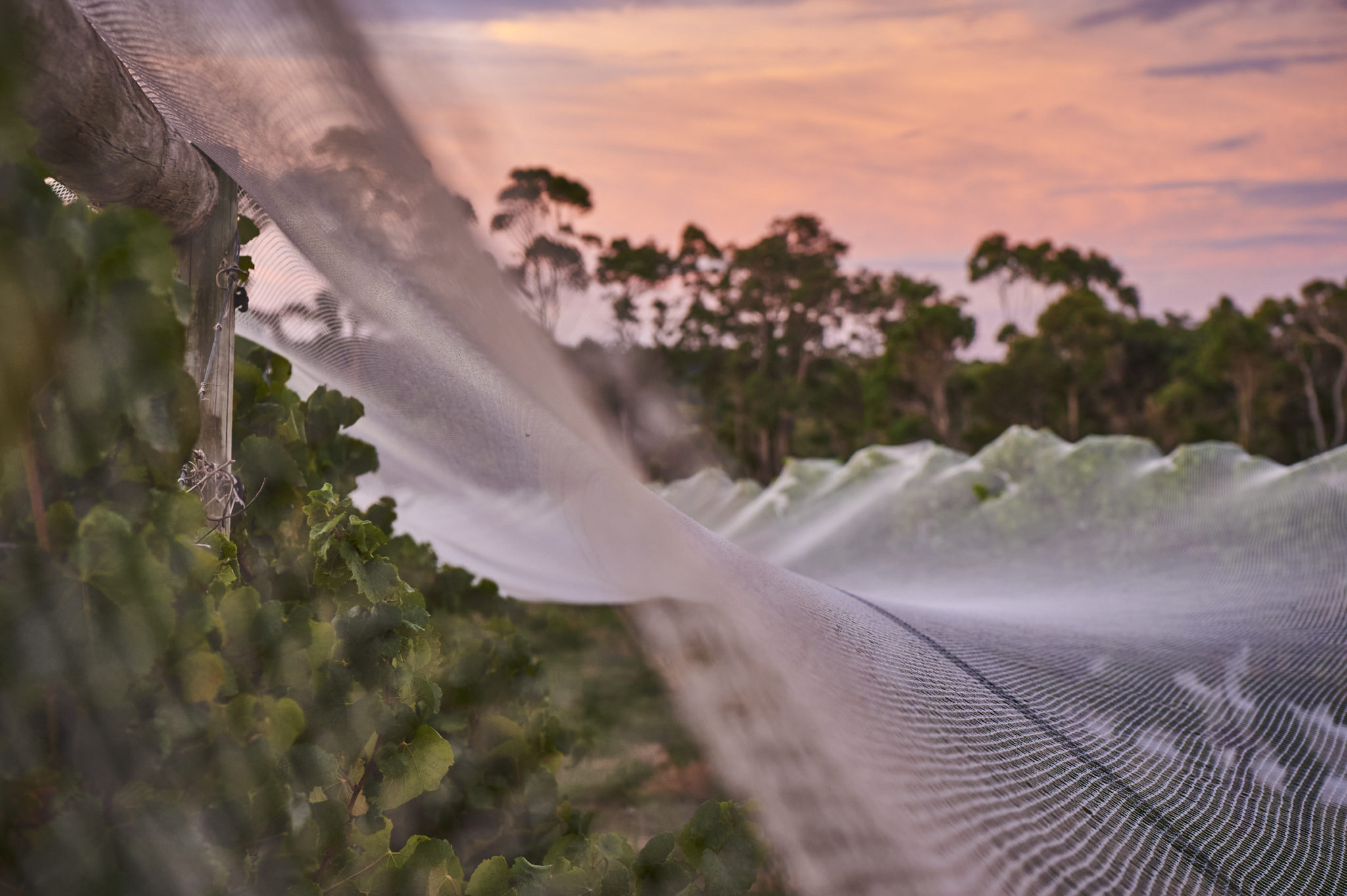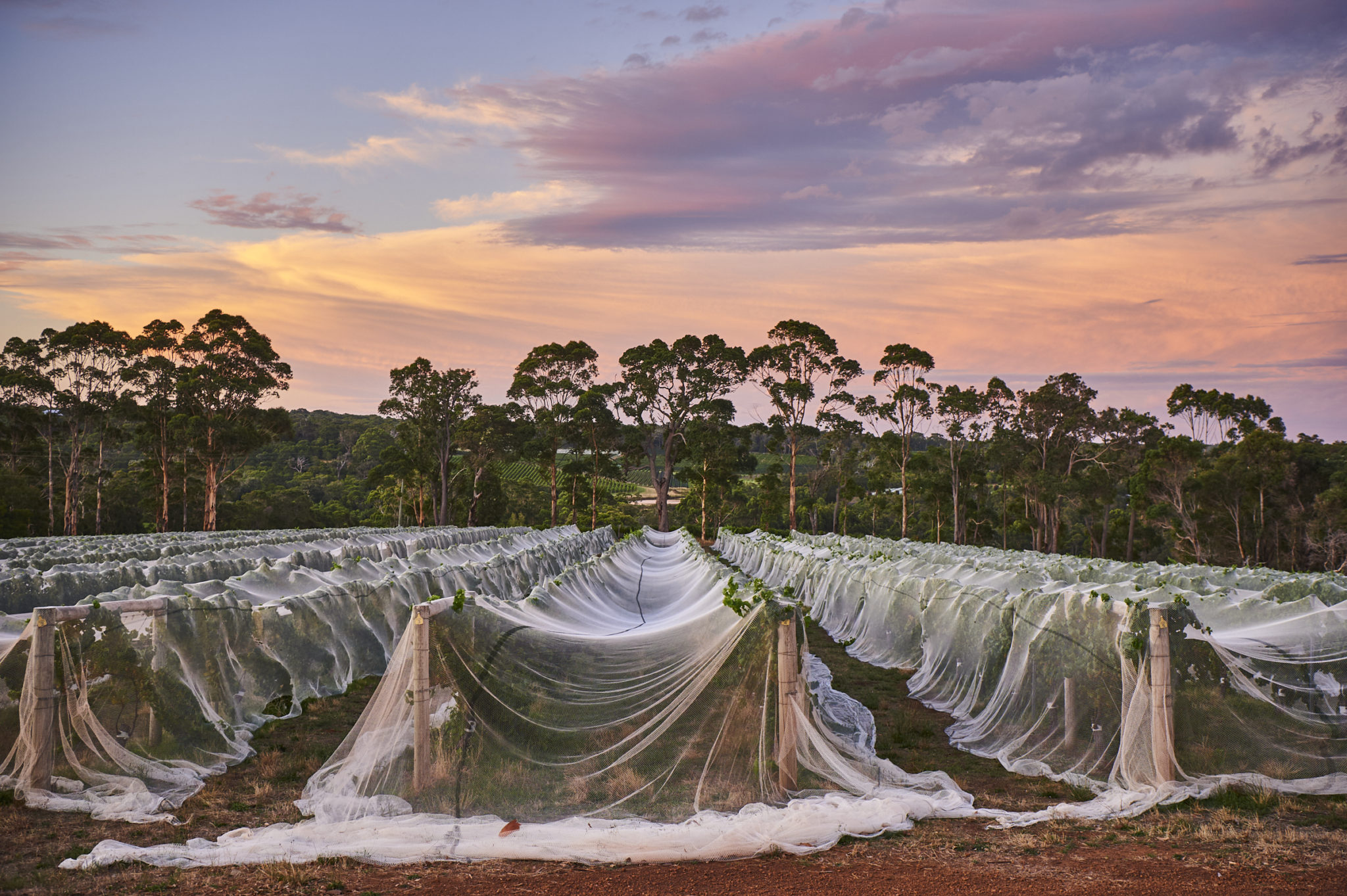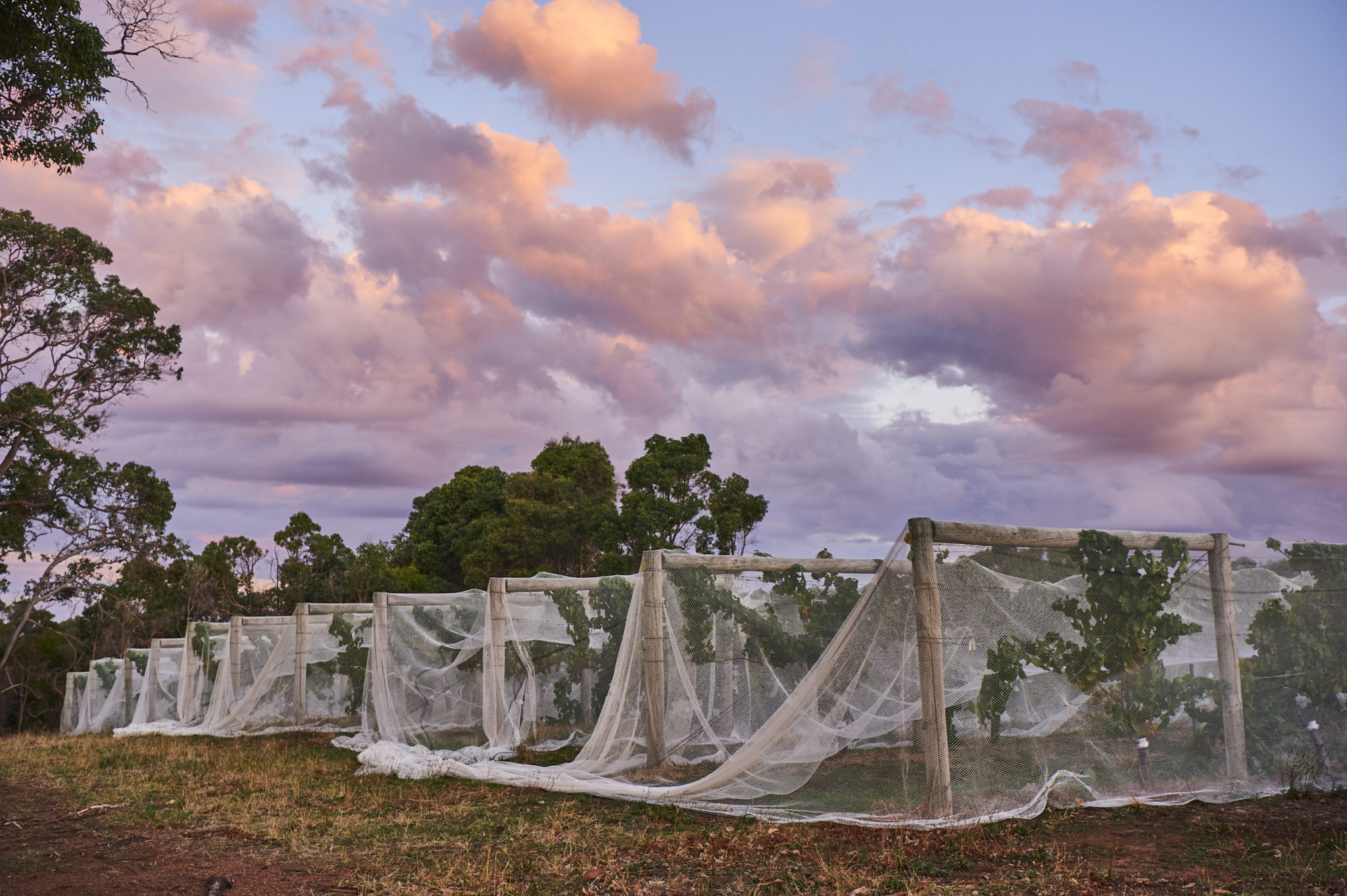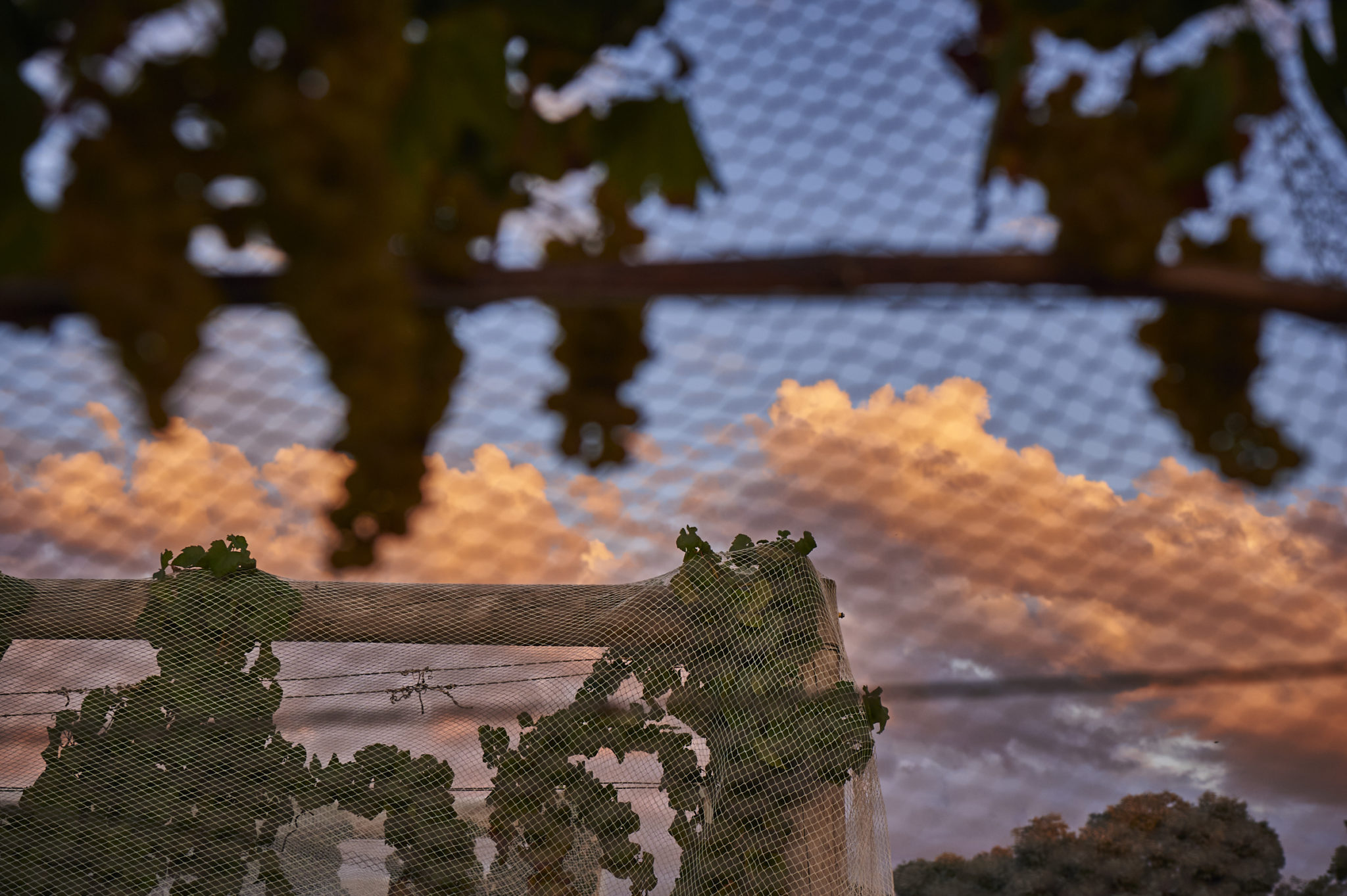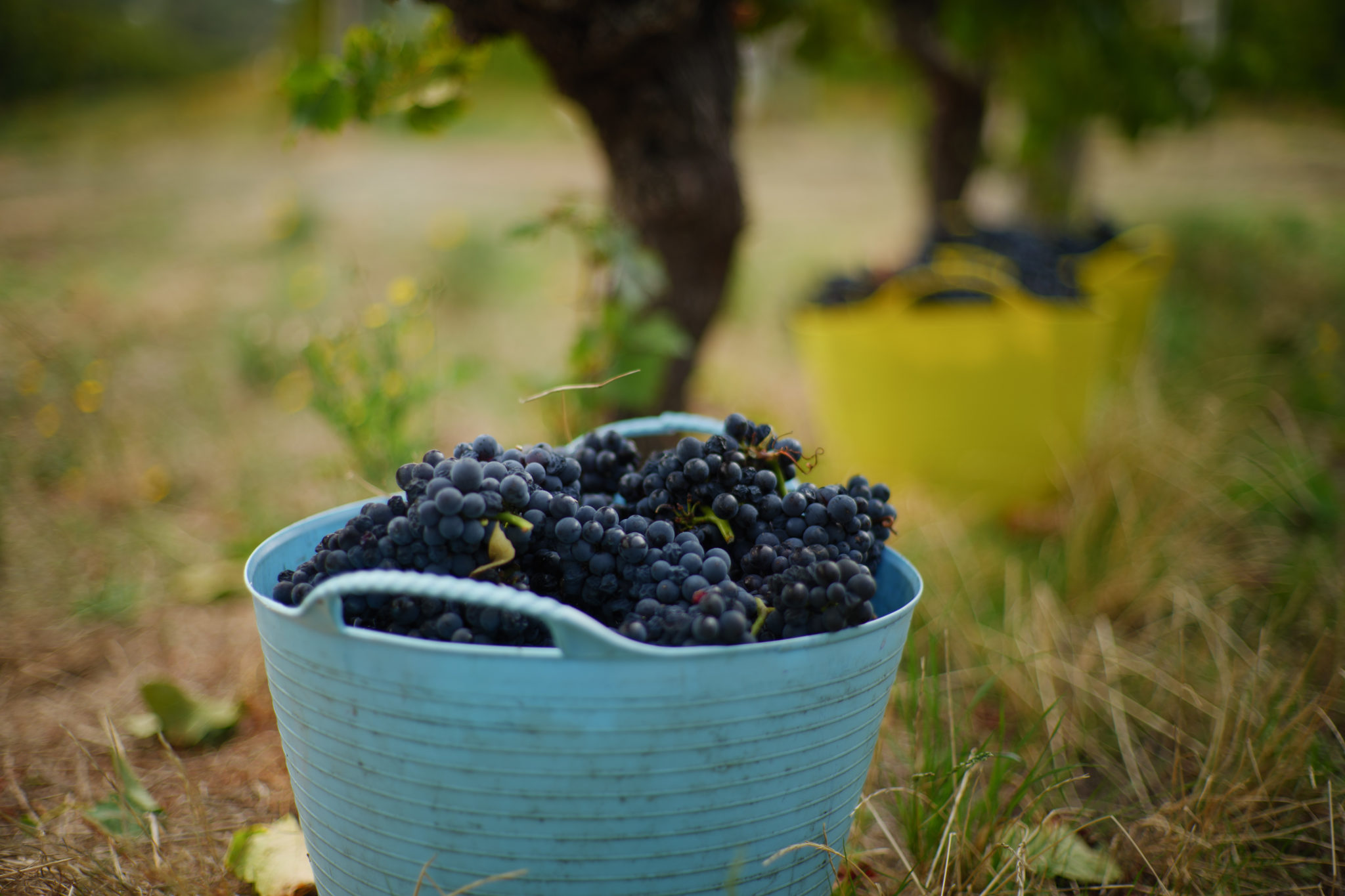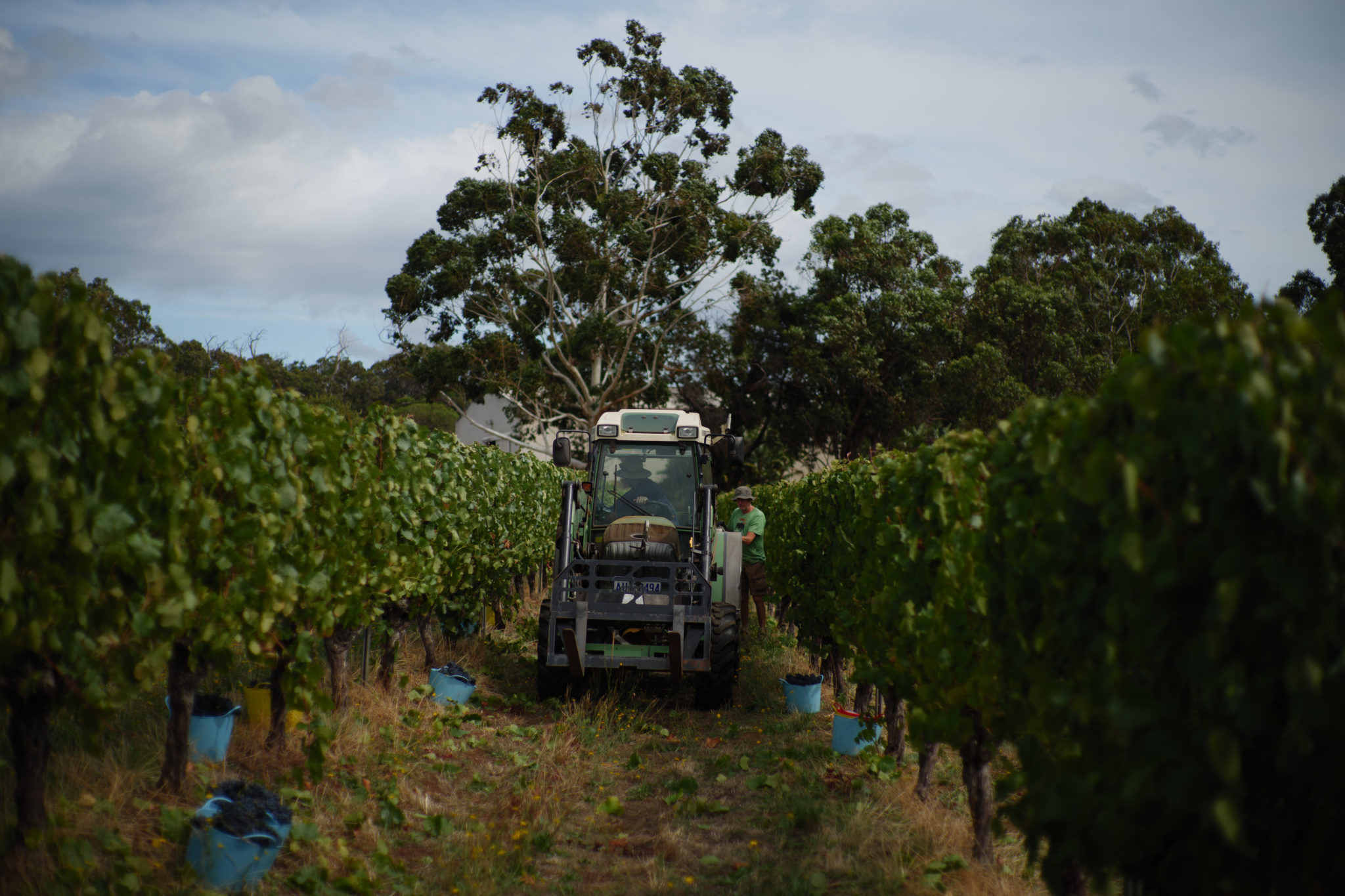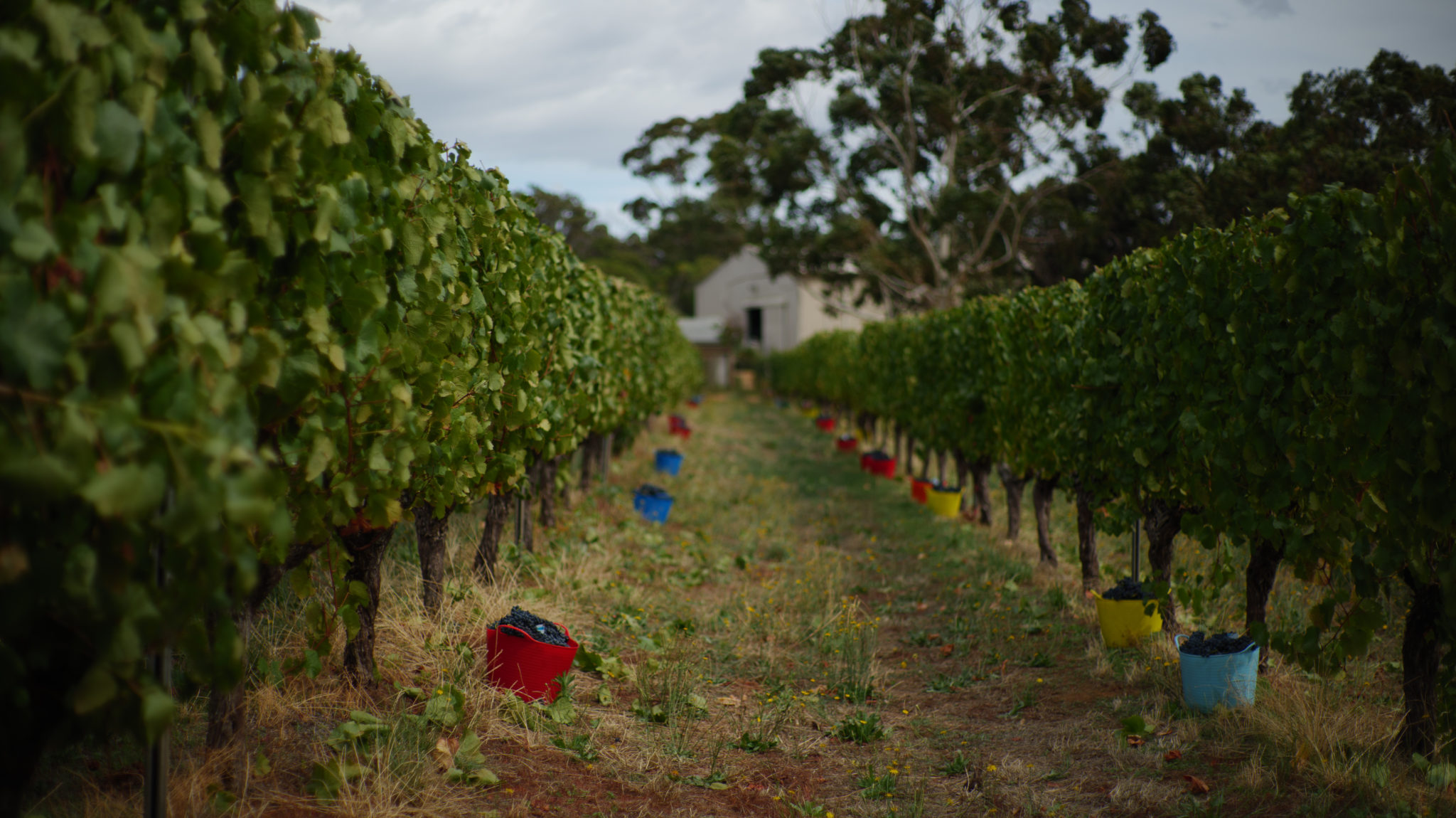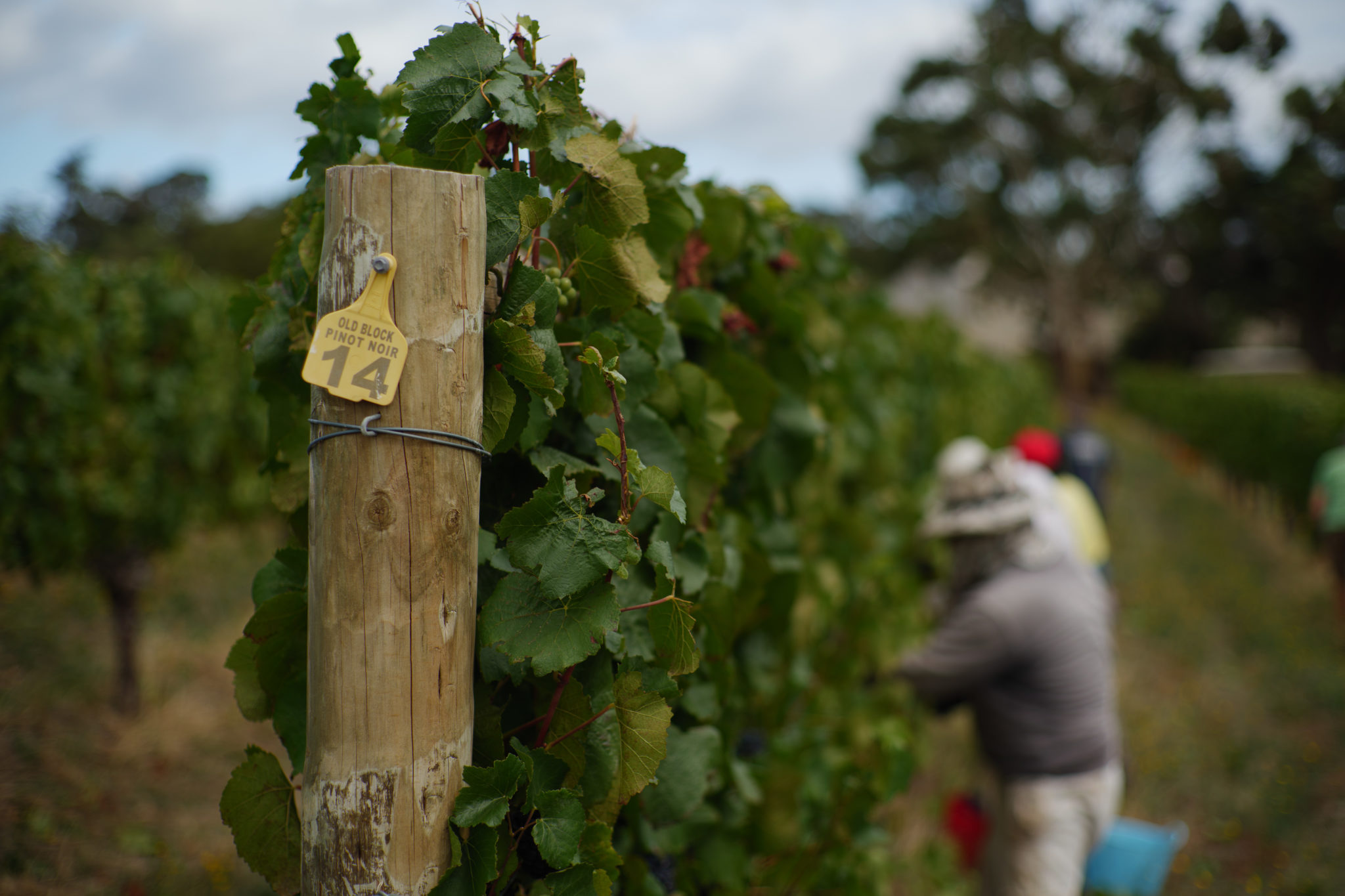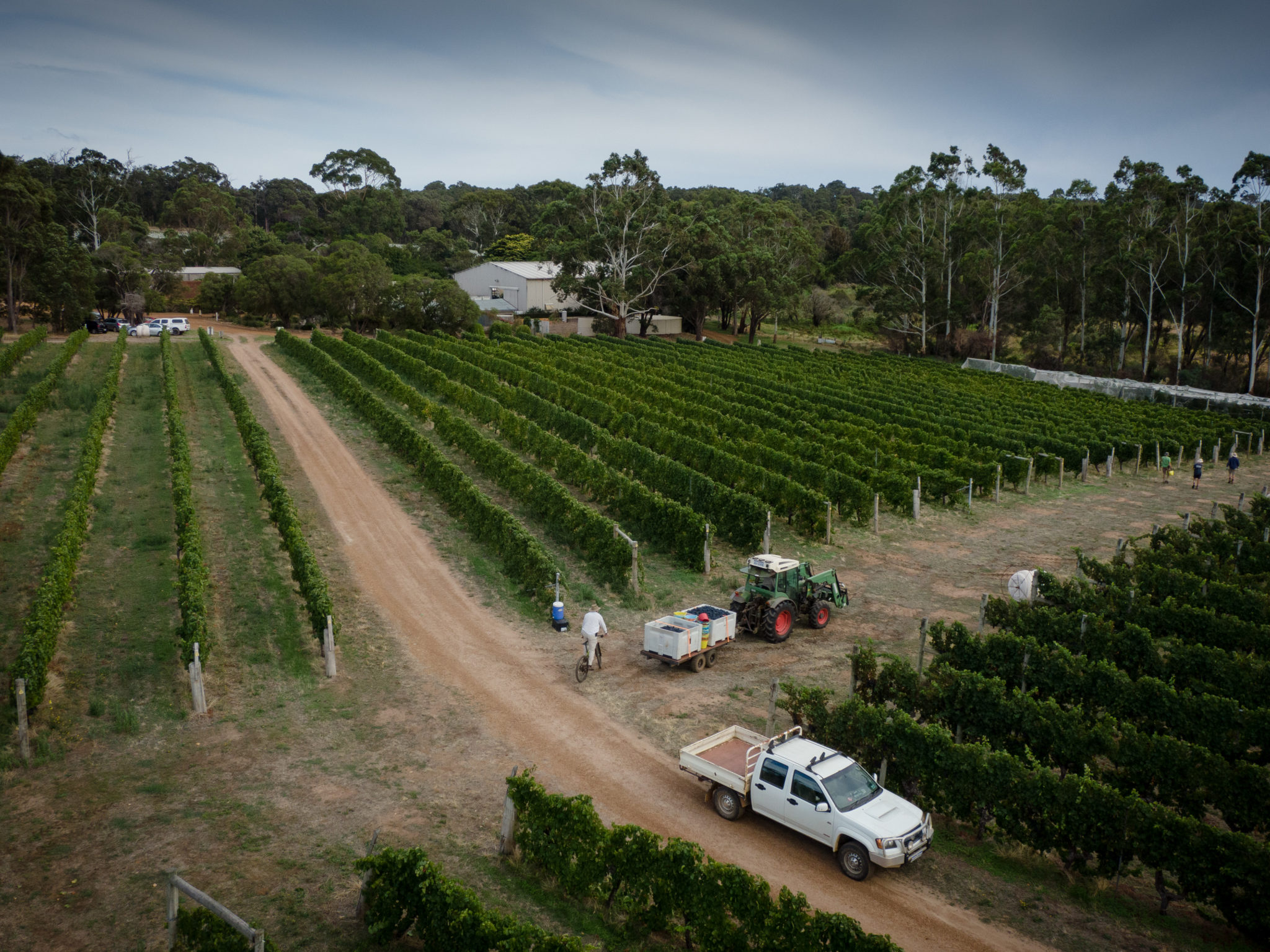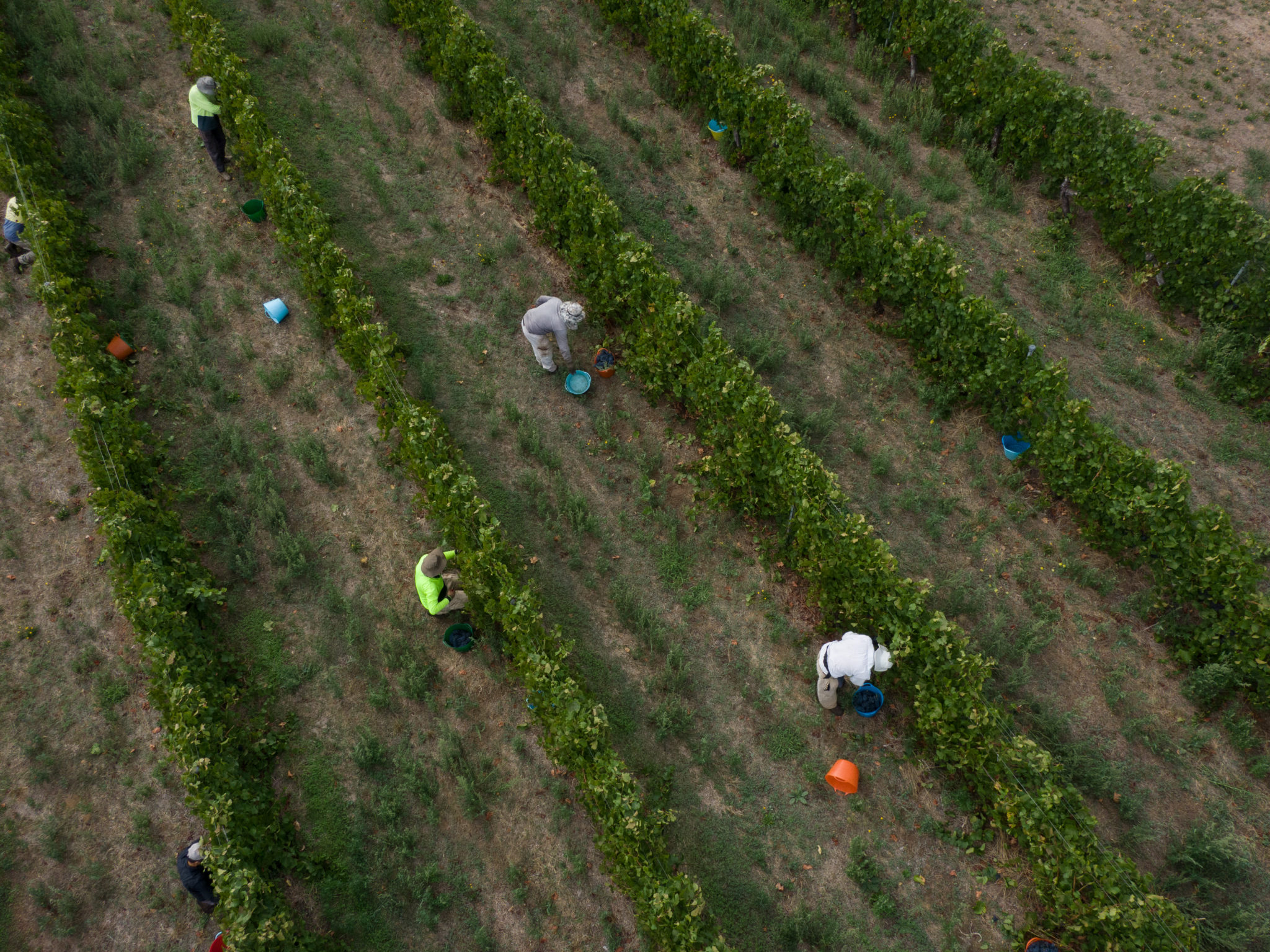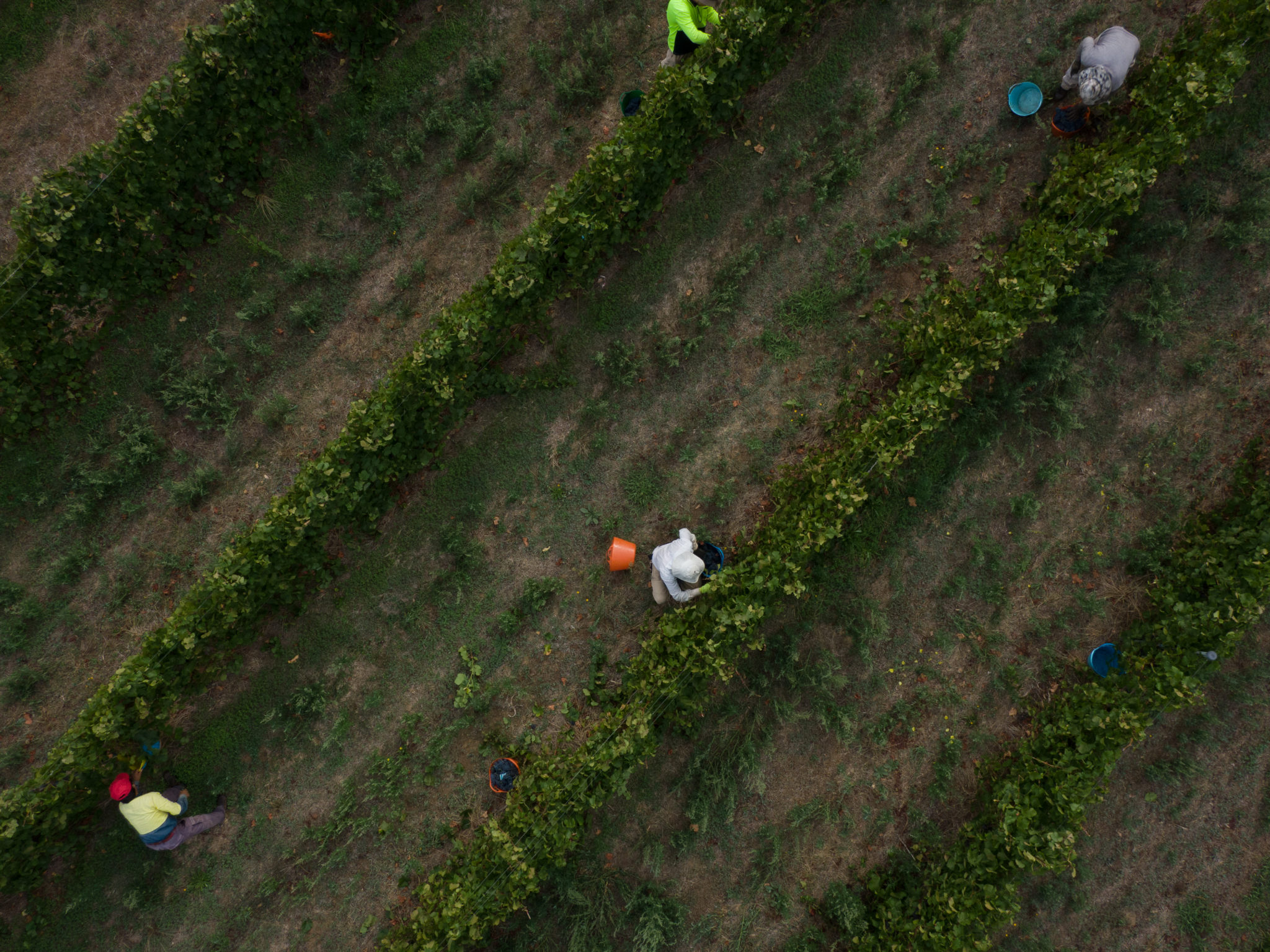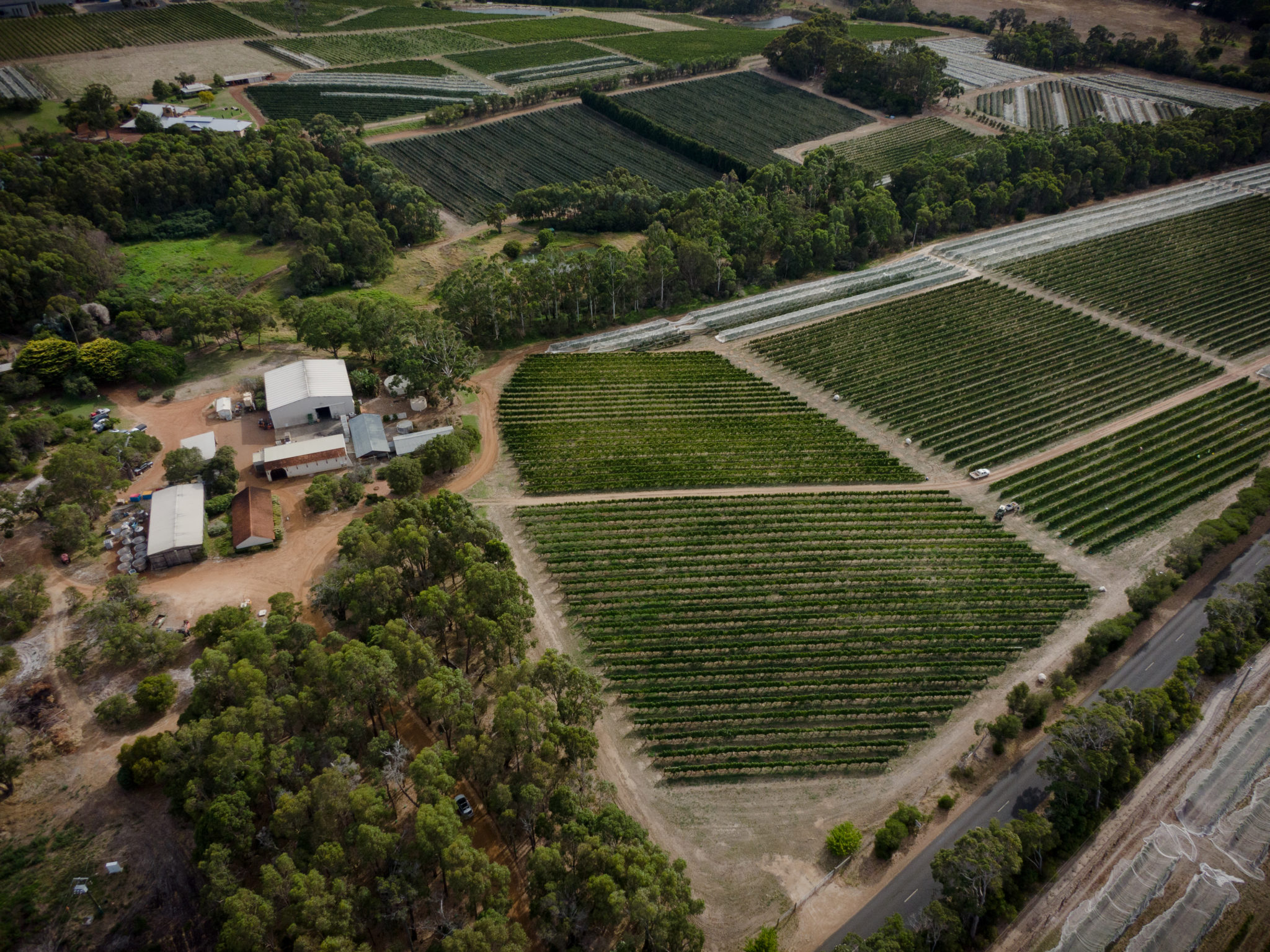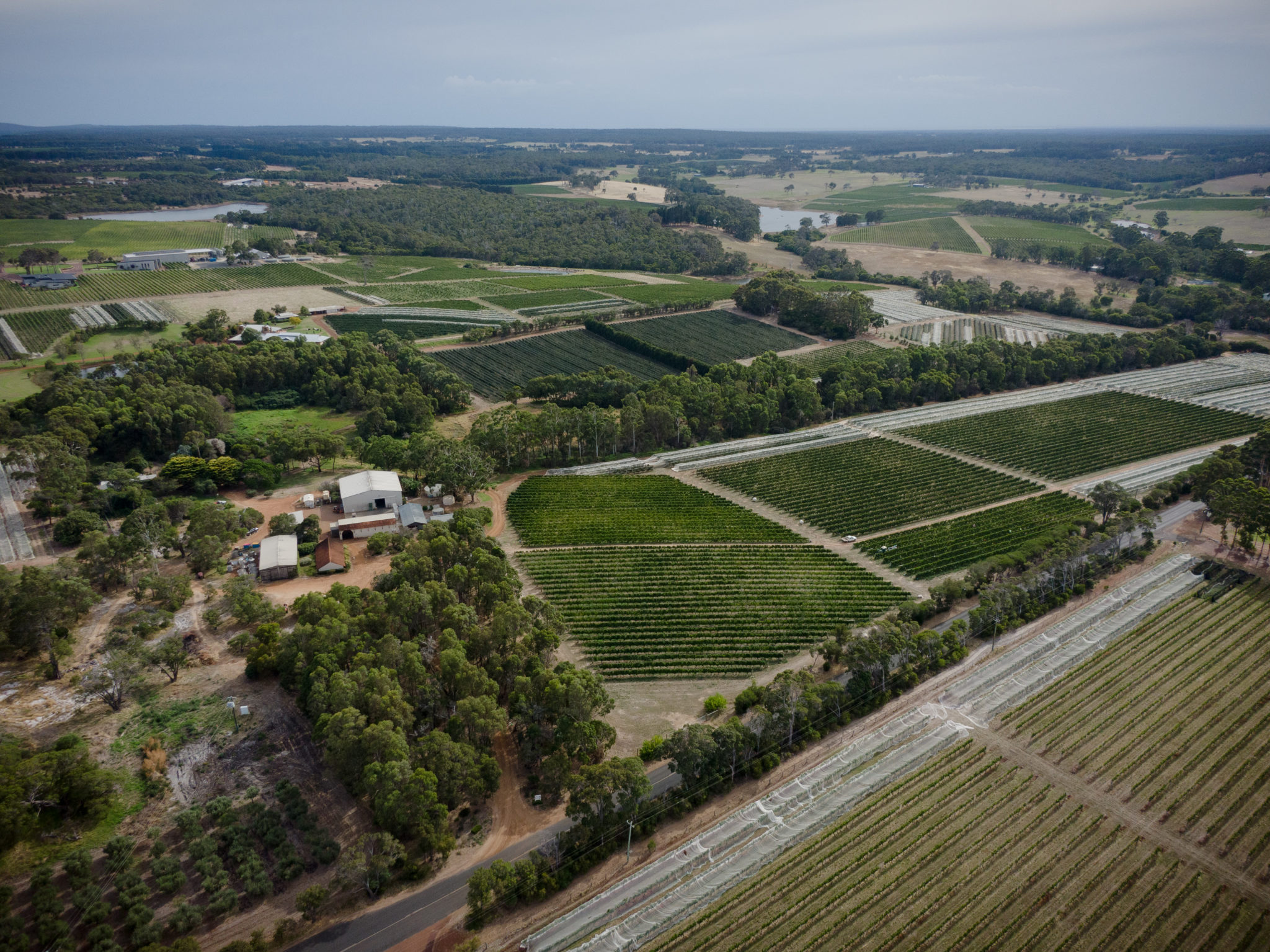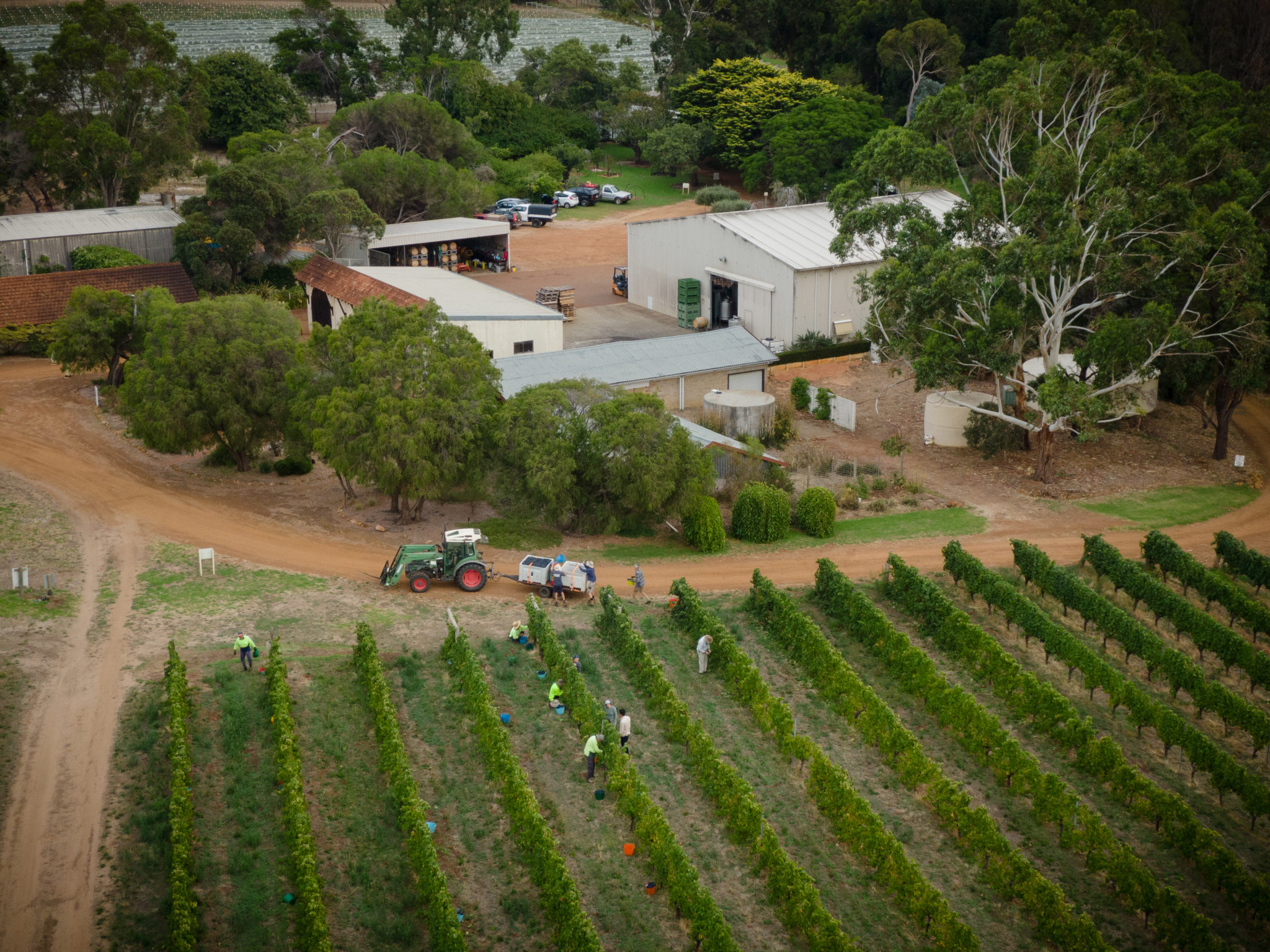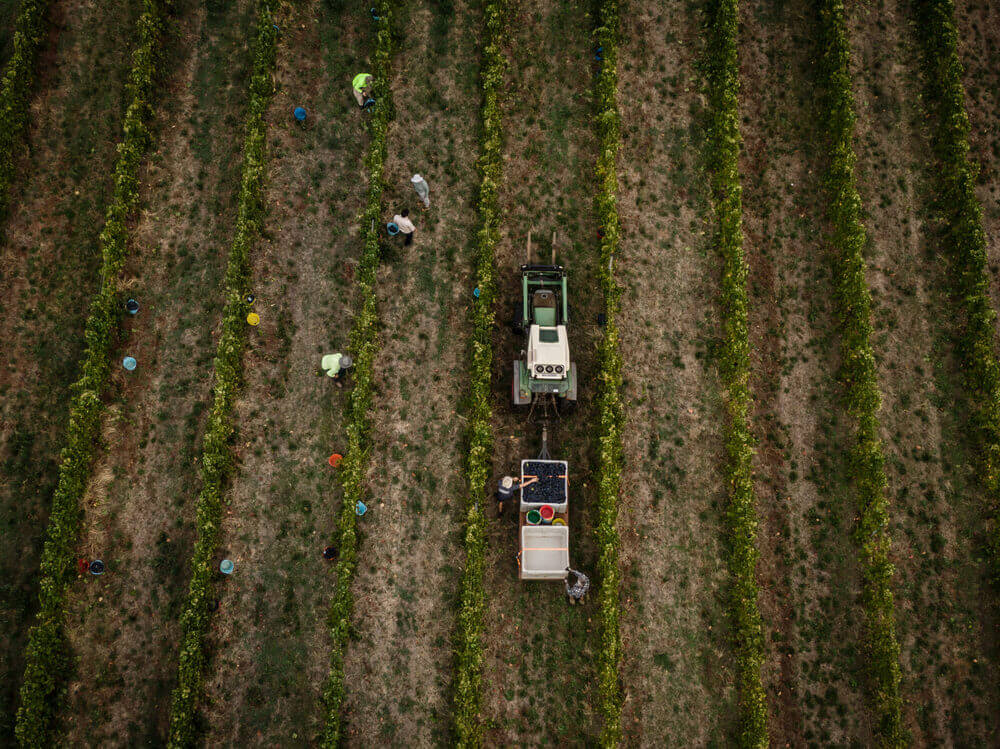Moss Wood Newsletter Autumn News Issue # 109 MARCH 2021
Moss Wood 2018 Cabernet Sauvignon
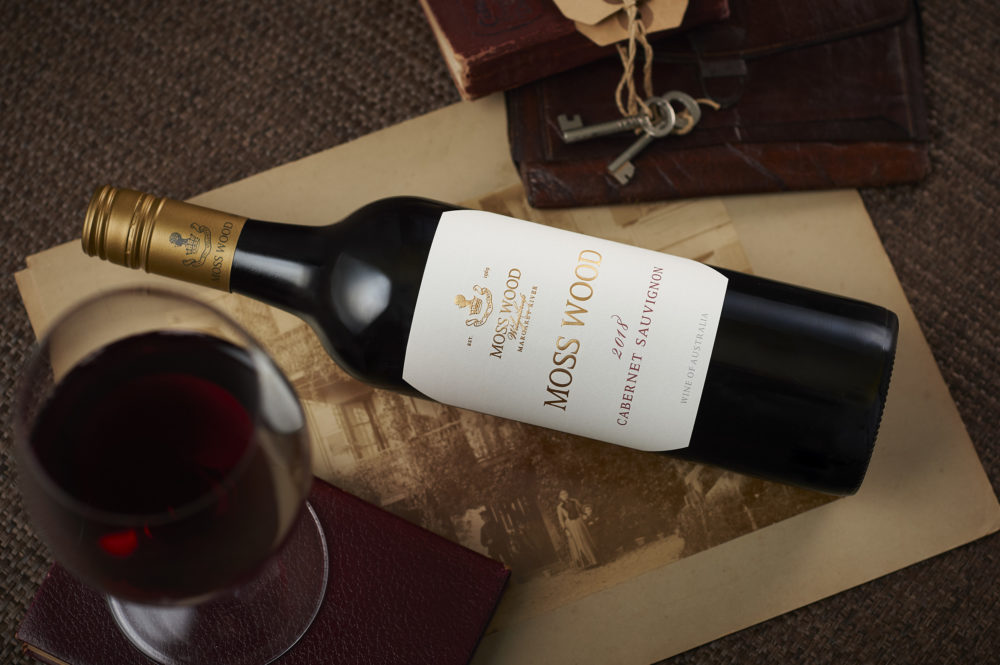
VINTAGE NOTES
In the eyes of the Mugford family, Keith is the resident nerd. Any Dads reading this will no doubt understand how proud this makes him feel. In fact, while admitting to nerd-like tendencies, mostly he obsesses about the weather, especially during the growing season. It comes up in conversation at Moss Wood a lot and which is hardly a surprise when considering how much is riding on it. We can illustrate this in two ways.
In order to keep the vineyard safe from fungal disease, we monitor the weather to decide how and what treatments we should use. For example, our primary cover comes from Sulphur, a topical treatment for powdery mildew, that washes off with too much rain. We have to keep a close eye on the amount and timing of precipitation and if we get too much, reapply a treatment, even if only a few days have passed since the last.
Another way of understanding the focus on the weather is to consider temperature and how its fluctuations affect us. In the end, the fundamental quality of the wines we make, from any variety, is entirely dependent on how well the grapes ripened and which is a direct result of the daily temperatures we receive.
We look back fondly at our early vintages and marvel at the innocence of the time. Of course, we tried hard to make the best wine we could but we knew so little about what we were dealing with. Each year was a new adventure and we sailed blindly into it, with very limited experience to use as a guide as to what quality and style we might expect. Of course, we had the excellent modelling by Dr John Gladstones, who’s work showed we could anticipate good quality in an average Margaret River season but that was nothing like the detailed understanding of the vineyard we have today.
With 48 vintages at Moss Wood under the belt, we now approach each season with clearer ideas. We monitor the vine growth stages and temperatures and can gain significant insight into what style of wine we might be heading for and what management techniques we can apply to give the best outcomes. It’s a lot different to the old days and no wonder we are obsessed by it.
There is, however, a delicious irony (bad pun used yet again). No matter what we know about the season we’ve experienced to date, we can never know beyond a day or so what the future holds. We’re never as smart as we think we are because Mother Nature loves to deal us wild cards. It’s the game we’re in. It is said the price of Liberty is eternal vigilance and this has been re-worked in the name of many causes so perhaps we could fashion it into a viticultural statement that the price of high-quality wine is eternal vigilance?
If we were lucky enough to be able to order up our growing seasons, we’d go to that web page and click on 2017-18 just about every time, although we’d probably hesitate over 2000-01 for a moment or two. It would be a tough choice deciding which of the two was better and since we’re talking nerdy stuff, let’s make the comparison. The mighty 2001 enjoyed a season where the average temperature was 19.4°C, and Cabernet Sauvignon took 126 days to ripen to 13.5°Baume, receiving 1210 hours between 18-28°C. The 2018’s numbers were 128 days to achieve 13.6° Baume, after 1197 hours. To give some idea of how similar these are, the average temperatures can vary between 18.7-21.1°C, days vary between 100-130 days and hours between 1000 and 1250. As an aside, these numbers might provide an insight into why Moss Wood Cabernet Sauvignon wines taste similar but never exactly the same.
For consumers, it’s what’s in the glass that matters and the same is true for us. As much as there is some wonderful consistency between those two years, when we decide on the picking time for any variety, it is always based on the flavours in the grapes. By monitoring the seasonal conditions, we were hopeful there would be exciting quality in 2018 because the temperature comparison with 2001 told us so. However, we made the decision to harvest when the flavour profile was at its best not when the numbers lined up, although we can see it’s no coincidence.
All this to tell you the 2018 growing season is one of the very best. We received above average rainfall for 2017 and to keep the vines well-watered, 267mm fell during the growing season, including a very handy 25mm in early February. Flowering conditions were largely benign, without serious interruption by heavy rain or low temperatures. There were no problems with disease and we kept hungry birds at bay by applying our nets. This meant yields were good with Cabernet Sauvignon up 18%, to 8.67 tonnes per hectare and Petit Verdot up 9% to 6.06 tonnes per hectare. Cabernet Franc let the side down slightly, with a yield reduction of 11% to 5.21 tonnes per hectare. Each variety marched comfortably through to ripeness on or a day or so later than average.
PRODUCTION NOTES
Having got to this point, readers may be asking themselves did we get the job done properly in the winery? Fortunately, the answer is yes. As is so often the case with the great years, the wine essentially made itself. For all 3 varieties, after hand picking and sorting, the destemmed fruit was put into small open tanks, seeded for fermentation with multiple yeast strains and hand plunged 3 times per day. Skin contact was a very typical 2 weeks, after which the wine was pressed to stainless steel tank for malolactic fermentation. Upon completion, each batch was racked to 228 litre French oak barrels, where it stayed for 30 months.
In October 2020 all barrels were racked and blended in stainless steel and the final blend consists of 92% Cabernet Sauvignon, 4% Petit Verdot and 4% Cabernet Franc. Fining trials were carried out and it was no surprise that none of the agents improved the tannin balance, so the wine remained unfined. It was then sterile filtered and bottled on 2nd November, 2020.
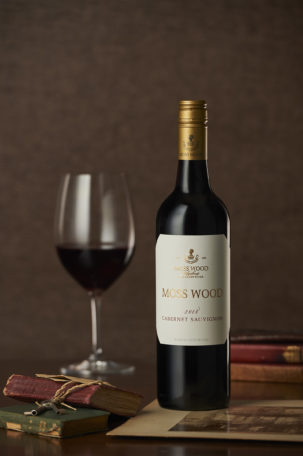
| Wine Facts | |
|---|---|
| Median Harvest Date | Cabernet Sauvignon 01/04/2018 Cabernet Franc 16/03/2018 Petit Verdot 02/04/2018 |
| Mean Harvest Ripeness | Cabernet Sauvignon 13.1°Be Cabernet Franc 13.2°Be Petit Verdot 13.8°Be |
| Yield | Cabernet Sauvignon 8.67 t/ha Cabernet Franc 5.21 t/ha Petit Verdot 6.06 t/ha |
| Weather Data | Growing Season Ave Temperature - 19.6°C Number of hours accrued between 18 and 28°C - 1197 Number of hours above 33°C - 16 |
| Days Elapsed between Flowering and Harvest | Cabernet Sauvignon 128 days Cabernet Franc 119 days Petit Verdot 125 days |
| Bottled | 02/11/2020 |
| Alcohol | 14.5% |
Wine Facts
-
Median Harvest Date
Cabernet Sauvignon – 1st April, 2018
Cabernet Franc – 16th March, 2018
Petit Verdot – 2nd April, 2018 -
Mean Harvest Ripeness
Cabernet Sauvignon – 13.1° Baume
Cabernet Franc – 13.2° Baume
Petit Verdot – 13.8° Baume -
Yield
Cabernet Sauvignon – 8.67t/ha
Cabernet Franc – 5.21t/ha
Petit Verdot – 6.06t/ha -
Weather Data
Growing Season Ave Temperature – 19.6⁰C
Number of hours accrued between 18° and 28⁰C – 1197
Number of hours above 33⁰C – 16 -
Days Elapsed Between Flowering and Harvest
Cabernet Sauvignon – 128 days
Cabernet Franc – 119 days
Petit Verdot – 125 days -
Bottled
02/11/2020
-
Alcohol
14.5%
Tasting Notes
Colour and condition
Youthful, dense ruby hue; bright condition.
Nose
This is one of the more ethereal Cabernet Sauvignons we have released. It combines both freshness, with the attendant perfumes of raspberries, roses and violets, and ripeness, featuring classic blueberry and red currant aromas, all courtesy of the terrific growing season. Behind these are the typical varietal complexities produced by long term barrel age including tar, wax, cedar, chocolate, mixed spices and tobacco. They all combine to give a volume seen only in the great years.
Palate
Expectations are high after such a promising nose and the same impact is immediately evident. A series of flavours flow across the palate, including blueberry, cranberry, red currant and liquorice, almost taking us back to the future with memories of the opulence of 1976, combined with the complexity of 2005. The structure is in the well-balanced Moss Wood mode, with full body, fresh acidity and soft tannins, with a touch of toasty oak, chocolate and cloves on the finish.
Cellaring
We enthusiastically recommend this wine for cellaring. It has the concentration and complexity to age gracefully for decades. However, there will be a dilemma to wrestle with in the short term because the fruit generosity and balance are such that it is very drinkable now. Our best advice is for those who are keen to cellar it and enjoy older wine, it should be kept for at least 10 years and by which time it will be showing some of its complex bottle bouquet and the structure will be starting to soften. However, full maturity is unlikely to be reached before 25 years of age and it should last for several decades beyond that.
2021 GROWING SEASON
At the time of writing, vintage 2021 has just got underway with our first pick of Pinot Noir on 1st March. The season has been generally very good to us, if somewhat mild. We had good rains right through spring but we avoided any serious problems with the weather. Mother Nature was in a benign mood and spared us strong winds and hail, although there was one day where she flexed her muscles with the latter but allowed us to get through largely unscathed. Let that be a warning to you appears to have been her message.
The lesson came on 6th February when a cyclone remnant delivered just over 80mm rain and we held our breath for a week or so while we waited to see if we developed any disease. Coming fairly late in the season, as it did, meant the fruit on the early varieties was quite soft and so splitting was a risk. In the end, our spray program worked and damage was minimal. Some berries popped off in the Pinot Noir and there was some splitting in the Semillon, but that was the extent of things, so there were smiles all round. In trying to explain our good fortune, it seems we’re helped by our gravelly soils, which allow the water to drain away fairly quickly, reducing uptake by the vines and also the humidity in the vineyard.
Aside from the above, it has been a very mild summer and so the vines have ripened slowly and we find ourselves waiting patiently for each one to mature. Looking at recent seasons, the temperatures have been slightly warmer than 2017 but slightly cooler than 2018, so we are looking forward to good quality.
VINTAGE CREW
Despite the difficulties caused by Covid-19 and the ever-changing Western Australian border situation, we have been lucky enough to assemble a good bunch of people to help us through the vintage. There were times when we’ve wondered whether we’d find anyone who was able to join us but things have worked out well.
Courtney Plowman is this year’s Adelaide University Oenology student doing her 4th year industry placement. Courtney’s arrival confirms how small the world is. She hails from Golden Grove, a north-eastern suburb of Adelaide, where Keith has a strong family connection. When a South Australian meets another Croweater, it’s fairly certain there will be, at most, 2 degrees of separation. This was further confirmed when we learned Courtney’s Mum is from Western Australia and so she has many local cousins, proving very useful from an accommodation point of view, something that is scarce in our region at the moment. More importantly, Courtney and her Dad had come to visit Moss Wood during a family holiday in 2005 and we’re pleased to learn we looked after them well and she has fond memories and was keen to come and work. As a keen AFL footballer, she plays with the Eagles in Adelaide and has continued to train here with the Busselton Magpies. Alex and Hugh are barely able to tolerate this since both play for reigning Onshore Cup premiers, Dunsborough Muelies, and who’s fiercest rivals are the Busselton Bombers. Luckily, they can still find it within themselves to enjoy a chat over lunch. Just don’t mention the footy.
Local boy, Tom Hansen, drives up each day from Karridale, down in the deep south of the Margaret River region. We like to remind him how nice it must be to leave behind all the fog and drizzle and enjoy some sunshine and warmth up in Wilyabrup. Tom is an Agricultural Science graduate from the University of Western Australia, with a particular interest in soils and soil management. Coming from a wine area, he also has an interest in viticulture and is enjoying, so far at least, the practical aspects of the Moss Wood vineyard and winery. UWA Agriculture has provided some well-known alumni into our industry, not the least of whom is Dr John Gladstones. If Tom stays in the wine game, he’ll be a worthy addition to a very distinguished list. We say this, despite him being a rabid Dockers fan. Alex and Frank now have another Fremantle supporter to back them up against the West Coast-dominated lunch room. We forgive him for that.
Next on the list is Ana Hranilovic, or more precisely, Dr Ana Hranilovic PhD, who brings a very impressive CV. Ana is Croatian and studied Horticulture at the University of Zagreb then took her Masters, part of which she completed at Montpellier University in France. It was at this very famous viticulture institution that she picked up an interest in vines and after working in France, was accepted into the Doctoral program offered by the Australian Research Council at the Australian Wine Research Institute in Adelaide, where her thesis investigated low alcohol-producing yeast strains. Ana is focused on the practical application of science and enjoys seeing the commercialisation of new technologies. To this end, she’s working with the big French wine industry supplier, Laffort, to see a new yeast strain released to winemakers and we have agreed to trial it at Moss Wood this year. The vintage completes her time in Australia and we’re very fortunate she’s decided to make Moss Wood her swansong. In the meantime, we’re still trying to work out why she’d rather live in Bordeaux than Margaret River. Go figure.
Martin McQuone was involved with the hospitality industry in the UK until he moved to Western Australia in 2012, where he worked for a year with Old Kent River winery, in the Great Southern Region. From there he joined Old Bridge Cellars in North Fremantle and got involved with the retail selling side of wine. He enjoyed the change and during his stint there he qualified to Level 3 with the Wine and Spirit Education Trust. His enthusiasm for wine was set but Marty is also good with his hands and working in carpentry took him into events management. He has worked quite widely in the Fringe Festivals, including Edinburgh. After a stint with the Adelaide Fringe, he wanted to move back to Western Australia and was expecting to work with the Perth Fringe on his way to Moss Wood, when Covid-19 made yet another disruption. Mark McGowan closed the state border and the best laid plans of mice and men turned to mush. Luckily for us he has made his way through the quarantine maze and is now applying some of his events management expertise to the Fringe comedy, otherwise known as the Moss Wood vintage.
Last, but certainly not least, we welcome Ida Mosberg, who joined us in January to help fill the shoes of our much-loved Bonnie Tollafield. Ida is Danish and has just completed her Master of Wine Business at Adelaide University. She brings with her a range of experience which includes retailing, courtesy of working in her Mum’s wine business, Vinspecialisten Mosberg, at Gilleleje, about an hour’s drive from Copenhagen. While at Adelaide University she worked in the Barossa Valley at Barossa Wine and Grape, the industry body for the Barossa Valley grapegrowers and winemakers, helping in administration. While up that way, she also worked for the famous Rockford Estate in their cellar door but she loves the practical side of wine production and worked in the vineyard as well. Ida has wasted no time getting stuck in at Moss Wood, dealing with customers and helping out with the vintage. When we give her time, she even seems to be enjoying the Margaret River lifestyle. A friendly and engaging soul, Ida always brings a friendly face and engages with her workmates. Unless we needle her with a bit of northern European humour. As a proud Dane, she doesn’t take kindly to being mistaken as a German.
Order
OUR WINES:
Contact
MOSS WOOD:
Location: 926 Metricup Road, Wilyabrup WA
Postal: PO Box 225, Cowaramup WA 6284
Phone: +61 8 9755 6266
Fax: +61 8 9755 6303
Follow us on
SOCIAL MEDIA:

